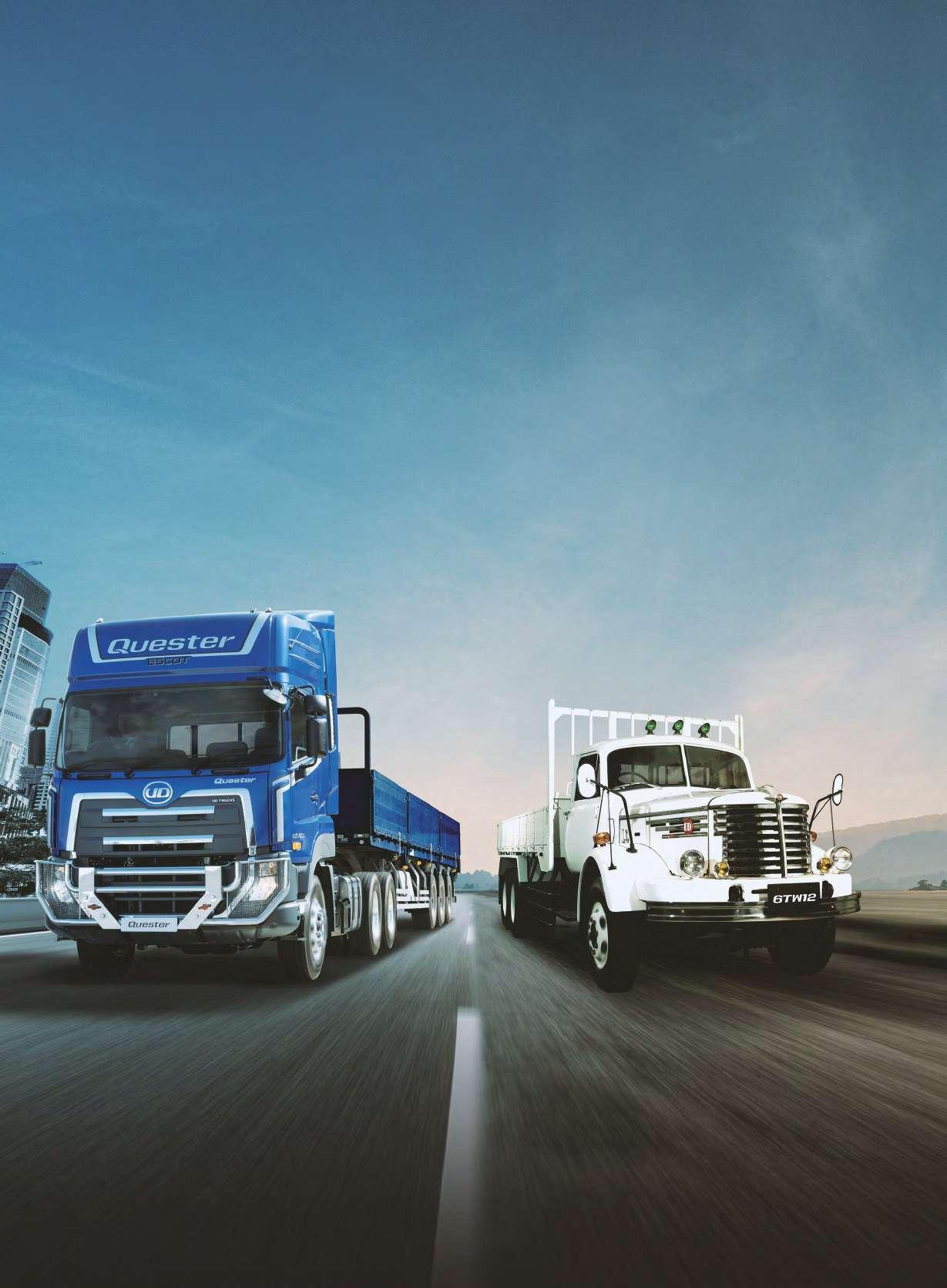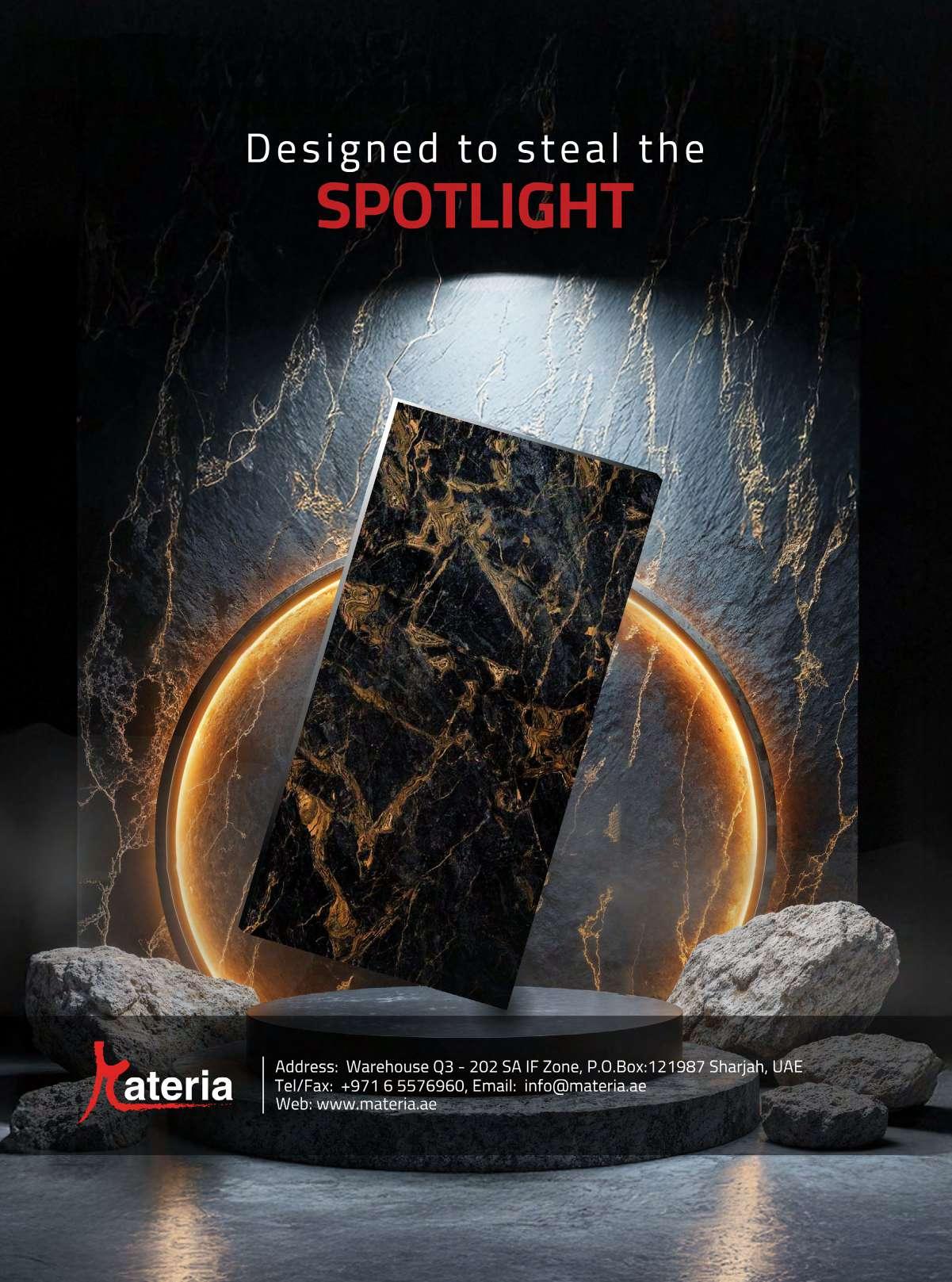THE DEFINITIVE GUIDE TO THE REGION'S CONSTRUCTION PROFESSIONALS
ARCHITECT OF GENERATIONAL LEGACIES
Sultan Alshakrah of Ajmal Makan on sculpting cities for tomorrow
Maha Al Shamsi, Emirati entrepreneur and Co-Founder of MSKD Global, is redefining commercial brokerage in the UAE
Dr. Mustafa Batikha of HeriotWatt University Dubai champions eco-friendly building methods that balance safety with sustainability
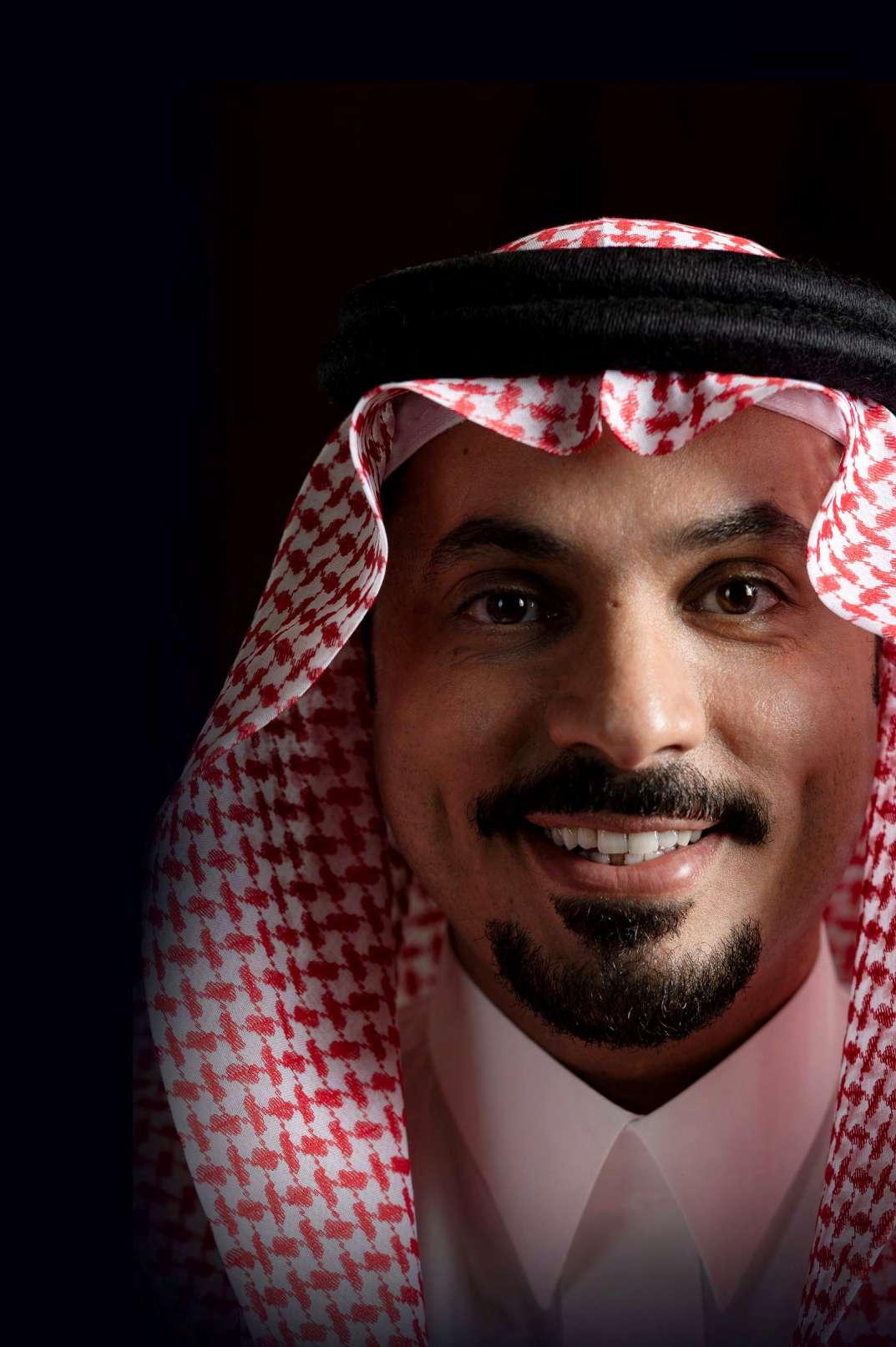
ANANTARA SHARJAH RESIDENCES
A NEW CHAPTER OF LUXURY EXPERIENCES BY THE SEA
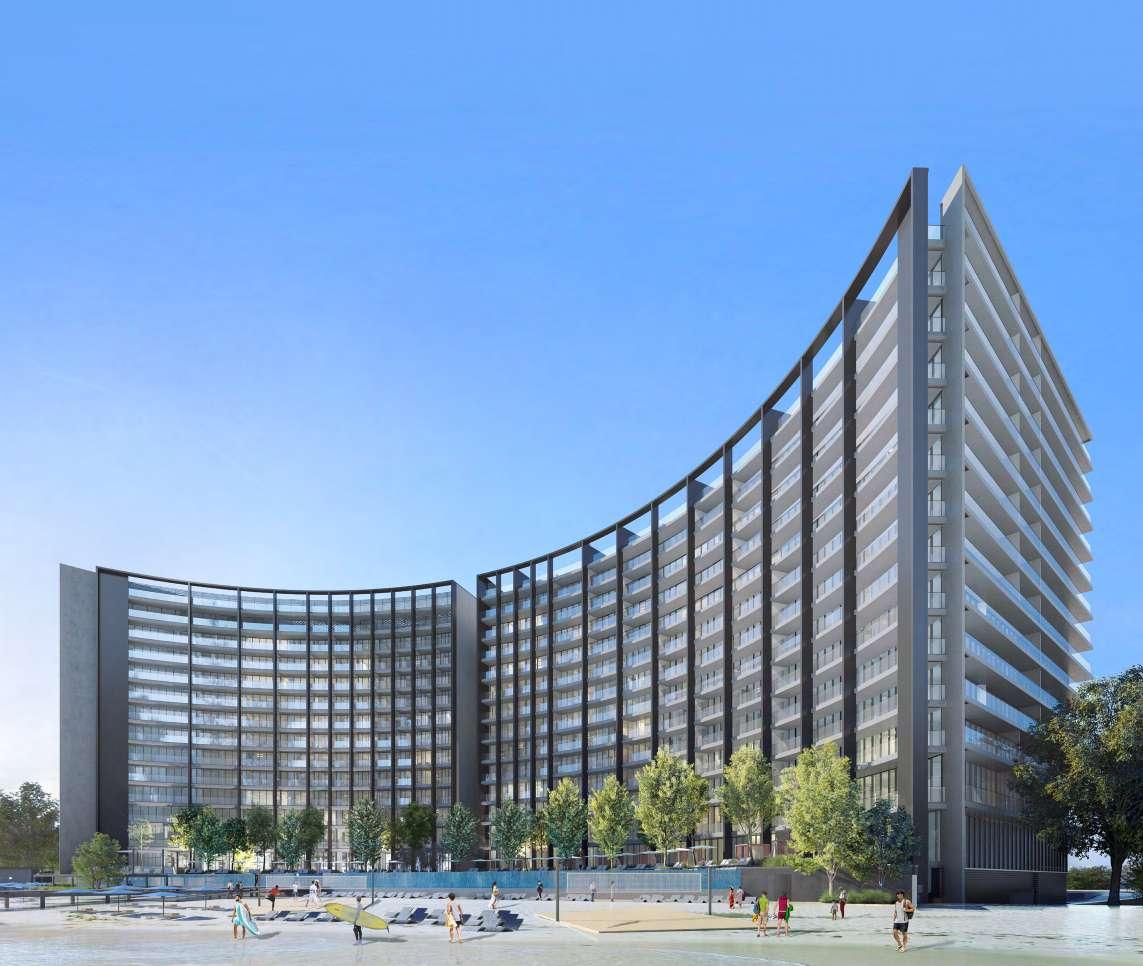
Bringing luxury seaside living to Sharjah for the first time, owners at the Anantara Sharjah Residences enjoy access to the Anantara Sharjah Resort’s world-class amenities, including an infinity pool, five distinctive restaurants, an Anantara Spa and a state-of-the-art gym. As an investment, owners can enjoy the benefits of a rental management scheme operated by Anantara Hotels, Resorts & Spas, allowing them to maximize their returns when they are not resident in the property.
To register your interest, visit arada.com
LIFE IS A JOURNEY.
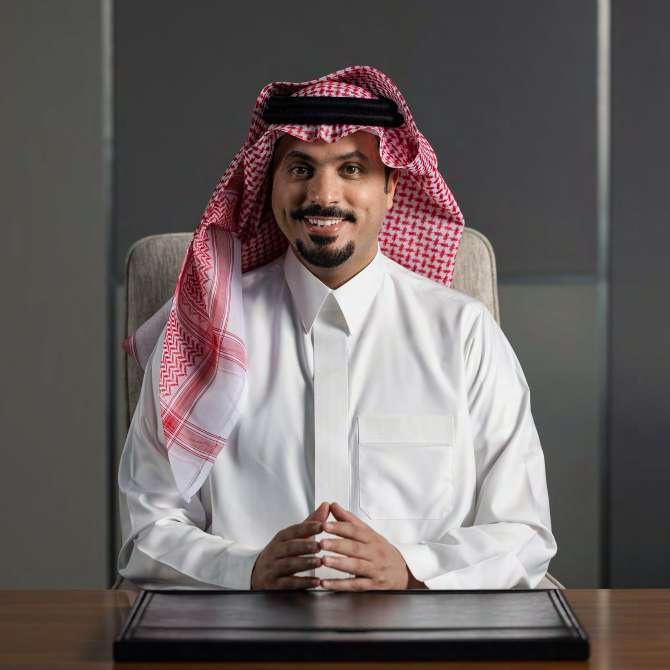

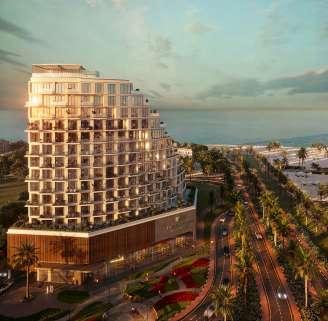



DISCOVER REFINED living
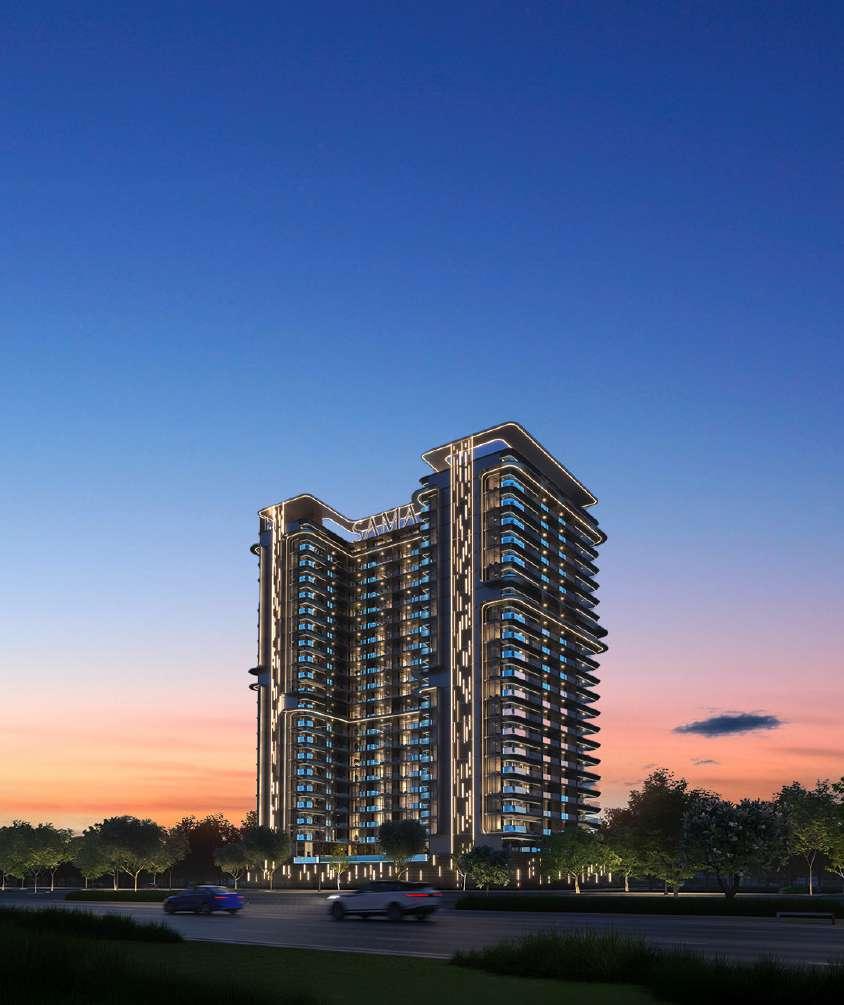
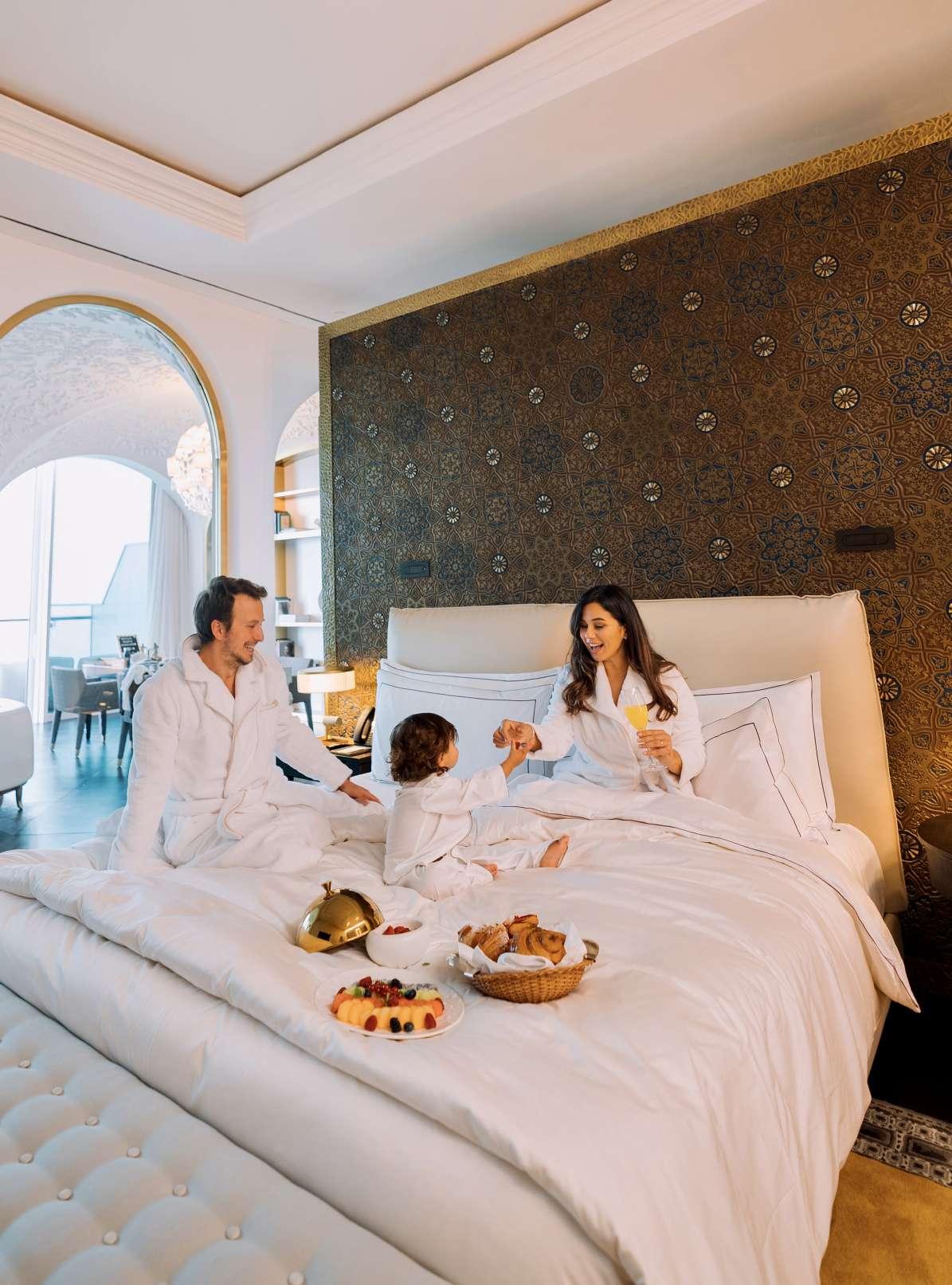
SUITE TREAT
Step into a world of opulence when you book a Suite at Raffles Doha.
Experience the added luxury of QAR 750 credit to spend on dining in the hotel, and QAR 500 towards any Spa treatment.
Children aged 12 and below are welcome to indulge in the enchantment of complimentary dining.
Rates starting from QAR 3,500 per night
For reservations, please call +974 4030 7100 or email reservations.doha@raffles.com
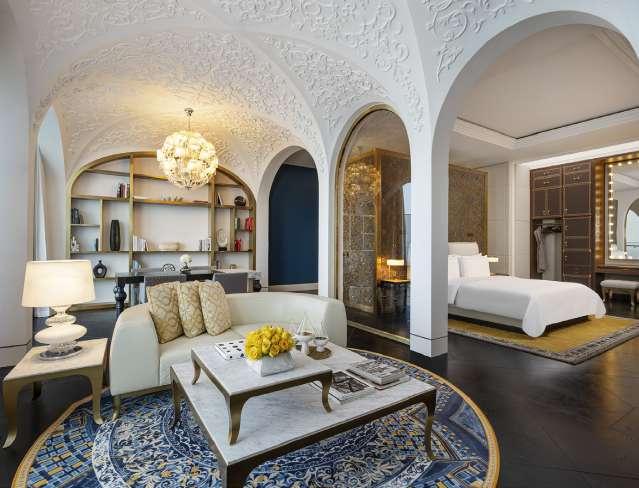
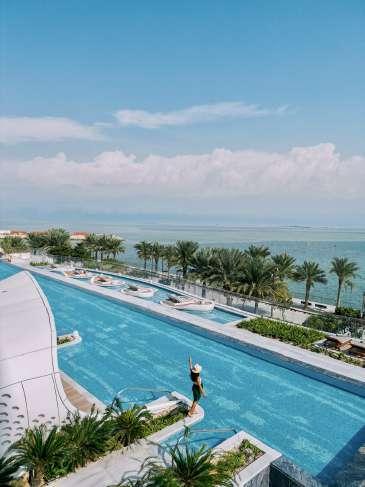
CEO
Wissam Younane wissam@bncpublishing.net
Managing Director
Rabih Najm rabih@bncpublishing.net
Group Publishing Director
Joaquim D'Costa jo@bncpublishing.net
Editor-in-Chief
Vibha Mehta vibha@bncpublishing.net
Commercial Director
Andrea Mocay andrea@bncpublishing.net
Editorial Assistant
Aya Zhang aya@bncpublishing.net
Digital Reporter
Reeba Asghar reeba@bncpublishing.net
Creative Lead
Christian Harb chriss@bncpublishing.net
Junior Art Director
Rizaldi Febrian
Marketing Executive
Aaron Joshua Sinanbam aj@bncpublishing.net
Videographer
Eduardo Buenagua and Joel Amparo
PO Box 502511 Dubai, United Arab Emirates P +971 4 4200 506 | F +971 4 4200 196
For all commercial enquiries, contact jo@bncpublishing.net T +971 50 440 2706
All rights reserved © 2025. The opinions expressed are solely those of the contributors. Construction Business News Middle East and its affiliated publications in the MENA region are exclusively licensed to BNC Publishing. No part of this magazine may be copied, reproduced, or transmitted in any form or by any means without prior written consent from the publisher.
Printed by United Printing and Publishing | upp.ae
Images used in Construction Business News Middle East are credited when necessary. Attributed use of copyrighted images with permission. All images not credited courtesy Shutterstock.
Keep up to date with all the latest news, features and much more on our website and social media platforms
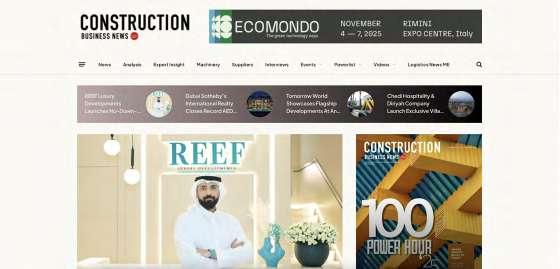
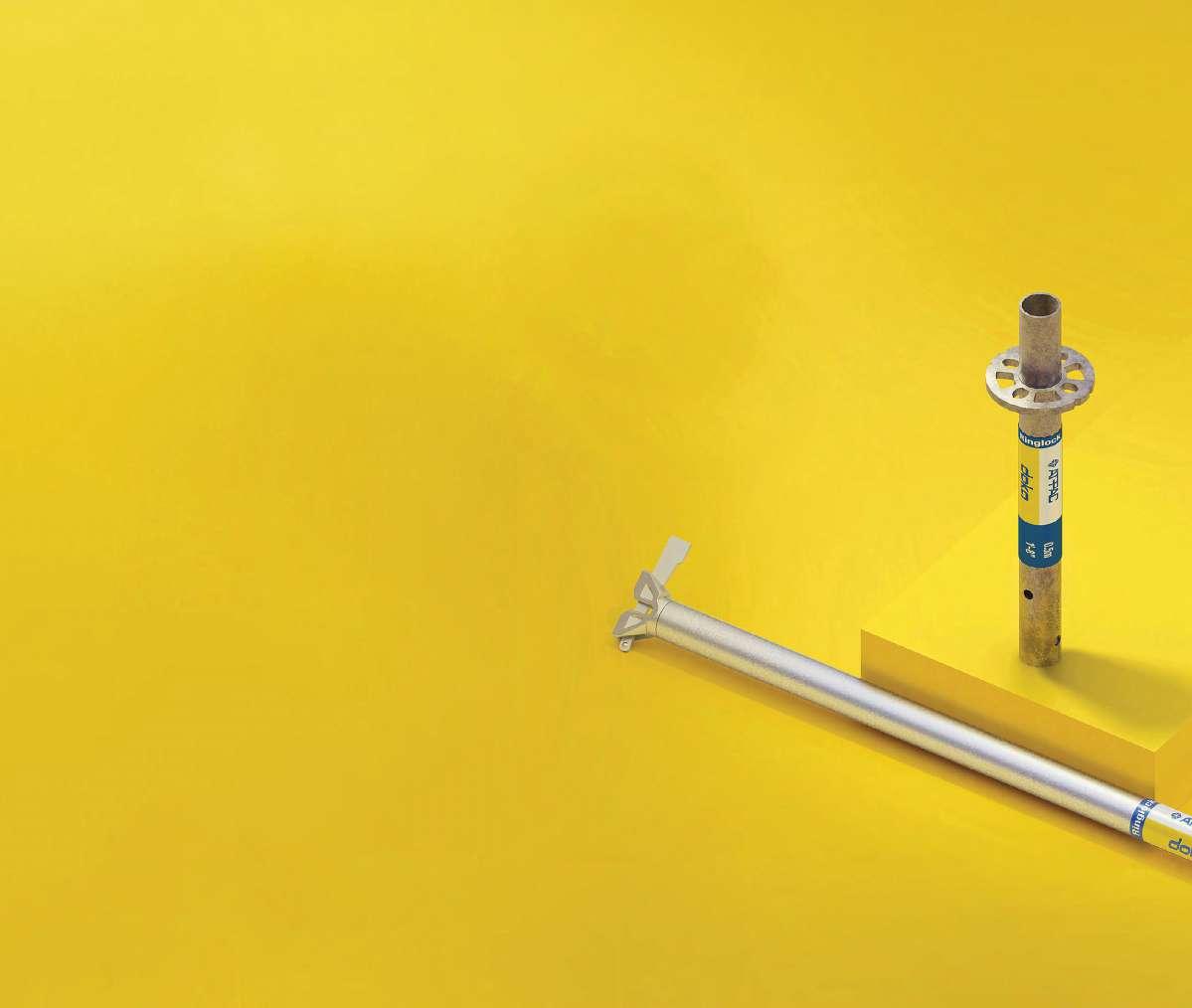
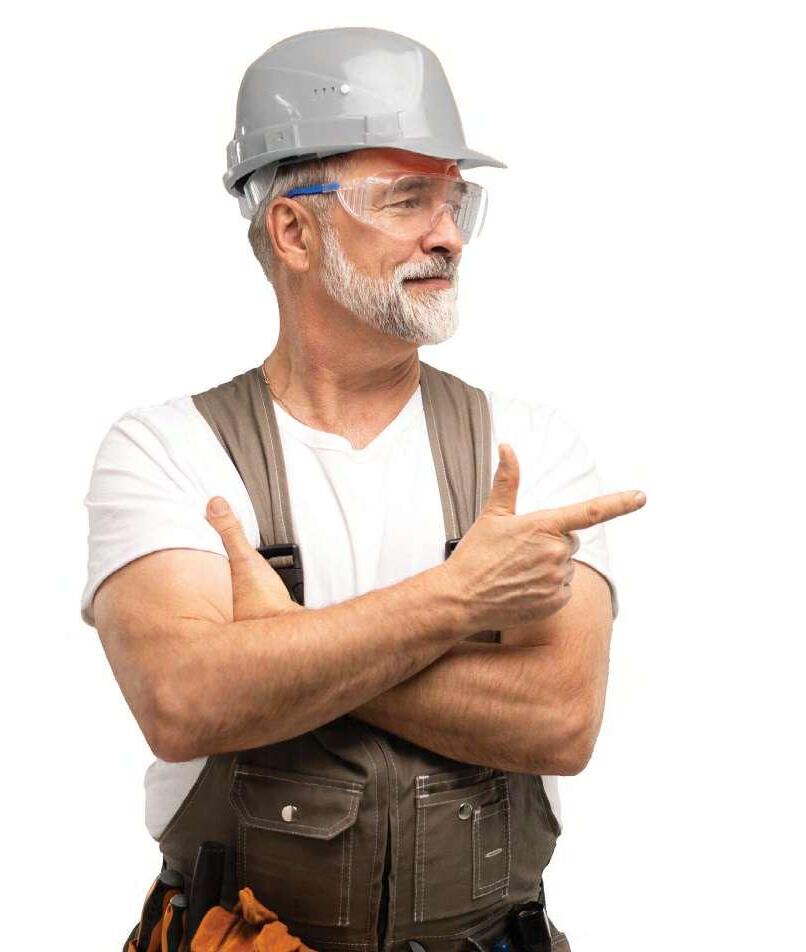
One-stop-shop
Require formwork and scaffolding? Check out Doka’s extensive list of products and systems, which now includes scaffolding for a variety of applications. At Doka, our philosophy is to provide a broad range of services under one umbrella based on a growing demand for single-source solutions that adhere to the highest standards.
/DokaMEA /company/doka-middle-east-africa /doka_mea
meaapmarketing@doka.com | www.doka-me.com
LETTER FROM THE EDITOR


Vibha Mehta Editor-in-Chief vibha@bncpublishing.net
Vibha Mehta vibhamehta01 @vibhamehta01
The Currency of Passion
We are often told to master discipline, precision, consistency, and patience. They are important, yes, but I’ve learned they are merely frameworks, not the foundation. What truly anchors everything I do—the quiet force that carries me through—is a deep sense of drive.
This drive cannot be taught; it is felt. It rests quietly inside you when you begin something new, a fire that refuses to dim even when the hours stretch into the night. It is what makes me pore over a single line of text, reshaping words until they breathe. It is what makes me fight for a design, a story, an idea, even when reason suggests letting go. It is not always loud—it can be subtle, like the way you lean in just a little closer when something truly matters.
I’ve always believed that this inner force defines not just how we work, but who we are when we show up. It turns delivery into devotion. It transforms tasks into legacies. Without it, work feels mechanical; with it, work takes on a soul—layered with meaning, intent, and spirit.
But drive alone, though powerful, is only one note. Its true brilliance emerges when it meets others who share the same spark. When a team aligns with that fire, something extraordinary happens. Ideas stop belonging to individuals and start belonging to the collective. Suddenly, challenges shrink, mountains move, and the ordinary becomes remarkable.
I’ve witnessed it—the way long nights dissolve into laughter, how impossible deadlines give birth to some of our proudest achievements. When determination runs through a team like an electric current, you don’t just deliver—you create. You don’t just reach goals— you expand horizons.
So here’s what I believe: energy is not a luxury, it is a necessity. It is the golden thread weaving everything we do, binding individuals into constellations, and reminding us that the best work is not measured by numbers or timelines, but by the heart we leave inside it. And when a team shares that heart, the universe no longer feels out of reach.
Protecting the night sky
BEGA pole-top luminaires with BugSaver® technology protect nocturnal fauna by reducing the color temperature from 3000 Kelvin to an amber color around 1800 Kelvin, which reduces the light attractive effect. The color temperature and output can be controlled dynamically. bega.com/bugsaver
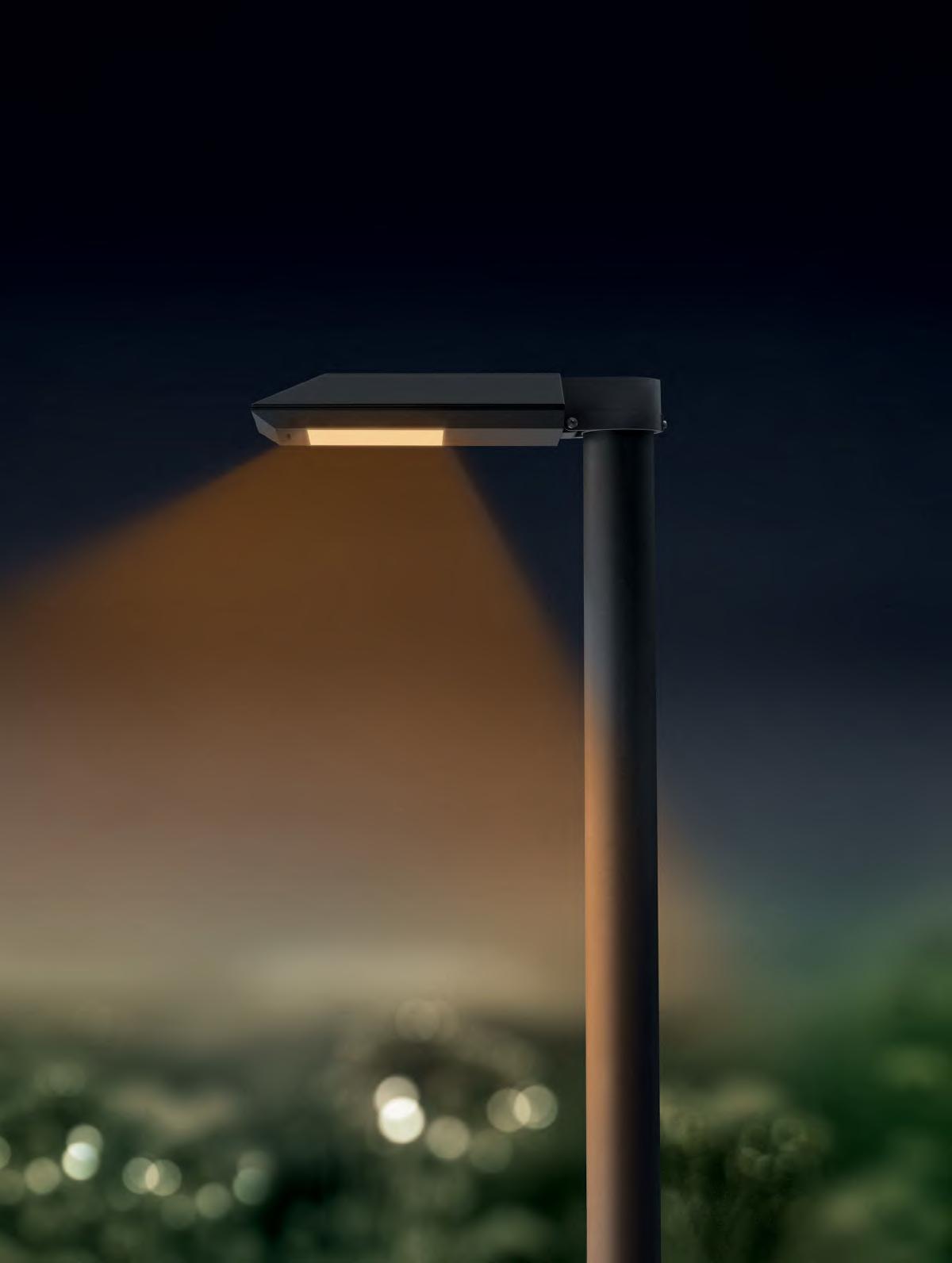
Das gute Licht.
Go big or go small with the HP DesignJet T950 plotter series
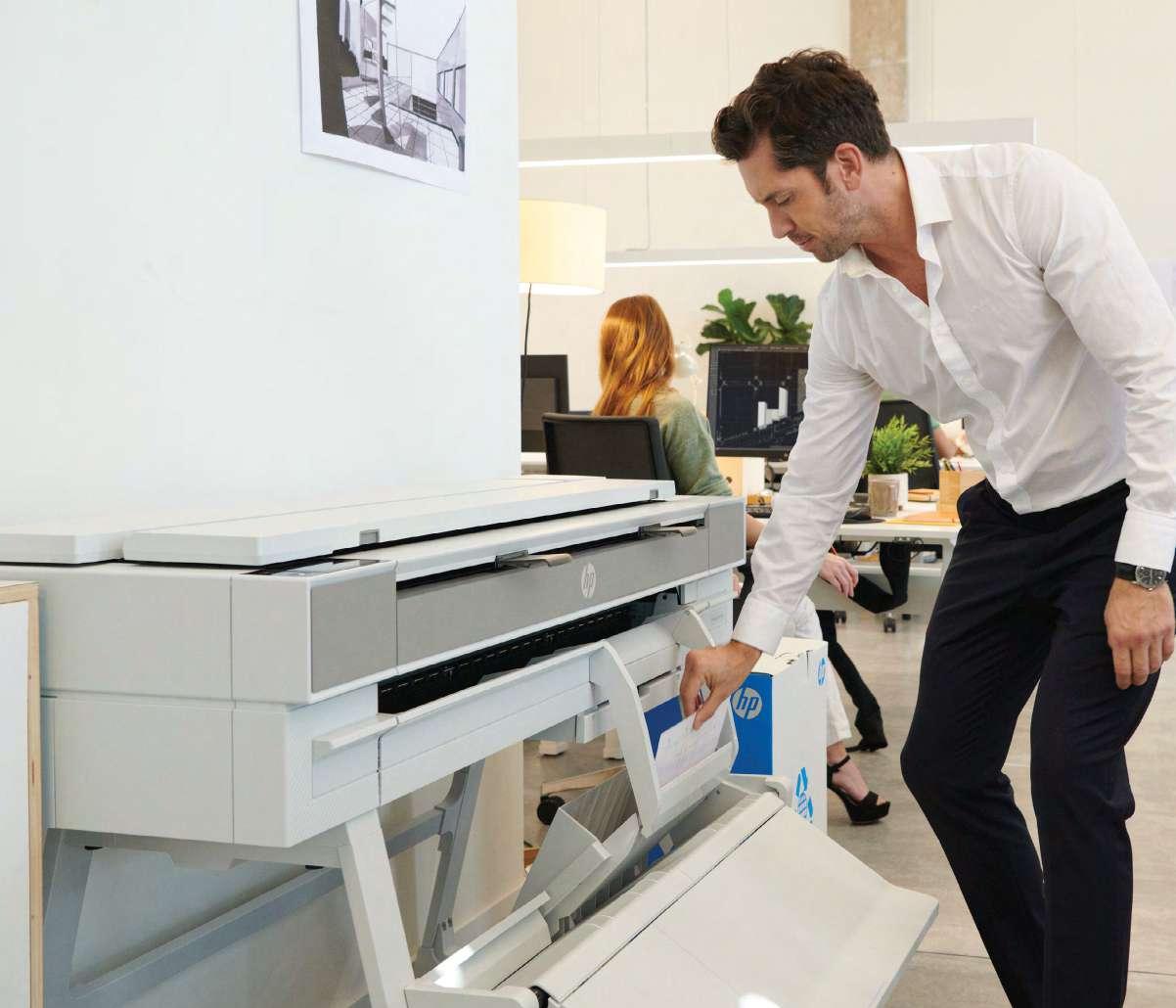

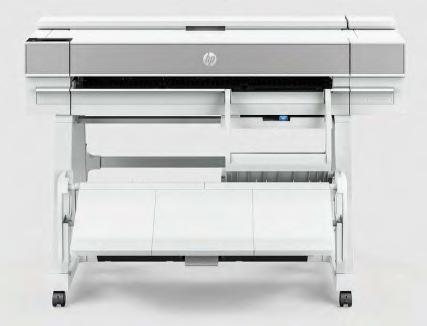
Connected
Most Efficient
Save time with the most efficient A4-A0 experience. 2 Seamlessly print A4 jobs with integrated input and output trays, keeping pages sorted by size. The flat 40-page stacker makes collection easy, while fast print speeds keep projects moving.
Work securely from virtually anywhere. You can save time by printing in fewer steps with HP Click. Protect your printer and data from cyberthreats with HP Wolf Pro Security. Manage your device and print remotely with HP app.
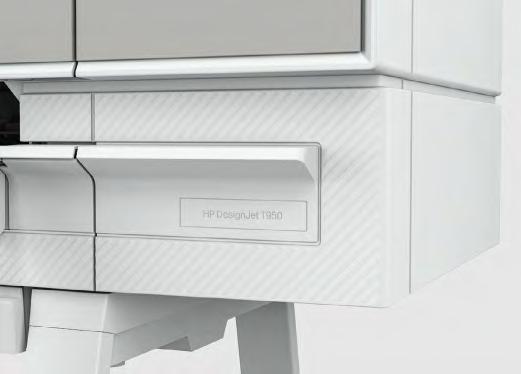
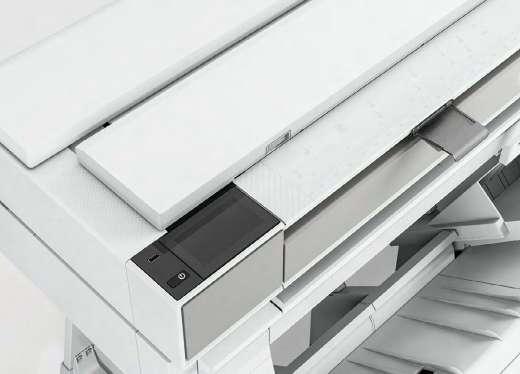
Go Beyond
Go beyond and advance your environmental goals with a printer made with recycled plastics and recyclable supplies. This robust, compact plotter is designed to last while also helping to reduce energy and ink waste.
Scan to learn more

BNW DEVELOPMENTS & WYNDHAM INK DEAL FOR RAMADA RESIDENCES
BY WYNDHAM
BNW Developments has signed an agreement with Wyndham Hotels & Resorts to bring Ramada Residences by Wyndham to Dubai’s thriving Al Jaddaf district
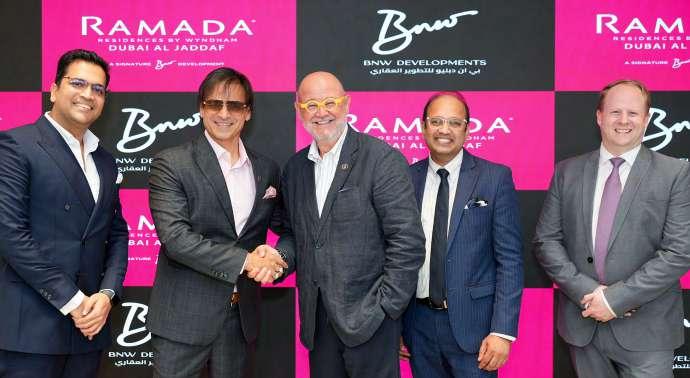
BNW Developments, a leading UAE-based real estate company, has signed an agreement with Wyndham Hotels & Resorts, the world’s largest hotel franchising company, to launch Ramada Residences by Wyndham in Dubai’s vibrant Al Jaddaf district.
Located just five minutes from Jaddaf Waterfront, the project will offer 108 thoughtfully designed one- and twobedroom apartments complemented by curated lifestyle amenities, including a Zen Garden, residents’ lounge, openair theatre, spa, gym, children’s play area, and concierge services. Each residence will feature modern, state-of-the-art fixtures and furnishings, blending style with comfort.
Ankur Aggarwal, Founder and Chairman, BNW Developments, said: “Partnering with Wyndham Hotels & Resorts enables us to bring worldclass hospitality standards into our residential offerings, creating homes that are not only beautifully designed and strategically located, but also professionally managed and globally recognized. Ramada Residences by Wyndham aligns with the UAE’s vision for lifestyle-led, sustainable urban growth, while offering investors strong long-term value and access to high-demand, fast-growing location.”
Vivek Oberoi, Co-Founder and Managing Director of BNW Developments, commented: “Rooted in BNW’s local insight and elevated by Wyndham’s global hospitality legacy, the project’s design structure embraces clean, modern lines, striking a balance between residential serenity and urban sophistication. Set within one of Dubai’s fastest-growing districts, Ramada Residences by Wyndham not only offers aesthetic appeal but also strong investment potential, driven by increasing demand for well-located, branded lifestyle residences.”
Dimitris Manikis, President EMEA, Wyndham Hotels & Resorts, added: “Across the Middle East, branded residences are becoming a powerful growth engine for hospitality. Our collaboration with BNW Developments highlights how global hotel brands can bring trust, consistency, and visibility to residential communities. With Ramada Residences by Wyndham, we are reinforcing our midscale presence in Dubai while delivering long-term value for residents and developers alike,
Ramada Residences by Wyndham is scheduled for handover in Q3 2026. The property will also incorporate sustainable features like EV charging stations, reflecting a commitment to environmental responsibility.
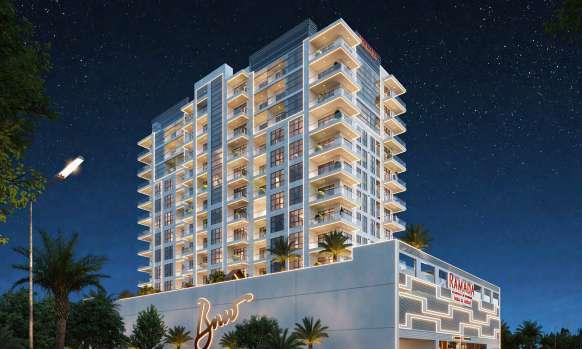
The project will offer 108 thoughtfully designed one- and two-bedroom apartments complemented by curated lifestyle amenities
ORA
DEVELOPERS EXPANDS GLOBALLY WITH LANDMARK PROJECTS IN UAE
AND IRAQ
ORA Developers Group is accelerating its international expansion with two major projects in the Middle East
ORA Developers Group continues its global expansion with the launch of two landmark projects in the UAE and Iraq. Bayn, a coastal community between Abu Dhabi and Dubai, and Madinat Al Ward, a large-scale residential city in Baghdad’s Al Nahrawan district, mark a significant step in ORA’s regional growth.
With a combined first-phase investment of over USD 16 billion, the developments reflect ORA’s long-term commitment to creating culturally relevant, design-led, and sustainable communities in high-growth markets.
Bayn: Shaping the future of coastal living in the UAE Bayn, in Ghantoot - the key corridor between Abu Dhabi and Dubai—is set to become a vibrant coastal community blending urban growth with nature. Spanning 4.8 million sqm and 7 km of waterfront, over 55% of the development is dedicated to open spaces, waterways, and leisure, including a marina, lagoon, and 1.2 km beachfront. Featuring a 100,000 sqm sports club and holistic amenities, Bayn sets a new standard for healthy living while preserving Ghantoot’s pristine coastline. This coastal community builds on ORA’s experience in Egypt, Cyprus, and Grenada.
“With Bayn, our aim is to develop a destination that anticipates the future needs of a thriving coastal community within a strategically important location,” stated Eng. Naguib Sawiris, Chairman and CEO of ORA Developers. “Ghantoot presents a unique opportunity to create a
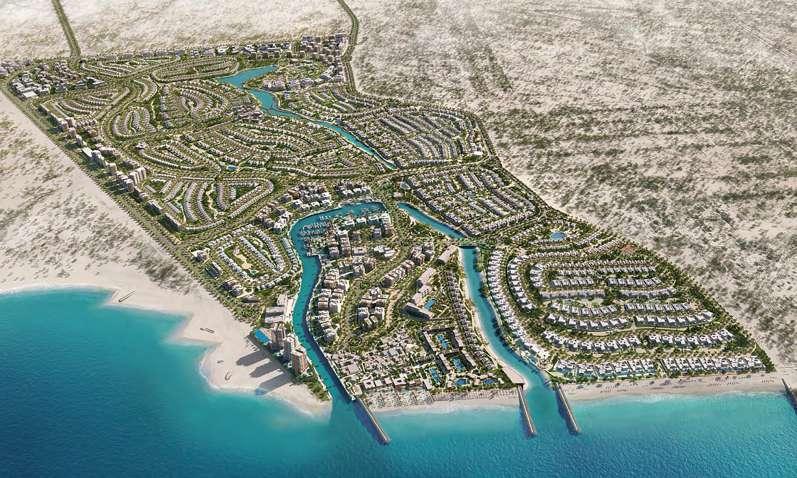
distinctive coastal community that not only offers an exceptional lifestyle but also contributes to the broader development and appeal of the region. We anticipate this project will attract residents and stimulate economic and social growth”, he further added.
Madinat Al Ward: A new urban model for Iraq
The groundbreaking of Madinat Al Ward in Baghdad marks a key milestone in Iraq’s housing agenda. Spanning 62 million sqm, this visionary city—named after scholar Ali Al-Wardi—will deliver approximately 120,000 homes over 24 years, creating a self-sustaining community.
Phase 1, with an investment of around USD 10 billion, is expected to be complete in eight years. A highlight is a 5 million sqm public park, underscoring ORA’s commitment to green, livable spaces that promote wellbeing and environmental care.
“Madinat Al Ward is a testament to the power of visionary public-private partnerships,” said Ibrahim Karam, CEO of ORA Iraq. “This project goes beyond providing housing as it lays the foundation for a new urban center one that prioritizes quality of life and sustainable growth. We believe this development will serve as a model for future urban expansion in Iraq and the wider region.”
Commitment to technology, sustainability, and well-being
Bayn and Madinat Al Ward showcase ORA’s focus on smart digital infrastructure, sustainable solutions, and ample green spaces. Bayn’s advanced systems enhance community life, while both projects promote environmental care and healthy living.
ORA invites stakeholders and residents to imagine transformative communities setting new Middle East urban standards.
ACCIONA ACHIEVES PCOD FOR THREE MAJOR SEWAGE TREATMENT PLANTS IN SAUDI ARABIA
ACCIONA and its partners Tawzea and Tamasuk have achieved commercial operations for three strategic sewage treatment plants
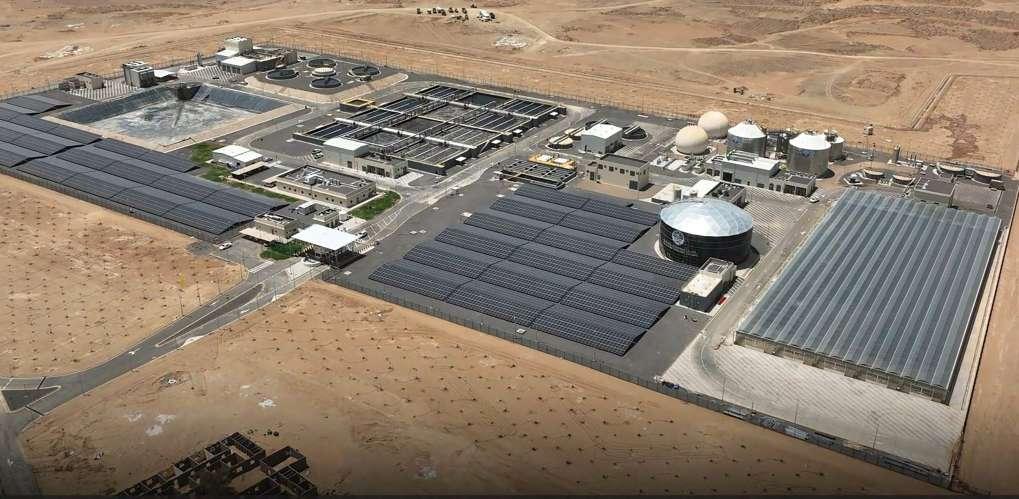
ACCIONA, together with its partners Tawzea and Tamasuk, has successfully reached Project Commercial Operation Date (PCOD) for three large-scale sewage treatment plants in Saudi Arabia: Madinah-3, Buraydah-2 and Tabuk-2. This milestone marks the completion of construction works and the official handover to the client, confirming that all systems are operational and ready for service.
With PCOD issued for all three plants, the facilities have formally entered commercial operation and are now fully managed by the Operations & Maintenance (O&M) consortium formed by ACCIONA, Tawzea and Tamasuk.
This achievement follows the successful financial close in 2022, when ACCIONA’s water business secured its first green loan to support the development of the three projects under Saudi Arabia’s public-private partnership (PPP) model.
The three plants will collectively treat 440,000 cubic meters of wastewater per day, significantly boosting water reuse in the Kingdom: Madinah-3 will serve up to 1.5 million people in
the greater Madinah area and it will have an initial treatment capacity of 200,000 m³/day. Buraydah-2 will serve around 600,000 inhabitants, including the nearby town of Ash Shimasiya, with a capacity of 150,000 m³/day. Tabuk-2, complementing the existing Tabuk-1 ISTP, will serve up to 350,000 people, with a treatment capacity of 90,000 m³/day.
SAVING RESOURCES
The treated water from these plants will be reused primarily for agricultural purposes, reducing pressure on scarce freshwater resources. Expected daily water savings amount to 190,000 m³/day at Madinah-3; 142,500 m³/day at Buraydah-2 and 85,500 m³/day at Tabuk-2.
In total, approximately 95% of the treated water will be allocated to agriculture, while the remaining 5% will be reused at the plant itself
This initiative is aligned with Saudi Arabia’s Vision 2030 and its strategic objectives to enhance water sustainability, increase resource efficiency, and expand public-private partnerships across critical infrastructure sectors.
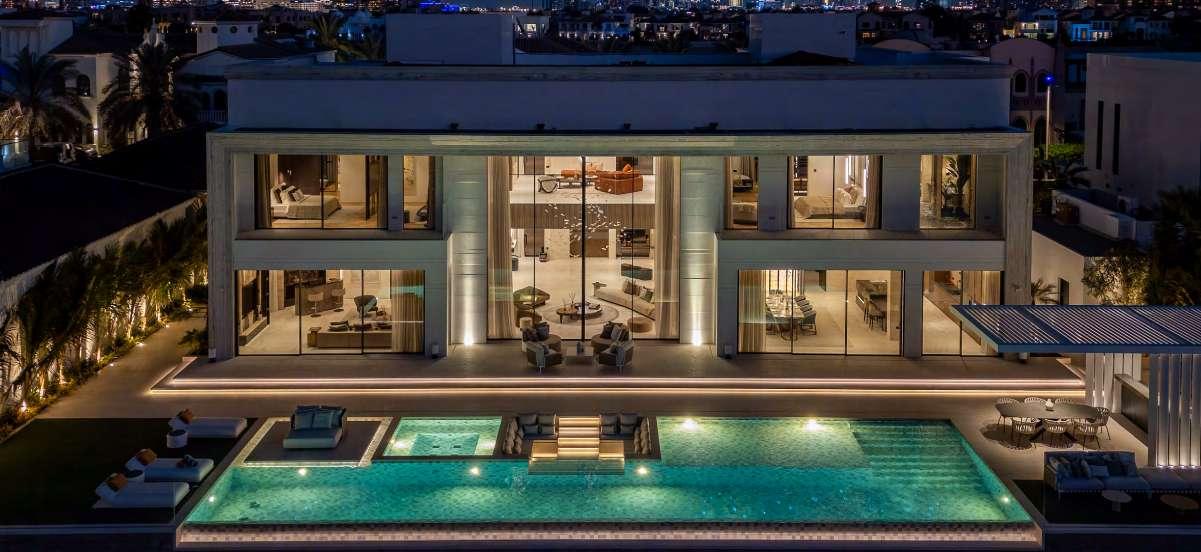
DUBAI SOTHEBY’S INTERNATIONAL REALTY CLOSES RECORD AED 161M PALM JUMEIRAH VILLA SALE
Dubai Sotheby’s International Realty has closed the most expensive secondary villa sale on Palm Jumeirah this year, at a total price of AED 161 million
In a standout moment for Dubai’s prime property market, Dubai Sotheby’s International Realty has closed the most expensive secondary villa sale on Palm Jumeirah this year, for the total price of AED 161 million. This was also the second-highest sale on a per square foot basis this year, at AED 14,679.39 per sq ft.
The Signature Villa, developed by acclaimed property developer 25 Degrees, masterfully blends contemporary architecture and refined interior detailing. The residence is set across a built-up area of 10,900 sq ft, and comprises multiple living spaces, six expansive bedroom suites, a private cinema, and a rear pool deck with a direct view of the Atlantis the Royal Resort & Residences.
The sale was exclusively managed by Dubai Sotheby’s International Realty, with Leigh Borg, Executive Partner, representing the seller, and Filippo Tavernaro, Senior Global Property Consultant, acting on behalf of the buyer.
“This was a rare and exclusive listing that stood out even in a highly competitive market,” said Leigh Borg. “Every aspect of the property was executed at the highest level, and with the caliber of clients that Palm Jumeirah attracts, homes like this don’t stay on the market for very long.”
“Transactions like this are made possible thanks to the strength of the network and the global platform we have,” said Filippo Tavernaro. “It is also a testament to the quality of the homes available. The price tag is no bar for buyers when the property ticks all the boxes.”
Dubai’s real estate market has maintained its strong momentum in 2025 with landmark sales closed in key
neighborhood’s, the majority of which were executed by Dubai Sotheby’s International Realty. This includes a Jumeirah Bay Island villa that remains the most expensive home sold this year, as well as notable transactions in Emirates Hills and Dubai Hills Estate. Most recently, Leigh Borg closed the sale of this year’s most expensive residential plot, also located on Palm Jumeirah.
Chris Whitehead, Managing Partner at Dubai Sotheby’s International Realty, added: “With every landmark transaction, we reinforce our position as the foremost authority in Dubai’s super-prime property market. This marks our second record-breaking sale on Palm Jumeirah in recent months. To me, this underlines not only the prestige of the location but also the strength of demand at the very top of the market, setting the tone for a powerful close to 2025.”
David von Rosen, Co-founder of 25 Degrees, added: “This sale is a clear sign of the strength and maturity of Dubai’s top-end property market, driven by a continued influx of high-net-worth individuals looking to capitalize on the Emirates’ world-leading luxury lifestyle opportunities.”
This is the second record-breaking sale of a villa developed by 25 Degrees, following its AED 62 million sale of a renovated Garden Home villa in 2024, which set a new benchmark for this class of property on Palm Jumeirah.
The firm purchased a 90,000 square foot plot of undeveloped land on Palm Jumeirah in June 2025 for AED 365 million and has partnered with award-winning architect Killa Design to develop a series of prime, custom-built properties on the land.
SOL LUXE:
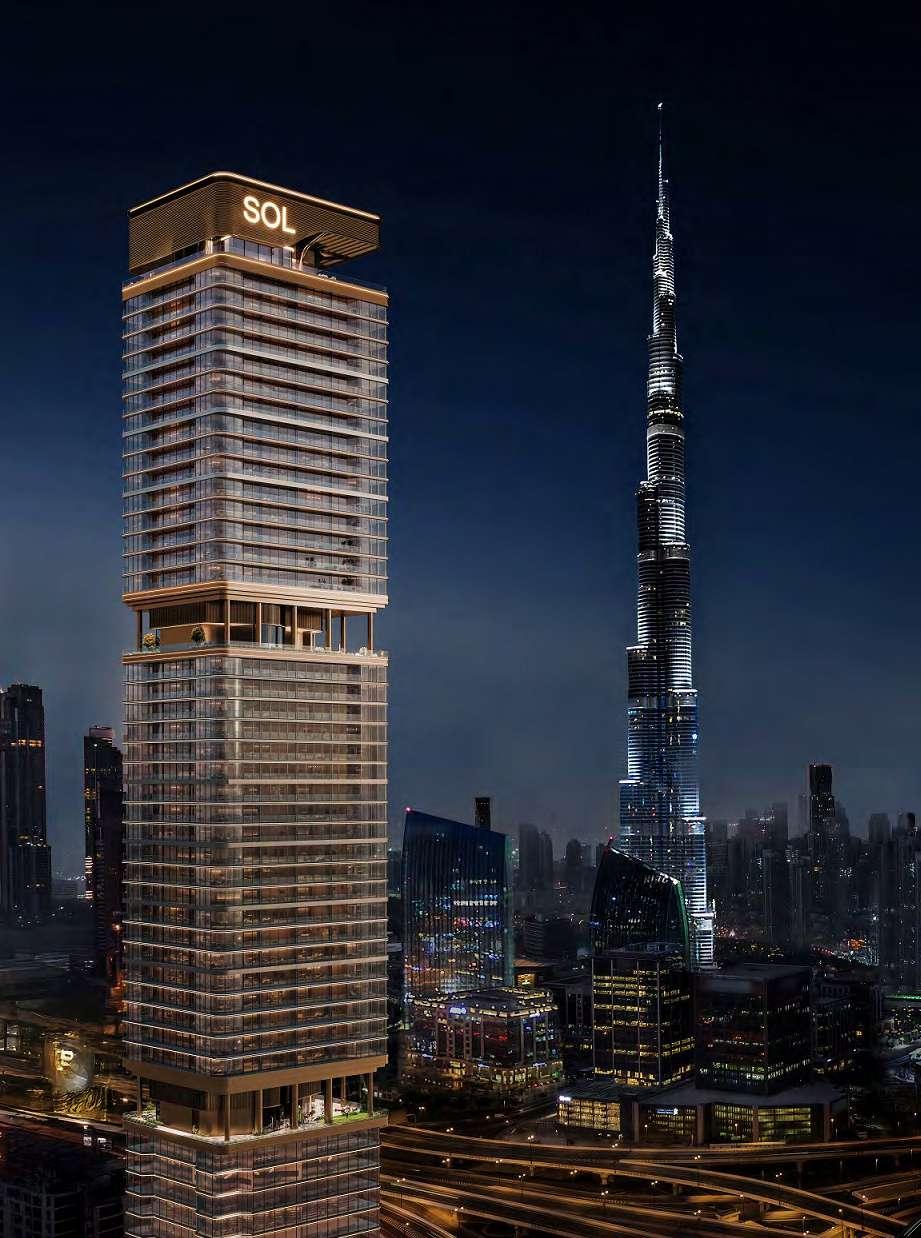
Launching in October 2025, this 70-storey development is set to become a new landmark of luxury, connectivity, and legacy on Dubai’s most celebrated boulevard.
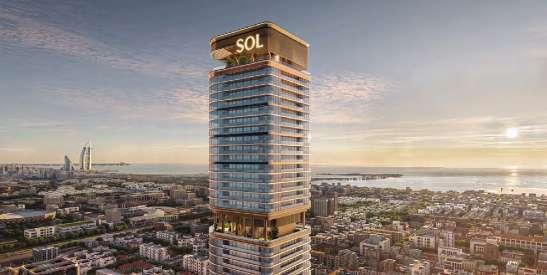
Dubai has long been a city of vision, where bold ideas transform into iconic landmarks. Now, a new chapter is unfolding on Sheikh Zayed Road — the city’s original lifeline and most prestigious boulevard — with the upcoming launch of SOL LUXE, a 70-storey architectural marvel by SOL Properties.
Positioned on the last freehold plot along Sheikh Zayed Road, SOL LUXE is more than a development; it is a declaration. Conceived as a mixed-use tower of residences, Grade A offices, and curated retail, it embodies a rare convergence of luxury, connectivity, and legacy in the very centre of Dubai.
An Icon in Bronze and Glass
Designed with contemporary minimalism and inspired by timeless zen principles, SOL LUXE is envisioned as both an icon and a sanctuary. Its striking bronze-wrapped horizontal bands and floor-to-ceiling glass façade create a sense of rhythm and elegance that resonates across Dubai’s skyline. At night, the tower glows like a sculptural beacon, reflecting the dynamism of the city it rises from.
From the inside, materials such as travertine, Armani Grey marble, smoked oak, and bronze metal bring warmth and refinement. With 3.7 meter ceiling heights, the residences are flooded with natural light and framed by unrivalled views of Burj Khalifa, Burj Al Arab, the Arabian Gulf, and Downtown Dubai.
A Lifestyle Elevated
SOL LUXE is distinguished by its world-class residential amenities:
• The only rooftop infinity pool on Sheikh Zayed Road, complete with jacuzzi and children’s pool, directly facing the Burj Khalifa.
• Rooftop yoga terraces and wellness decks designed for serenity.
• Elevated mini golf against the dramatic city skyline.
• Indoor and outdoor children’s play areas.
• Multipurpose event spaces with terraces for private gatherings.
• Barbecue pavilions and outdoor lounges with panoramic city views.
• Steam and sauna suites for restorative relaxation. This is a community designed not just for living, but for thriving in luxury.
SOL LUXE — Live. Work. Thrive. Residents
A Headquarters for Visionaries
SOL LUXE also introduces a new standard for Grade A office spaces in Dubai. Tailored for the Big Four consultancies, international law firms, and global corporations, the commercial component combines prestige with performance.
Exclusive business amenities include:
• Executive meeting suites with commanding Burj Khalifa views.
• A state-of-the-art gym overlooking Burj Al Arab.
• A signature indoor–outdoor event space with the Burj Khalifa as a backdrop.
• Elegant social lounges and collaborative breakout zones.
• Expansive 3.7-meter ceiling heights with floor-to-ceiling glass façades, offering uninterrupted 360-degree panoramas of Dubai’s skyline
Crucially, SOL LUXE offers unmatched connectivity: just one minute from the Metro station, and within minutes of DIFC, Dubai Mall, and Business Bay. For professionals, it is not simply an office — it is a headquarters of influence.
Retail at the Crossroads of the City
At the base of the tower, retail spaces are designed for flagship luxury brands, signature dining, and curated lifestyle concepts. With three-sided visibility on a prime corner plot and 9-meterhigh frontages, this retail hub promises prestige and exposure in equal measure.
An Investor’s Opportunity
Beyond its design and lifestyle appeal, SOL LUXE presents compelling returns for investors. With projected 8–9% ROI in a Grade AAA location, proximity to leading schools such as GEMS Wellington and healthcare institutions like Burjeel Hospital, the project is positioned to attract long-term residents, professionals, and global investors alike.
A New Landmark for Sheikh Zayed Road
Sheikh Zayed Road has always been more than just a highway — it is the backbone of Dubai’s transformation. With SOL LUXE, that story continues. Launching in September 2025, this 70-storey development is set to become a new landmark of luxury, connectivity, and legacy on Dubai’s most celebrated boulevard.
As one of the best developer in Dubai , SOL Properties continues to set a benchmark in luxury, wellness and mixed use with Grade A commercial spaces that define the future of luxury and modern living. Our recently launched landmark projects like Branded Residences Fairmont Residences Solara Tower Downtown Dubai, SOL LEVANTE JVT and SOL LUXE our commitment to delivering trust, quality and long term value remains credible and reliable.
Julia Al-Jenabi, Head of Marketing & Specification Management IMEA at Henkel Polybit
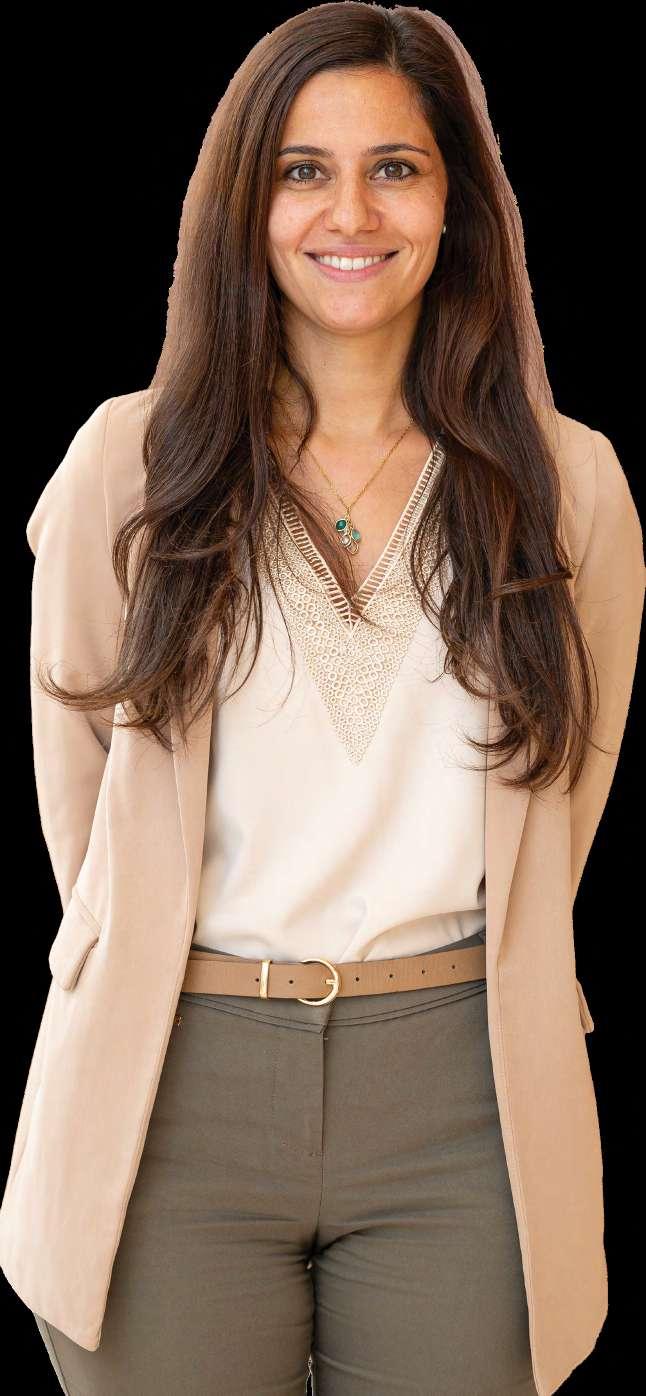
Powering the Built Future
Julia Al-Jenabi,
Head of Marketing & Specification Management IMEA at Henkel
Polybit, discusses how innovation, technology, and sustainability are redefining construction — and how Henkel is leading this transformation from foundation to finish
In a region defined by rapid urban growth and visionary megaprojects, Henkel Construction business stands at the crossroads of technology and sustainability. With a footprint stretching across India, the Middle East, and Africa, the company continues to set new benchmarks in construction chemicals, waterproofing solutions, and energyefficient innovations. At the helm of its marketing strategy is Julia Al Jenabi, who shares how Henkel is shaping the future of the built environment through purpose-driven innovation and a commitment to lasting performance.
What key construction trends are shaping the industry across India, the Middle East, and Africa?
The construction landscape across India, the Middle East, and Africa is undergoing a dynamic transformation, driven by demographic shifts, urbanisation, and ambitious national
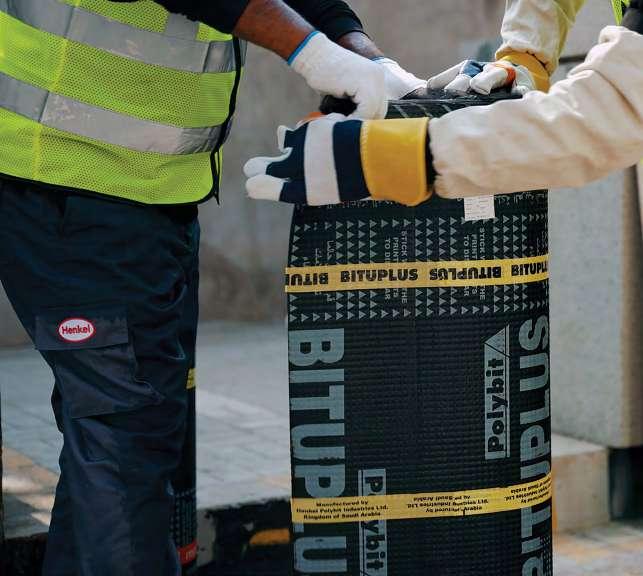
development agendas. In the GCC, particularly the United Arab Emirates and Saudi Arabia, we’re witnessing a surge in investment across residential, commercial, recreational, and infrastructure sectors — propelled by iconic megaprojects that aim to redefine urban living and mobility.
Henkel has been at the forefront of this evolution, providing advanced waterproofing and construction chemical solutions that ensure longterm durability and performance. Our involvement in landmark projects such as Etihad Rail, Dubai Metro, and key developments within Qiddiya and Diriyah reflects our commitment to safeguarding critical infrastructure for future generations.
Another significant trend is the acceleration of construction timelines through smarter, more efficient building methodologies. Modular construction and 3D printing are gaining traction, particularly in the Gulf states, as part of a broader push toward automation
and industrialised construction. These innovations open new avenues for collaboration, where Henkel’s technical expertise and high-performance solutions play a pivotal role in enabling speed without compromising quality.
Sustainability is also becoming a central focus. Clients, consultants, and contractors are increasingly prioritising data-driven approaches to reduce the environmental footprint of buildings. This includes scrutinising the emission profiles of core materials and seeking solutions that contribute to greener, more resilient structures. Henkel is actively supporting this shift with technologies that align with evolving regulatory frameworks and sustainability goals.
How is Henkel leveraging technology and innovation to stay ahead in the construction sector?
Technology and innovation are central pillars of Henkel’s strategy, serving as key differentiators in our global construction solutions portfolio. Our
approach is deeply rooted in customer centricity — we work closely with stakeholders across the entire project lifecycle to continuously validate market needs and translate them into targeted innovations.
Our regional waterproofing competence centre, equipped with a state-of-theart laboratory, plays a critical role in this process. It enables us to rigorously test, develop, and launch high-performance materials tailored to both regional and global requirements. This facility not only reinforces our technical leadership but also ensures that our solutions deliver long-lasting protection and reliability under the most demanding conditions.
In response to evolving industry demands, we’ve expanded our portfolio with specialised products for the oil and gas sector, engineered to meet stringent performance and safety standards. Additionally, we’ve introduced a fully HDPE-based substructural waterproofing system designed for complex multi-basement projects and high water table environments — a testament to our commitment to technical excellence and adaptability.
Continuing our legacy as pioneers in roof waterproofing and thermal insulation, we’ve also enhanced our Combo Roofing System with the launch of Combo Roof Plus. This next-generation solution integrates sustainability and reliability, aligning with the region’s growing emphasis on energy efficiency and green building practices.
Henkel remains committed to driving innovation that not only meets today’s challenges but also anticipates the needs of tomorrow’s construction landscape.
What role does sustainability play in your regional marketing and product strategies?
Sustainability is a core driver of Henkel’s regional strategy, fully aligned with our framework, which is built around the pillars of climate, circularity, and
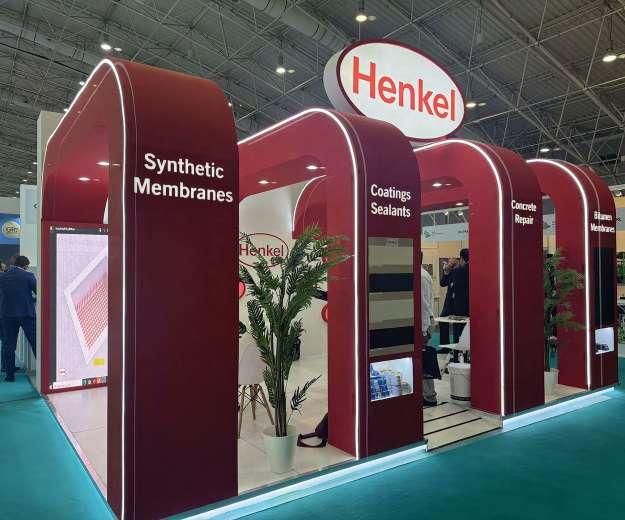
safety. Our goal is to create tangible value for our customers and partners by embedding sustainable practices throughout our operations, product development, and data transparency.
All our regional manufacturing facilities operate on 100% renewable electricity, and we continue to reduce CO₂ emissions through heat exchange initiatives and process optimisation. Waste reduction is another critical focus area, where we are advancing circular process design to enable material reuse within our product formulations.
In 2025 alone, we published over 30 Environmental Product Declarations (EPDs) — a significant step toward elevating sustainability data transparency in the construction chemicals sector. These declarations empower stakeholders to make informed decisions based on verified environmental performance.
Our product portfolio also includes more than 40 low-VOC construction chemicals across various technologies. These solutions offer multiple benefits: improved indoor air quality, enhanced worker safety, reduced
environmental impact, compliance with green building standards, and stronger market positioning for eco-conscious developments. Significantly, they also contribute to long-term material performance, reinforcing Henkel’s commitment to sustainable innovation without compromising technical excellence.
Sustainability is not just a responsibility — it’s a strategic enabler that shapes how we innovate, collaborate, and grow in the region.
What are the biggest challenges you see in driving growth across such diverse markets?
Each market within the IMEA region presents unique opportunities and challenges, shaped by varying regulatory environments, construction practices, and customer expectations. One of the most pressing hurdles is meeting the scale and pace of demand in high-growth markets like Saudi Arabia, where the sheer volume of ongoing and planned projects requires agile, scalable solutions and robust operational support.
The construction sector is inherently pricesensitive, which makes value selling a critical success factor. At Henkel, we differentiate ourselves through technical expertise, solution-oriented engagement, and a strong emphasis on the crucial role of waterproofing in ensuring structural integrity and longterm performance. Our ability to deliver not only products but complete systems backed by technical support gives us a competitive edge.
Supply chain resilience is another key enabler of sustainable growth. Ensuring consistent material availability, responsive after-sales service, and hands-on technical training — including site supervision — is essential to building trust and turning customers into long-term partners. These elements are especially vital in markets where construction timelines are tight and expectations for quality and reliability are high.
Navigating this diversity requires a deep understanding of local market dynamics, a flexible go-to-market strategy, and a commitment to continuous improvement — all of which are embedded in Henkel’s regional approach.
What is your outlook for the future of construction in the region over the next five years?
The outlook for construction across the GCC and broader IMEA region is promising.
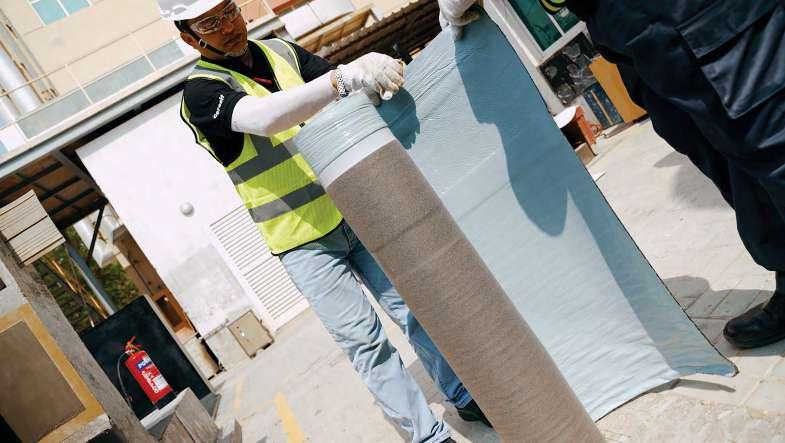
Continued population growth, coupled with ambitious national development plans, will drive sustained demand across all segments
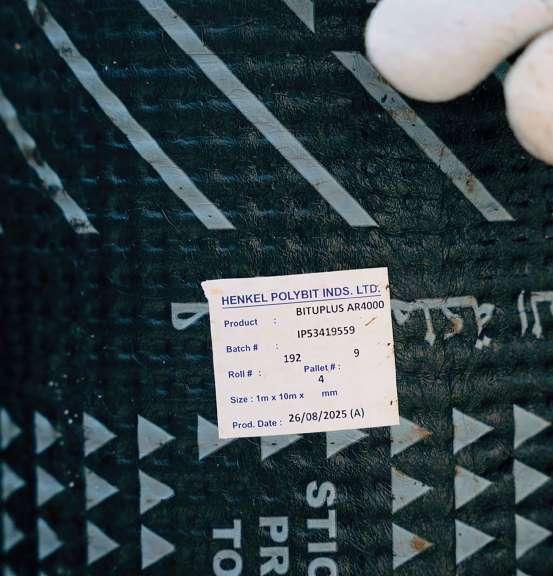
— particularly in the UAE and Saudi Arabia. From core infrastructure such as roads, bridges, rail, and airports to water and oil & gas-related developments, Saudi Arabia is poised to lead the region in terms of both scale and investment value.
We anticipate a significant acceleration in the adoption of advanced construction methodologies, as regional players aim to set global benchmarks in efficiency, automation, and innovation. Technologies such as modular construction and 3D printing will transform the way projects are executed and delivered.
Sustainability, once considered a differentiator, will become a baseline requirement, from sourcing sustainable raw materials to providing transparent data on the environmental impact of construction chemicals, and optimising the energy efficiency of final structures. Regulatory frameworks and client expectations will continue to evolve, making sustainability a non-negotiable element of doing business.
Ultimately, companies that keep customer needs at the centre and those that innovate with purpose will be best positioned to capture longterm value. Henkel is committed to leading this transformation — combining technical excellence, sustainability, and deep market understanding to shape the future of construction in the region.

Building Tomorrow’s SaudiCities
Sean Heckford, Director of Built Asset Consulting at Cavendish Maxwell, unpacks the trends driving new housing designs, sustainability standards, and market dynamics shaping the Kingdom’s urban future.

AMarket on the Cusp of Transformation
With Saudi Arabia set to implement a landmark foreign ownership law in January 2026, the country’s real estate sector stands at the threshold of significant transformation. For decades, access to property markets was primarily reserved for Saudi nationals, but this new legislation promises to open the gates to a broader demographic, unlocking demand from expat end-users and international investors, particularly in key urban centres.
According to Cavendish Maxwell’s latest insight, the impact is already taking shape. In the first half of this year alone, Riyadh recorded 35,600 real estate transactions, a 10% increase year-on-year, while Jeddah saw 15,200 sales, marking a 25% rise. The sharpest short-term response is expected in Riyadh, thanks to its strong white-collar base, the ongoing development of giga projects, and the steady influx of Regional Headquarters. Targeted waterfront zones in Jeddah are also poised for high interest.
New Entrants, New Structures, New Pricing
The law is likely to disrupt market structure and competition in multiple ways.
International developers and asset managers are expected to enter the scene, often partnering with local players, especially for large-scale mixed-use schemes and branded residential offerings. As zoning regulations and investor rights are clarified, both mortgage and REIT markets are expected to deepen.
Crucially, the government is establishing policy guardrails to maintain market stability. Measures such as zoning caps, project timelines, and minimum capital requirements for commercial ventures are designed to discourage speculation while supporting affordability goals.
This could lead to a twotier pricing structure: one in foreign-accessible zones with a premium, and another in traditionally restricted areas where pricing may remain stable. Already, monetary policy appears to be working in favour of this transition. The Saudi Central Bank recently cut its key rates by 25 basis points, with the Repo rate now at 4.75% and the Reverse Repo at 4.25%, aligning with global monetary easing trends. Cavendish Maxwell forecasts further easing through to 2026, potentially lowering rates to around 4.35%, enhancing financing conditions just as the new law takes effect.
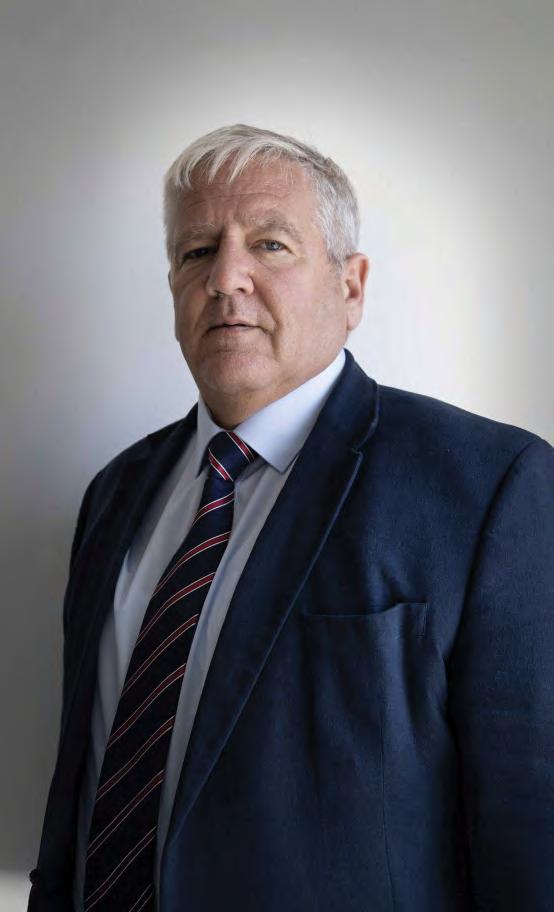
Sean Heckford, Director, Built Asset Consulting, Cavendish Maxwell
In tandem, Crown Prince Mohammed bin Salman has introduced a fiveyear rent freeze in Riyadh for both residential and commercial properties. This stabilisation measure is aimed at protecting tenants during this period of real estate liberalisation, and could be extended to other cities in due course.
Sustainability and ESG in Saudi Housing: From Policy to Practice
Amidst the policy shifts, sustainability and ESG (Environmental, Social, Governance) compliance are also becoming central to the country’s housing development agenda. Codes are no longer aspirational; they’re mandatory and enforceable.
The Saudi Green Building Code (SBC 1001, 2024) is now in full effect, working in conjunction with the energy codes (SBC 601/602) to embed green practices into all new developments. The Saudi Energy Efficiency Centre (SEEC) has issued binding guidance on
residential energy performance, covering insulation, lighting, HVAC, and hot water systems. It now requires an Energy Consumption Intensity certificate for every listed property, enhancing transparency for both buyers and renters.
Thermal insulation is mandated for new builds, supported by technical documentation embedded in the Saudi Building Code.
At the project level, major developments such as NEOM and THE LINE are setting a precedent. These giga-projects are designed as 100% renewable, lowcarbon cities, and this ethos cascades down into their sub-districts through district cooling, sustainable transportfirst plans, and greywater reuse.
Elsewhere, MoMRAH is advancing green certifications such as Ajwad, while initiatives like Green Suburbs are starting to appear in new housing launches and municipal planning KPIs. Developers like ROSHN are already earning top-tier certifications, including Mostadam Diamond, for sustainable project delivery.
Commercial relevance is equally important. Access to global capital, including green loans and sustainability-linked bonds, is increasingly dependent on ESG alignment. Cavendish Maxwell has observed how Saudi Arabia’s urban programmes are aligning with these
sustainable finance frameworks, offering compliant developers a distinct advantage in cost of capital.
Vision 2030: The Engine Behind Strategic Housing Delivery
Saudi Arabia’s Vision 2030 continues to define the direction of the residential market. With a target of 70% Saudi homeownership by 2030, state-linked organisations such as the National Housing Company, ROSHN, and a host of private partnerships are spearheading the delivery.
The Housing Programme reported a 64% homeownership rate by the end of 2023, with platforms like Etmam, a one-stop home ownership solution, and Sakani, which focuses on affordable housing, streamlining the process for Saudi nationals.
Developers are aligning their strategies accordingly. Large-scale, amenity-rich, master-planned communities are now the norm. With ROSHN’s multi-city pipeline, price points are calibrated to cater to the mid-market, in line with national housing goals. Phased delivery is also tied closely to infrastructure deployment.
Riyadh’s major pipeline projects, such as Diriyah, New Murabba, and Sedra, alongside upcoming Jeddah projects like Jeddah Central and ROSHN Al Arous, are set to shape housing supply through 2030.
Financing innovation is also on the rise, with subsidised mortgages, offplan safeguards, and industrialised construction techniques reducing delivery timelines while meeting performance standards required by updated building codes.
The Smart City Revolution and the Role of PropTech
Vision 2030 is not just about housing, it’s about smart urbanism. Pioneering developments like THE LINE are serving as templates for what Saudi Arabia refers to as “cognitive communities,” where 90% of real-time data is analysed to optimise every layer of urban life. This model is already influencing
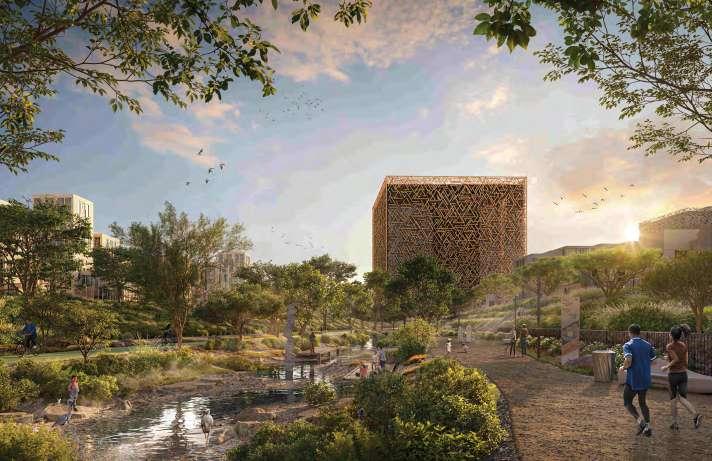
infrastructure, utilities, and residential design in other districts across the Kingdom.
PropTech is playing a crucial enabling role. Digitised property platforms and registries, such as the Ministry of Justice’s Real Estate Registry, the Ejar tenancy system, and Sakani, provide robust data for transaction tracking, compliance, and valuation, forming the digital backbone of the real estate sector.
Cavendish Maxwell leverages these data feeds, alongside Paseetah, GASTAT, and MEED Projects, to produce its triangulated research and analysis. This includes supply forecasts, pricing indices, and sub-market analytics, all benchmarked against GCC markets, such as Dubai, and aligned with broader macroeconomic indicators, including interest rates, inflation, and GDP projections.
Meanwhile, venture capital is flowing freely into the space. In fact, Saudi VC investment rose by 116% year-over-year, reaching $860 million in H1 2025, with a significant portion aimed at PropTech ventures spanning AI, IoT, mortgage journeys, facilities management technology, and smart home systems.
The Next Disruptor: Making Use of What’s Already Built
While technologies like AI and smart homes will continue to gain traction, Cavendish Maxwell sees another disruptor emerging: the repurposing of underutilised or distressed real estate assets.
With Saudi cities evolving rapidly, many prime-located but underutilised properties can be repositioned to meet demand from expatriates seeking short-term housing or younger Saudi professionals needing affordable, centrally located homes.
This trend may quietly reshape the urban landscape more profoundly than any single tech innovation.
Demographics Are Driving Design
Saudi Arabia’s demographics are a major force behind the evolution of residential products. Expats now account for nearly 45% of the population, the highest share since 2017, and both Riyadh and Jeddah together hold over a third of the country’s total residents.
GASTAT’s 2024 estimate puts the total population at 35.3 million, with the growth skewed towards working-age cohorts. By the end of 2025, the figure is expected to surpass 36 million, fuelling sustained demand in key cities.
Developers are responding by designing for younger, dual-income, and mobile households. Mid-market apartments with shared amenities, such as co-working areas, daycare, wellness spaces, and walkable retail, are increasingly common, particularly along transit-served corridors.
At the same time, there’s a renewed emphasis on communityfocused villas and townhouses that accommodate multigenerational Saudi households, while integrating ESG features like solar panels, shaded walkways, and district cooling systems.
Serviced and branded residences are also on the rise, catering to expat executives and relocated RHQ staff, a direct result of eased residency and corporate migration policies. Finally, affordable housing is gaining traction, with more supply entering the segment of attainably priced housing.
Looking Ahead: Cavendish Maxwell’s Strategic Growth Priorities
As Saudi Arabia’s transformation accelerates, Cavendish Maxwell is expanding its footprint in the Kingdom and deepening its advisory services to meet the evolving needs of its clients.
Over the next three to five years, key priorities include:
• ESG and code compliance advisory, particularly in support of green finance, retrofitting, and sustainable energy frameworks.
• Foreign ownership readiness packs for global developers and institutional investors preparing for the 2026 law.
• Digital portfolio management tools that provide real-time insights on project delivery timelines, risks, cost plans, and progress tracking.
As Saudi Arabia reshapes its cities and housing markets, Cavendish Maxwell remains focused on delivering data-driven insight and future-proofed strategies for all stakeholders. BUILDING
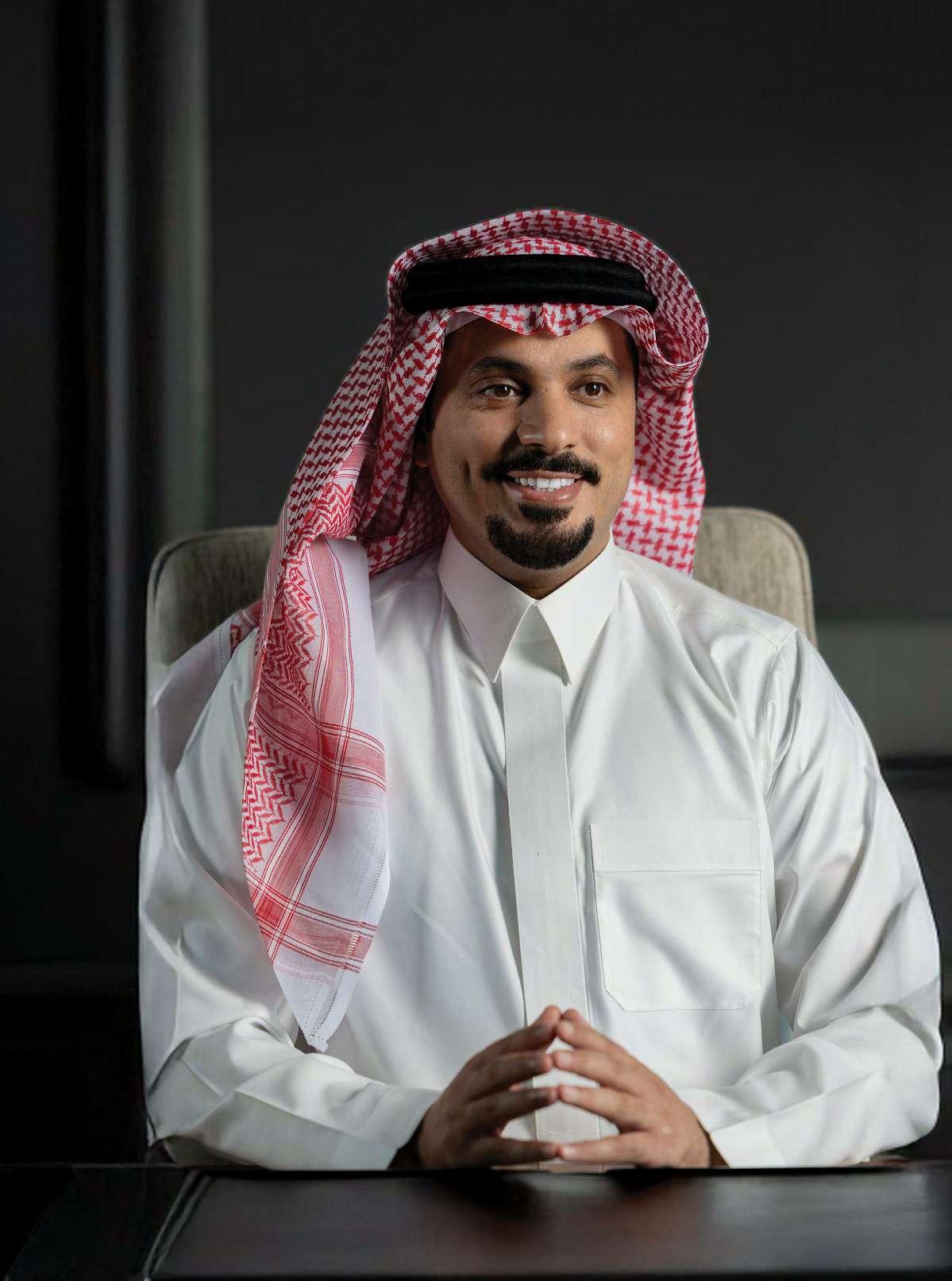
Scaffolds of Timeless Wonder F
Sultan Alshakrah emerges as the master architect of enduring cities, weaving legacies of vision and grandeur that are destined to flourish across generations.
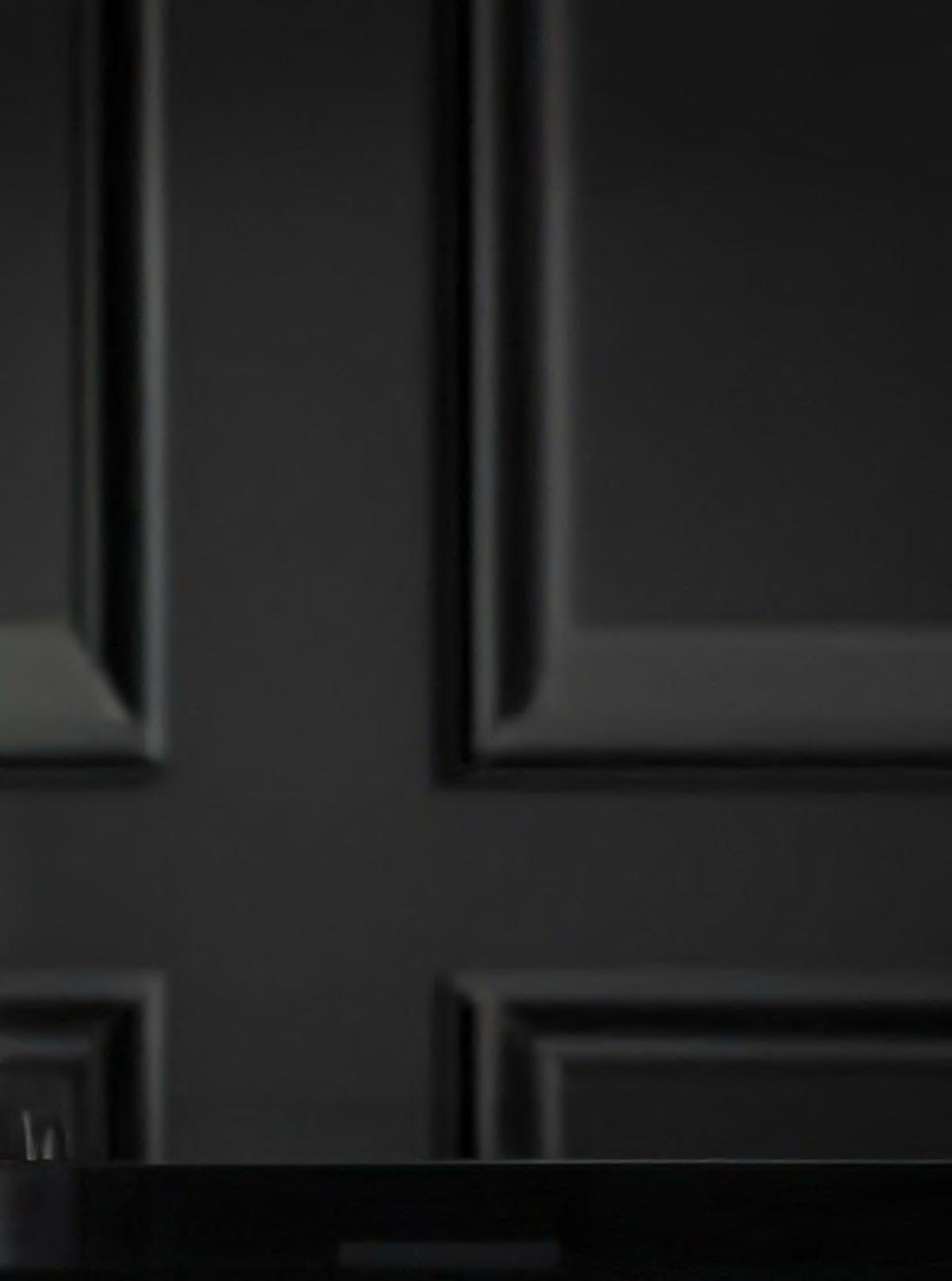
/ Words by: Vibha Mehta
/ Photography: Joel Amparo
rom the glistening shores of Sharjah to the evolving skylines of Saudi Arabia, Sultan Bin Abdullah Alshakrah has never pursued speed for its own sake. As Chairman of Ajmal Makan and CEO of Tanmiyat Al Riyadh, he views development not as a race, but as a responsibility. For him, cities are not fleeting spectacles of glass and steel, but legacies of stone and spirit — places where ambition is tempered by patience, where luxury intertwines with community, and where progress is measured as much by human experience as by economic gain.
Sultan emphasises building with conscience: creating waterfront sanctuaries that honour fragile ecosystems, developing urban environments interwoven with cultural heritage, and designing skylines that rise with permanence rather than haste. His vision is one of balance, where innovation complements tradition, modernity is softened by heritage, and the enduring rhythm of nature guides growth.
In this exclusive interview with Construction Business News
Middle East, Sultan shares not only a roadmap for Gulf cities but a philosophy of endurance — to create places that thrive today, resonate tomorrow, and endure for generations to come.
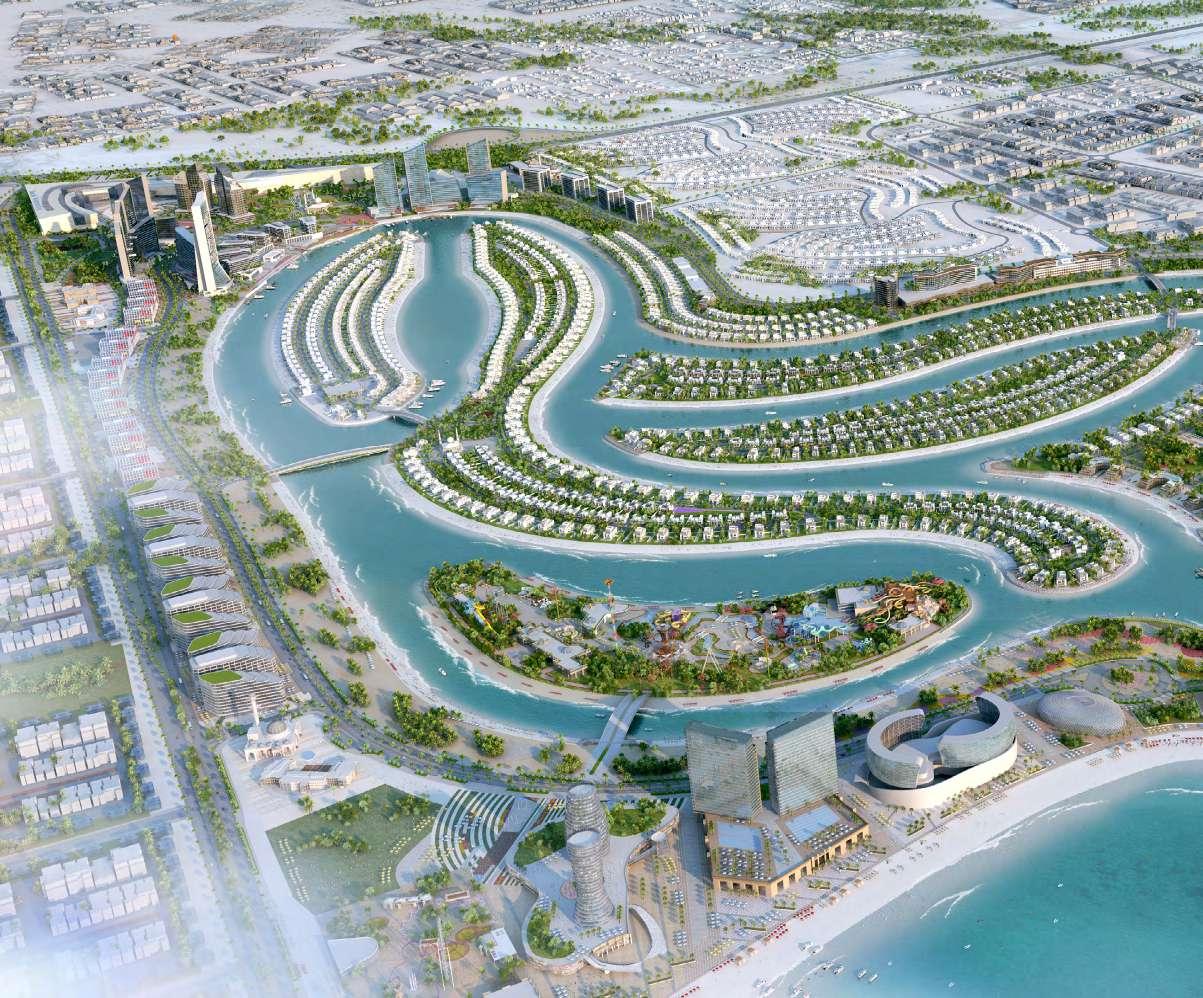
Geography Guides Vision Sultan Alshakrah believes every place has its own rhythm. In Sharjah, where coastlines carry maritime heritage and family traditions, his vision fosters communities that celebrate the sea while offering spaces for families to belong in Saudi Arabia, where the pace of economic growth and urban ambition quickens. His projects feature residential and commercial hubs that drive expansion while maintaining a focus on homes and open spaces, ensuring that community life remains at the centre.
Across both regions, Sultan sees
culture as inseparable from topography — as vital as the land itself in shaping the cities of the future. “We never impose a single model; we listen to the land and its people, shaping urban forms that feel authentic to their surroundings. This dialogue between place and purpose defines Ajmal Makan’s approach,” he shares.
Ajmal Makan City: Coexistence with Coastlines
Sultan describes Ajmal Makan City as an urban ecosystem defined by balance between ambition and humility — a vision that builds on a grand scale while honouring every meter of coastline and
reef. “In Ajmal Makan City, we conducted environmental studies before building,” he explains. “We reinforced marine protection zones, supported coral growth, and developed water circulation systems.”
Buildings are designed to maximise natural light and airflow, while pedestrian pathways prioritise people over traffic. For Sultan, sensitivity to the environment is not a compromise but an enrichment — an approach that enhances the value of development and ensures future generations inherit not only iconic architecture but thriving ecosystems.
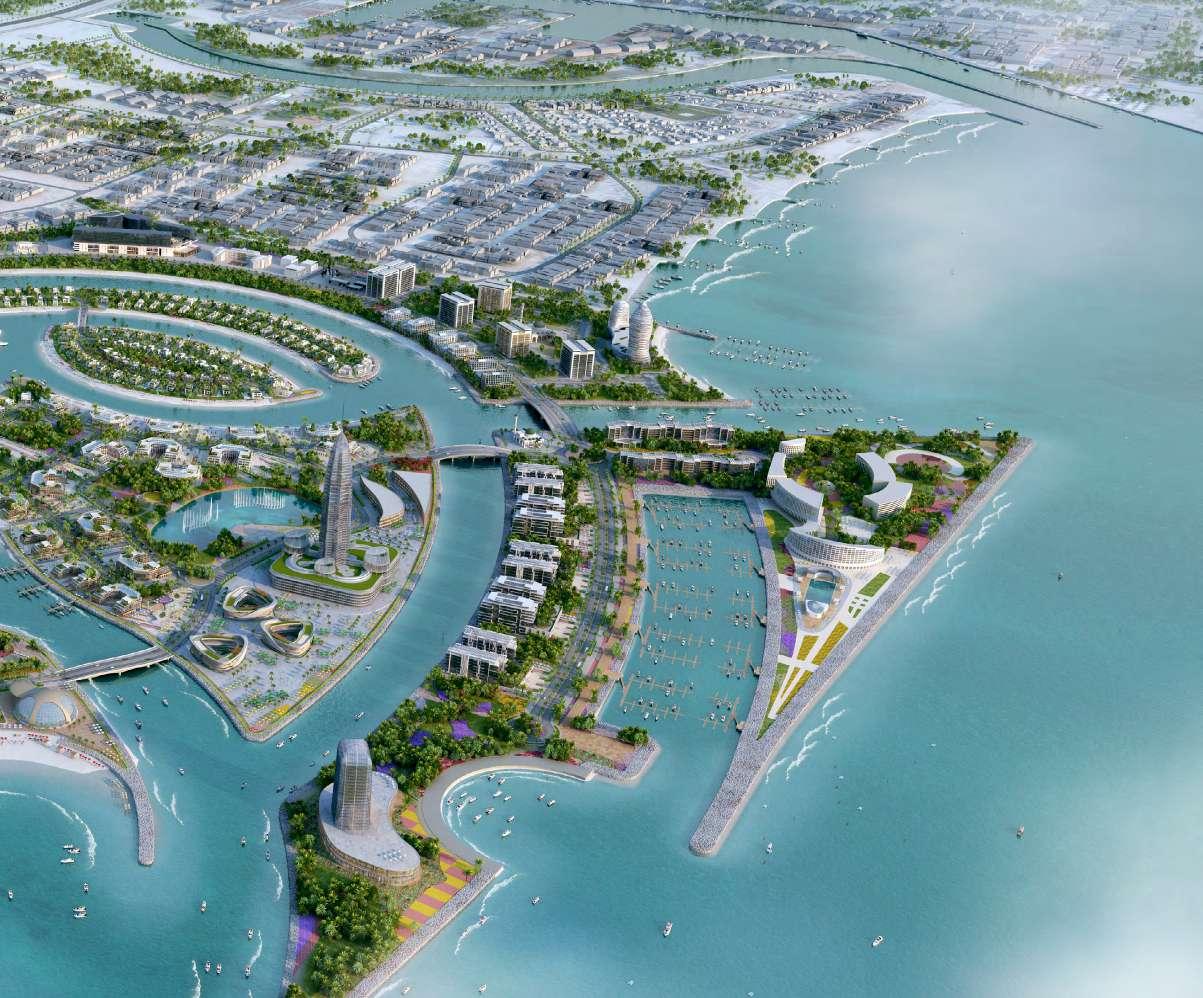
Patience Over Speed
While the Gulf’s real estate market often moves at a rapid pace, Ajmal Makan distinguishes itself by prioritising journeys that last for generations. “We build for decades, not just quarters, so quality, flexibility, and resilience are essential,” Sultan adds. He notes the company works with long-term partners and phases its projects deliberately, gradually introducing homes, schools, shops, and public spaces.
This deliberate pacing, he explains, enables communities to grow organically, businesses to prosper, and the environment to remain safeguarded. Ultimately, his philosophy is to shape places that outlive trends, becoming legacies that future generations inherit with pride.
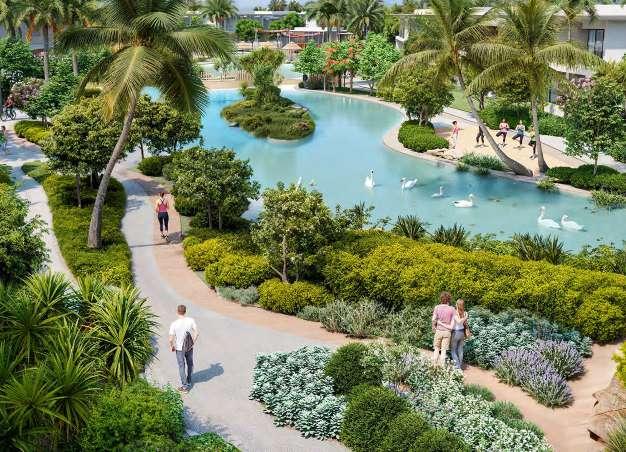
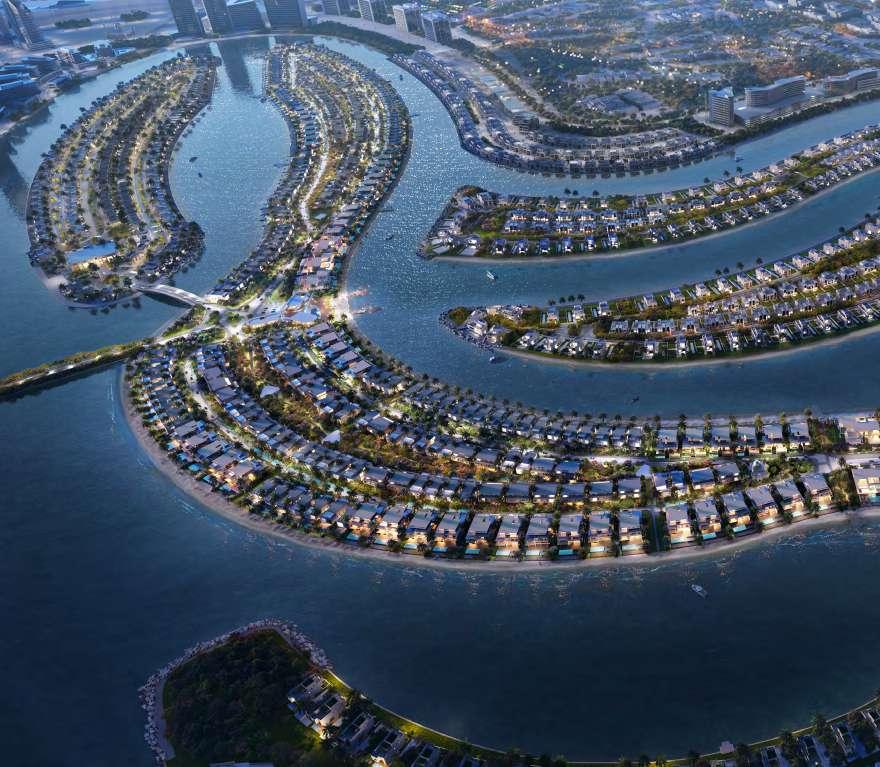
Al
Thuraya’s
Defining Moment
Al Thuraya Island is more than a development; it is a statement. With an investment value of AED 3.2 billion, it reflects years of refining Ajmal Makan’s vision for coastal living. What sets Al Thuraya apart is not only its luxury but also its seamless integration of culture, ecology, and innovation.
“We are introducing smart infrastructure to manage energy and water precisely, implemented gradually in phases. Additionally, coastal landscaping is
designed to enhance natural resilience against erosion. Our marina serves as the social hub, connecting residents with the sea in ways that honour Sharjah’s maritime heritage.”
Sultan takes pride in achieving balance: luxury that feels natural, innovation that genuinely serves people, and a community that remains uncompromised. Al Thuraya is not the flagship for its scale, but because it embodies Ajmal Makan’s essence — timeless, thoughtful, and transformative.
Capital with Purpose
The creation of Waed and Dar Jeddah reflects the Sultan’s conviction that development should not be left at the mercy of market cycles. These funds are designed to shield projects from short-term volatility while ensuring capital is consistently directed to community-focused initiatives.
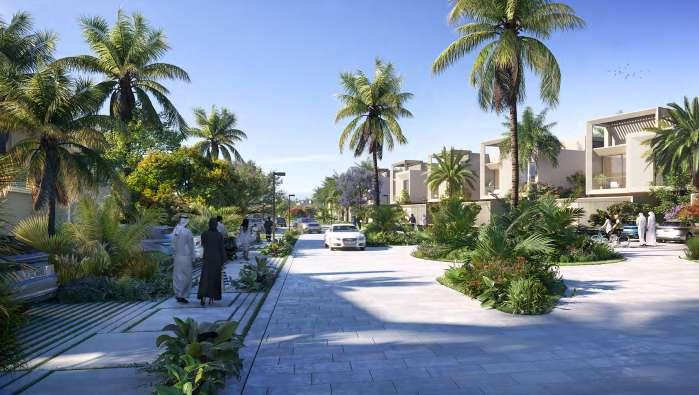
“Waed maximises asset value, ensures strong returns, and places private sector involvement at the core of urban transformation.
Meanwhile, Dar Jeddah balances financial performance with national impact, fostering sustainable growth in key urban areas. In summary, these funds are not merely financial instruments; they are stewards of our commitment to lasting, people-centred urbanism.”
Measuring Lasting Impact
Numbers matter — they reveal scale and stability. Yet for Ajmal Makan, success is not
a balance sheet but a balance between progress and purpose. Impact is measured by how families thrive, how children play safely near the water, how public spaces enrich cultural life, and how communities strengthen the social fabric.
“In Sharjah, we recognise success in how Ajmal Makan City has become a symbol of the emirate’s diversification, solidifying its role as a residential, touristic, and investment destination that attracts visitors, residents, and investors alike,” Sultan affirms.
Balancing Tradition and Progress
Modernity and identity are not adversaries but partners.
“In our developments, we embrace cutting-edge technology, from smart grids to digital mobility solutions, but we integrate them into designs that reflect regional heritage,” he explains. Courtyards, shaded walkways, and wind-catching forms — rooted in Gulf architecture — remain essential, while materials are chosen to mirror local palettes. Public spaces are designed for both traditional gatherings and contemporary leisure.
For Sultan, this duality is crucial: a city without modernity risks irrelevance, while a city without identity risks soullessness. “Our role is to weave these elements together so that residents can take pride in their heritage while feeling confident about their future.”
Shaping Tomorrow’s Gulf
Sultan envisions the next generation of Gulf cities as more than monuments to ambition — they must be livable, resilient, and inclusive. He cites affordable housing, climate adaptability, and equitable economic opportunity as key priorities. Digital transformation will
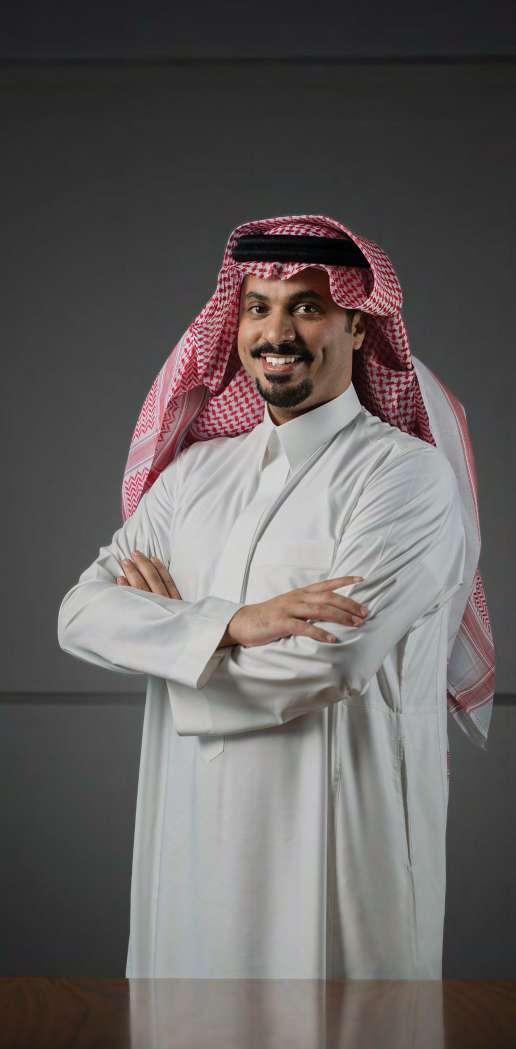
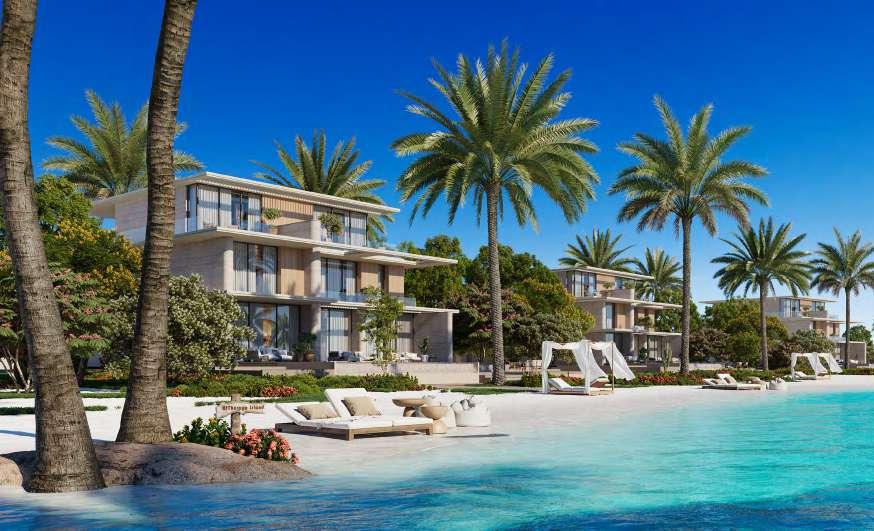
be critical, yet so will walkable, human-scale design.
“Our portfolio reflects this vision through renewable energy systems, mixed-income housing, and mobility options beyond cars. Above all, we commit to adaptability — creating cities that can grow and evolve with their people,” Sultan concludes.
ArchiTecture FOr a ChAngIng World
In Conversation with Mahmoud Shahin, Design Director at P&T Group, as he shares how his design philosophy balances culture, people, and the planet in a rapidly changing world.
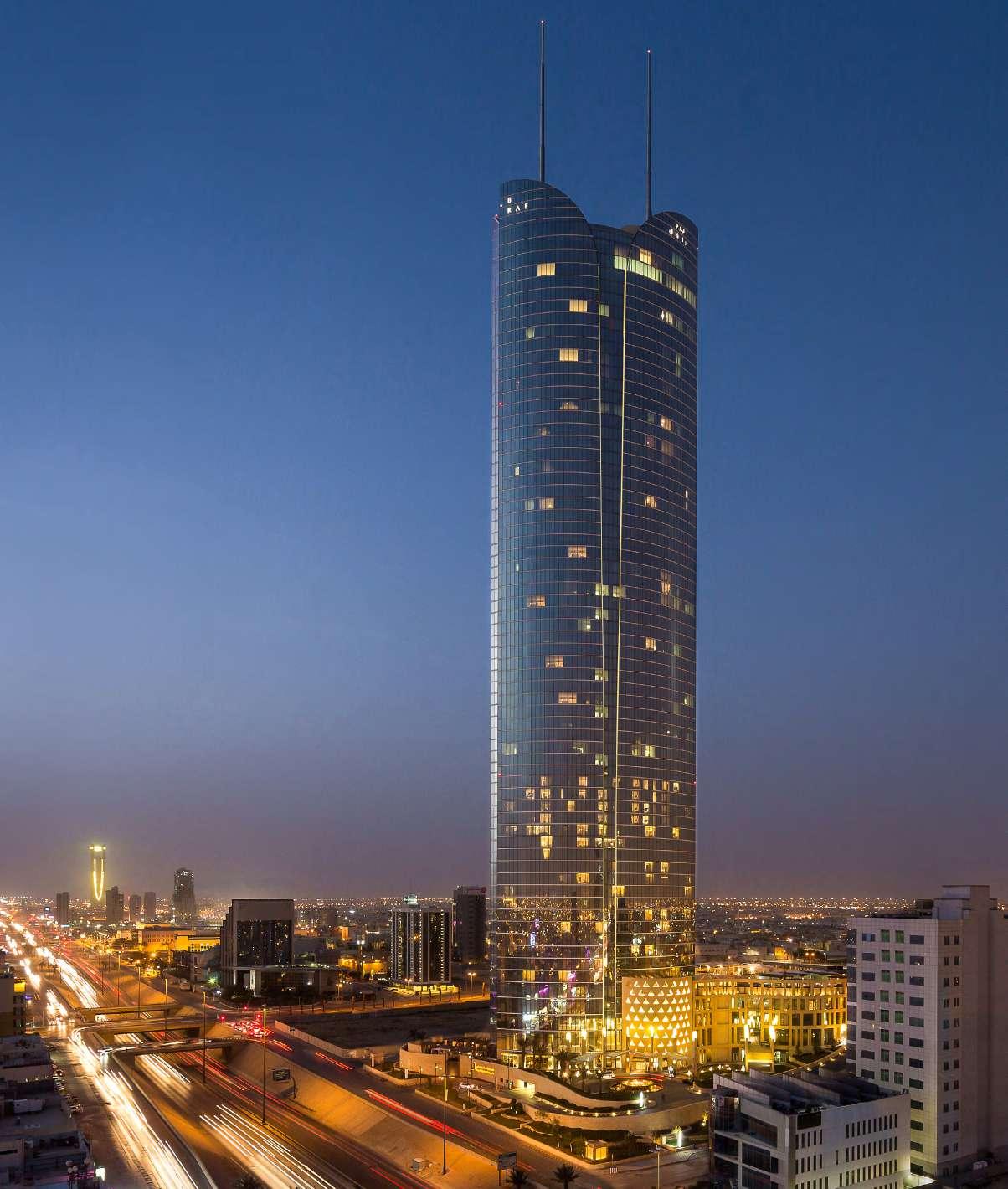
The 70-storey Burj Rafal, Riyadh’s first high-rise residential tower, houses the 300-room Burj Rafal - JW Marriott Hotel on its lower floors, a six-storey podium with dining, fitness, leisure, and retail offerings, and 40 upper floors featuring apartments, duplexes, and an exclusive residence club.
With over 20 years of experience, how has your design philosophy evolved?
My design philosophy has matured through experience and exposure to diverse contexts rather than taking a different direction. Early in my career, the focus was strongly on form and function, yet over time I have come to see architecture as something far more enduring. Working at P&T across the Middle East, Asia and Africa has deepened my appreciation of how architecture must balance human experience, cultural identity and environmental responsibility. With years of practice, I have grown more attuned to how buildings perform for people and for the planet, extending beyond the immediate act of creation to consider their longterm relevance and impact. Today, my approach is aligned with the ethos of the practice, rooted in human experience, contextual sensitivity and sustainability. I view architecture as a discipline that must respond to the present while anticipating the future, particularly a post carbon future where resilience and environmental performance carry as much importance as beauty. This evolution is the result of personal growth, accumulated lessons from projects, and the wider transformation of the industry.
How do you ensure your projects stay connected to their cultural and environmental context?
Every project begins with a thorough study of its site, heritage, climate and community. I regard architecture as a dialogue between people, places and time.
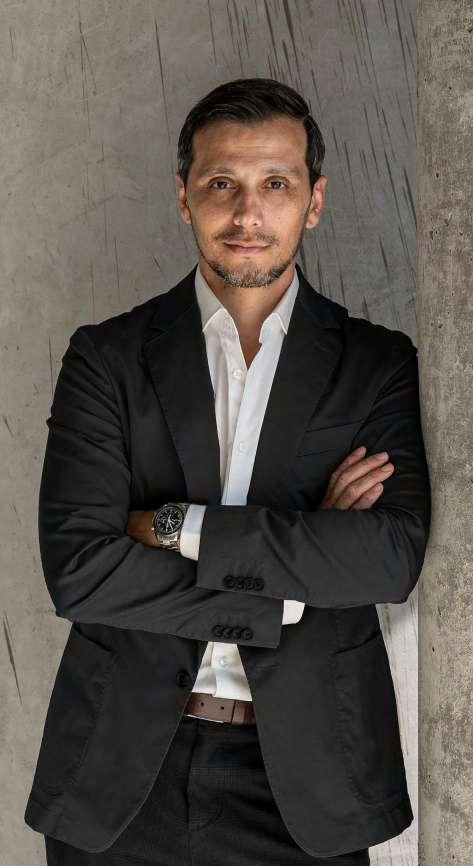
Mahmoud Shahin, Design Director at P&T Group
Designing in Riyadh, for example, is very different from working in Dubai or Lagos, and the architecture must respond authentically to these differences. Culturally, I draw inspiration from local traditions, materials and urban patterns, while reinterpreting them in contemporary ways so the project remains relevant and future ready.
Environmentally, contextual design means working with the climate rather than against it, whether that is orienting buildings to limit solar gain, harnessing prevailing winds, or using shading to improve comfort. Ultimately, a building should feel as though it belongs to its setting, offering both a sense of identity and a sustainable response to its environment.
What strategies are key to reducing embodied and operational carbon in architecture?
Reducing carbon begins at the earliest stages of design. For embodied carbon, we work collaboratively with P&T teams to prioritise low impact materials, such as recycled or locally sourced options, and adopt efficient construction methods that limit waste. For operational carbon, strategies include passive design, natural
Overlooking Dubai’s skyline in Jaddaf, the Al Wasl FC Stadium is designed as an immersive experience, not just a football venue. Inspired by Al Wasl’s “Cheetah” fans, it embodies agility, strength, and vibrancy.
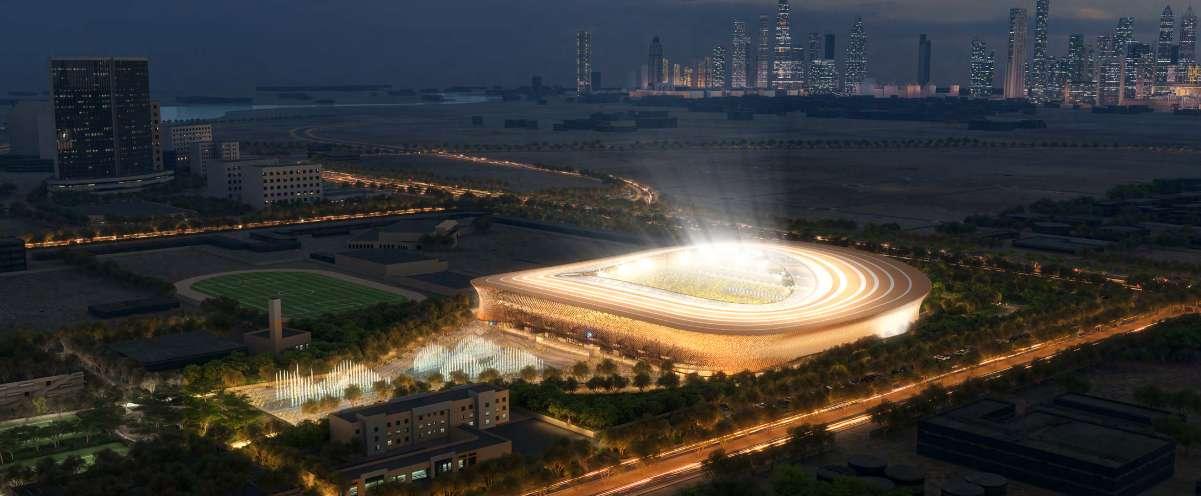
ventilation and daylighting, combined with renewable energy integration and intelligent technologies. The most important step is holistic design, where structure, envelope and systems are optimised in concert rather than as separate elements. Through this integrated approach, we can significantly reduce a project’s carbon footprint across its full life cycle. Sustainability is not an afterthought but a core principle embedded in our design process.
Can you share how projects like the Innovation Hub in Abu Dhabi push sustainable design forward?
The Innovation Hub represents a step towards the future of architecture in a low carbon world. Its design employs the mass of the building to provide shading rather than relying on applied devices, integrates natural ventilation and maximises daylight, which reduces dependence on mechanical systems. Renewable energy is also incorporated to offset operational carbon. Yet beyond the technical strategies, the project creates an environment that fosters collaboration and innovation. It demonstrates that sustainability can elevate creativity. The Hub is as much about the experience of its users as it is about energy efficiency, showing how architecture can set the tone for responsible and inspiring urban futures.
From luxury resorts to high-rise towers, what shifts are you seeing in project types and client demands?
There has been a marked shift in how clients define luxury and value. A decade ago, luxury was often associated with scale, opulence and highly polished finishes. Today, clients and users place equal or greater importance on wellness, sustainability and connectivity. In hospitality, travellers increasingly desire immersive, nature connected experiences rather than only traditional five-star service. In commercial projects, workplaces are now designed to support collaboration, flexibility, shared amenities and employee wellbeing, alongside meeting demanding sustainability targets. Residential projects are moving towards integrated branded communities where liveability and services matter as much as individual units. Clients are seeking architecture that provides enduring value for people as well as for the planet.
As one of the Top 30 Most Influential Architects in MENA, how can regional architects shape global discourse?
The Middle East and Africa are regions of rapid growth, cultural diversity and challenging climates. These conditions create difficulties but also opportunities for innovation. By tackling
issues such as water scarcity, extreme heat and limited resources, architects here are developing solutions that can enrich global practice. Strategies for passive cooling, integrated master planning and hybrid urban models are being tested in this region and can influence other parts of the world facing climate pressures. Regional architects also have a duty to demonstrate that progress does not mean abandoning cultural identity. We can shape cities that are modern yet remain connected to tradition. By sharing these insights internationally, architects from the region can help advance the wider dialogue on sustainability, resilience and authenticity.
How are you mentoring the next generation at P&T, and what skills do you see as essential for young architects? Mentorship is one of the most rewarding aspects of my role. At P&T, we have a collaborative studio culture where young architects feel empowered to contribute ideas, take responsibility and learn through real project engagement. We encourage them to participate in competitions, design reviews and client presentations, so they gain experience across all aspects of practice. The skills that matter most today extend beyond design talent. Adaptability is essential, given the speed of change in our profession. Environmental literacy is equally vital, since sustainability has become central to design. Strong communication is also critical, because architecture requires collaboration across multiple disciplines and stakeholders. Above all, I encourage young architects to think critically about the social and environmental impact of their work, so they can develop the mindset to become leaders in their own right.
How do you see Middle Eastern architecture adapting to climate change and rapid urban growth?
The region is undergoing significant transformation. Climate change and fast paced urbanisation are compelling us to rethink how we design both cities and buildings. Architecture is adapting by prioritising passive strategies, renewable energy and resilient planning. There is a growing emphasis on walkability, accessible public spaces and stronger community integration, moving away from car dependent planning towards human centred urbanism. Increasingly, projects are judged by their contribution to long term sustainability targets, including ambitions for net zero emissions. What is inspiring is that the Middle East is creating its own design frameworks, rooted in culture and climate, that have the potential to guide other regions as they face similar challenges.
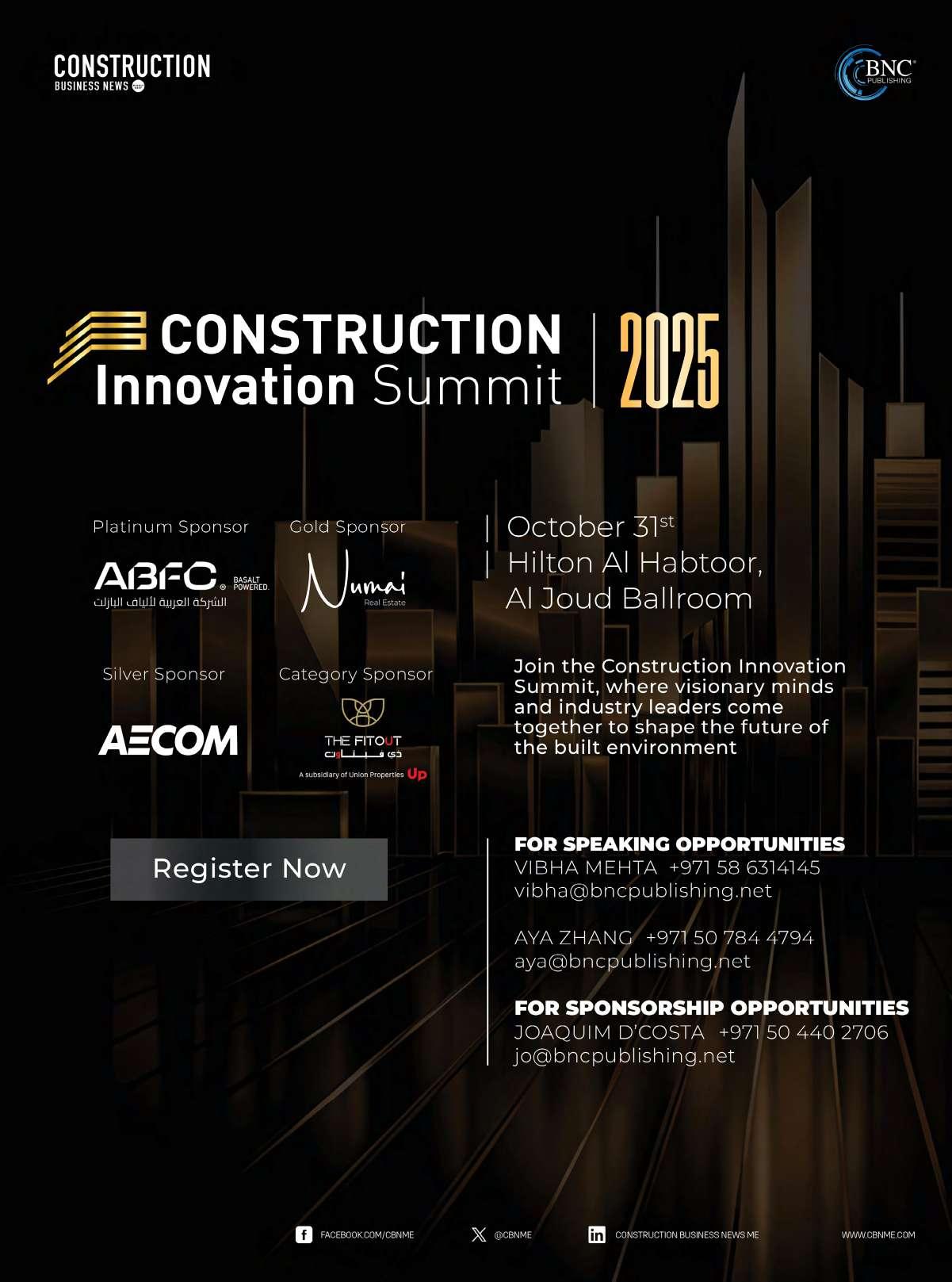
ALEC Holdings Launches IPO On Dubai Financial Market
ALEC Holdings has officially announced the price range and opened the subscription period for its initial public offering (IPO) on the Dubai Financial Market (DFM)
• Price range has been set at between AED 1.35 and AED 1.40 per share, implying a market capitalisation at listing of between AED 6.75 billion (US$ 1.84 billion) [1] and AED 7 billion (US$ 1.91 billion).
• IPO subscription for Individual Subscribers (First Tranche), Professional Investors (Second Tranche), and Eligible ALEC and ICD Employees (Third Tranche) starts today and closes on 30 September 2025.
• A total of 1,000,000,000 (one billion) ordinary shares (the “Offer Shares”), equivalent to 20% of ALEC’s share capital, will be offered in the IPO, with the Investment Corporation of Dubai (the “Selling Shareholder” or “ICD”), reserving the right to increase the size of the Offering at any time prior to the end of the subscription period at its sole discretion.
• The final offer price will be determined through a bookbuilding process and is expected to be announced on 1 October 2025.
• ALEC is expected to distribute a cash dividend of AED 200 million in April 2026 and a cash dividend of AED 500 million for FY 2026 in October 2026 and April 2027, implying a dividend yield with respect to FY 2026 of c. 7.1% at the high end to c. 7.4% at the low end of the offer price range.
• Admission of ordinary shares for trading on the DFM (“Admission”) is anticipated on or around 15 October 2025.
• The Offering is compliant with Shariah principles and the Internal Shariah Supervision Committee of Emirates NBD Bank PJSC has issued pronouncements to this effect.
ALEC Holdings PJSC (under conversion in Dubai, UAE) (“ALEC” or the “Company”), a market-leading diversified engineering
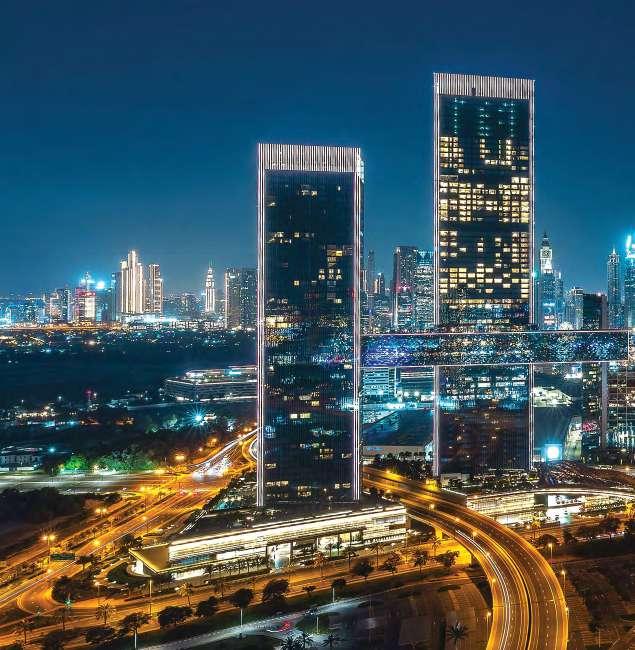
and construction group, today announces the offer price range per share (“Price Range”) and the start of the subscription period for its initial public offering (“IPO or the “Offering”) on the Dubai Financial Market (“DFM”).
Details of the Offering Price Range
The price range for the Offering has been set at between AED 1.35 and AED 1.40 per share, implying a market capitalisation at listing of between AED 6.75 billion (US$ 1.84 billion) and AED 7 billion (US$ 1.91 billion).
A total of 1,000,000,000 (one billion) Offer Shares, equivalent to 20% of ALEC’s share capital, will be offered, resulting in a total Offering size of between AED 1.35 billion (US$ 368 million) and AED 1.40 billion (US$ 381 million).
All of the Offer Shares are existing shares, with ICD, the principal investment arm of the Government of Dubai, selling 20% of its ownership in the Company. ALEC will not receive any proceeds from the Offering. Following the Offering, and subject to the size of the Offering not being increased, the Selling Shareholder will continue to hold a stake of 80% in the Company. ICD reserves the right to amend the size of the Offering at any time prior to the end of the subscription period at its sole discretion, subject to the applicable laws and the approval of the SCA.
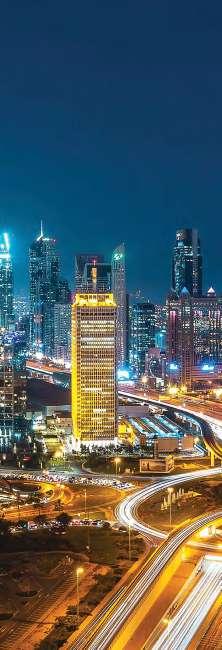
Based on the announced dividend policy, which is available in the UAE Prospectus and the International Offering Memorandum, ALEC is expected to distribute a cash dividend of AED 200 million in April 2026, and a cash dividend of AED 500 million with respect to the financial year ending 31 December 2026, with the first payment being made in October 2026 and the second payment made in April 2027. Based on the financial year dividend of AED 500 million, the offer price range implies a dividend yield from c. 7.1% at the high end of the Price Range to c. 7.4% at the low end of the Price Range. Thereafter, the Company expects to distribute cash dividends on a semi-annual basis (in April and October of each year), with a minimum payout ratio of 50% of the net profit generated for the relevant financial period, subject to the approval of the Board of Directors and the availability of distributable reserves.
Subscription Process
As previously announced, the Offering consists of three tranches:
1. Individual Subscribers Offering (First Tranche), 5% of the Offer Shares, which is directed at retail investors and eligible entities holding a National Investor Number (NIN) with the DFM (“Individual Subscribers”);
2. Professional Investors Offering (Second Tranche), 94% of the Offer Shares, which is directed at qualified institutional investors
outside the United States under Regulation S, subject to applicable UAE laws and SCA approval (“Professional Investors”); and 3. Eligible ALEC and ICD Employees Offering (Third Tranche), 1% of the Offer Shares, which is directed at eligible employees of ALEC and eligible employees of ICD (“Eligible ALEC and ICD Employees”). Further, a number of ordinary shares, representing 10% of all Offer Shares (deducted from the total size of the Second Tranche), are reserved for Emirates Investment Authority (“EIA”) and the Pensions Social Security Fund of Local Military Personnel (“Fund”), 5% each. If the EIA and the Fund do not exercise their preferential rights to apply for Offer Shares, then those Offer Shares will be available to other Professional Investors.
The IPO subscription period starts today and runs until 30 September 2025 for all tranches. The final offer price will be determined through a bookbuilding process and is expected to be announced on 1 October 2025.
The completion of the Offering and Admission are currently expected to take place on 15 October 2025, subject to market conditions and obtaining relevant regulatory approvals in the UAE, including approval of Admission to listing and trading on the DFM.
Pursuant to an underwriting agreement entered into between the Company, the Selling Shareholder, and the Joint Bookrunners on the date hereof (“Underwriting Agreement”), the remaining ordinary shares held by the Selling Shareholder following Admission shall be subject to a lock-up which starts on the date of Admission and ends 180 days thereafter, subject to certain permitted transfers as set out in the Underwriting Agreement. The Company will also be subject to a 180day lock-up period following the date of Admission pursuant to the terms of the Underwriting Agreement.
Details of the Offering are available in the UAE Prospectus with respect to the First Tranche and Third Tranche and the English-language International Offering
Memorandum with respect to the Second Tranche. The UAE Prospectus and the International Offering Memorandum are available at www.alec. ae/ipo.
Price Stabilisation
In connection with the Offering, the Selling Shareholder has appointed xCube LLC who may, to the extent permitted by applicable law, regulations and rules, effect stabilisation transactions on up to 100,000,000 (one hundred million) Offer Shares (the “Stabilisation Shares”), with a view to supporting the market price of the Stabilisation Shares at a higher level than that which might otherwise prevail in the open market.
Shariah Compliance
The Internal Shariah Supervision Committee of Emirates NBD has issued a pronouncement confirming that, in their view, the Offering is compliant with Shariah principles.
Emirates NBD Capital PSC (“Emirates NBD Capital”) and J.P. Morgan Securities PLC (“J.P. Morgan”) have been appointed as joint global coordinators and joint bookrunners (the “Joint Global Coordinators”), and Abu Dhabi Commercial Bank PJSC (“ADCB”) and EFG-Hermes UAE Limited (“EFG Ltd.”) acting in conjunction with EFG Hermes UAE LLC (“EFG LLC” and together with EFG Ltd., “EFG-Hermes”) have been appointed as joint bookrunners (together with the Joint Global Coordinators, the “Joint Bookrunners”). Moelis & Company UK LLP DIFC Branch has been appointed as independent financial adviser (the “Independent Financial Adviser”).
Emirates NBD Bank PJSC has been appointed as the Lead Receiving Bank. Abu Dhabi Commercial Bank PJSC, Abu Dhabi Islamic Bank PJSC, Al Maryah Community Bank, Commercial Bank of Dubai PJSC, Dubai Islamic Bank PJSC, Emirates Islamic Bank PJSC, First Abu Dhabi Bank PJSC, Mashreq Bank PJSC and Wio Bank PJSC have also been appointed as Receiving Banks. Emirates NBD Bank PJSC’s IPO call centre can be reached at 800 ENBD IPO (800 3623 476).
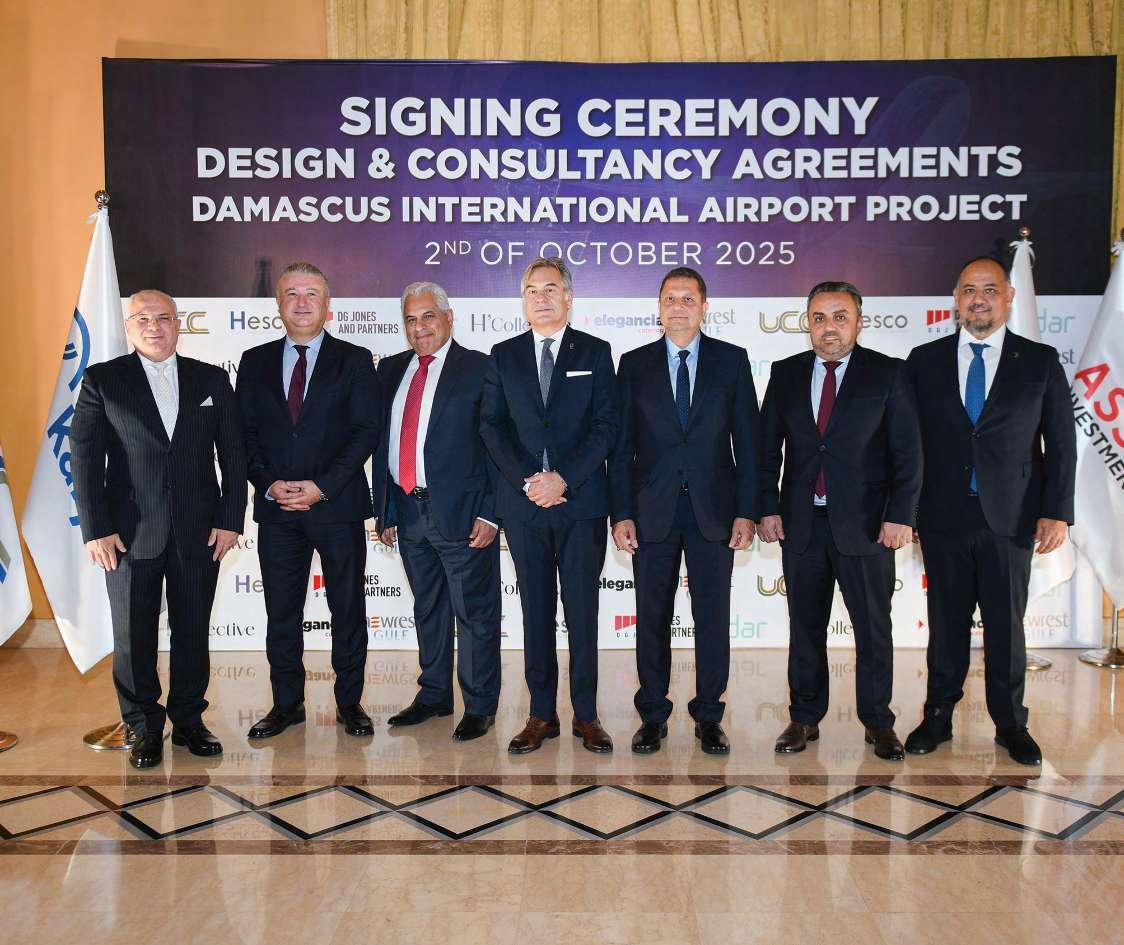

UCC Holding, on behalf of the JV partners and through its subsidiary Urbacon Airports, has signed five consultancy and design agreements as part of the Damascus International Airport comprehensive redevelopment project.
Scopes include the redevelopment of the airport and all associated facilities — a phased redevelopment designed to reach 31 million passengers annually. This consists of the refurbishment of existing terminals and buildings, as well as the design and development of a new five-star hotel adjacent to the airport, featuring 200 premium rooms, multiple dining and leisure facilities, and direct terminal access. The hotel will be managed and operated by an internationally recognised hospitality brand, ensuring world-class service and guest experience.
Additionally, works are now underway across key infrastructure packages, including the beautification and enhancement of the Airport Road — a vital corridor connecting the Lebanon–Syria border to Damascus International Airport— incorporating upgraded entrances and exits, improved safety and connectivity, enhanced lighting, and comprehensive landscaping. Together, these initiatives form part of a transformative, multi-phase redevelopment program designed to create a modern, efficient, and sustainable aviation hub that meets ICAO and IATA international standards.
UCC Airport signed the agreements with the following companies:
• HESCO Hammada Engineering Services: Responsible for the design and rehabilitation of Terminals 1 and 2, as well as the design of the new Terminal 3 and all associated facilities. HESCO brings extensive experience across more than 25 major infrastructure and airport development projects in the region, ensuring technical excellence and international design compliance.
• H’Collective: Responsible for the architectural and interior design of the new Damascus Airport Hotel. The scope spans all stages — from concept
to construction design — ensuring an optimised layout and a premium guest experience. H’Collective has successfully designed over 20 hotels in partnership with leading international hospitality brands worldwide.
• Dar Al-Handasah (Shair and Partners): As the Project Management Office (PMO), responsible for site supervision, design review and approval, oversight of design development, and verification of project schedules and interim payments, ensuring quality, safety, and timely delivery. The scope also encompasses the study and enhancement of the Damascus Airport Road, including reviews of maintenance and connectivity, as well as proposing both short-term beautification and comprehensive upgrade options in line with international standards. Dar AlHandasah brings extensive global aviation expertise, having contributed to more than 40 international airport projects across the Middle East, Africa, and Asia.
• DG Jones and Partners: Responsible for contract management, cost control, and quantity surveying, leveraging a global portfolio of over 30 airport and aviation infrastructure projects, ensuring value engineering, transparency, and financial efficiency.
• JV Elegancia Catering and Newrest Gulf: Overseeing the design and operation of the airport’s central kitchen and in-flight catering facilities. Both entities collectively bring over 15 years of experience from international airport catering and hospitality projects, delivering operational excellence and world-class service quality.
The Damascus International Airport Development Project is led by Urbacon Airports, in collaboration with Cengiz İnşaat and Kalyon İnşaat from Türkiye, and Assets
Investments from the United States — uniting global expertise to deliver a transformative aviation gateway for Syria. Through this strategic partnership between international and regional firms, the project aims to establish world-class airport infrastructure that enhances connectivity, drives economic growth, and positions Damascus as a key hub on the global aviation map.
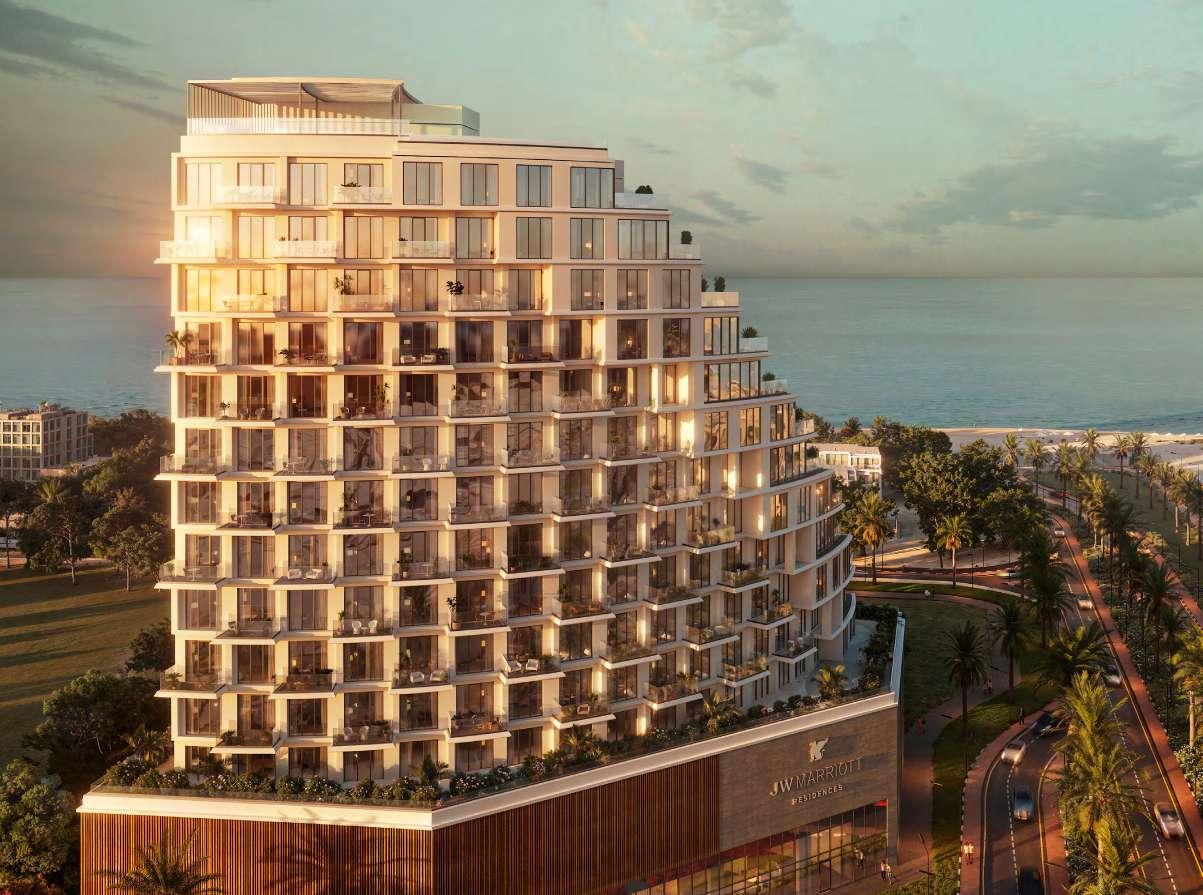
Evolving Through Generations
Rahul Chaudhary, Managing Director of CG Corp Global and CG Developers Global, carries forward a century-old legacy that began in Nepal in 1935 — a story of vision, resilience, and global ambition
CG Developers Global, a member of CG Corp Global, has announced its partnership with Marriott International for the launch of Dubai’s first JW Marriott Residences — marking a significant milestone in the company’s regional expansion and commitment to delivering landmark luxury developments
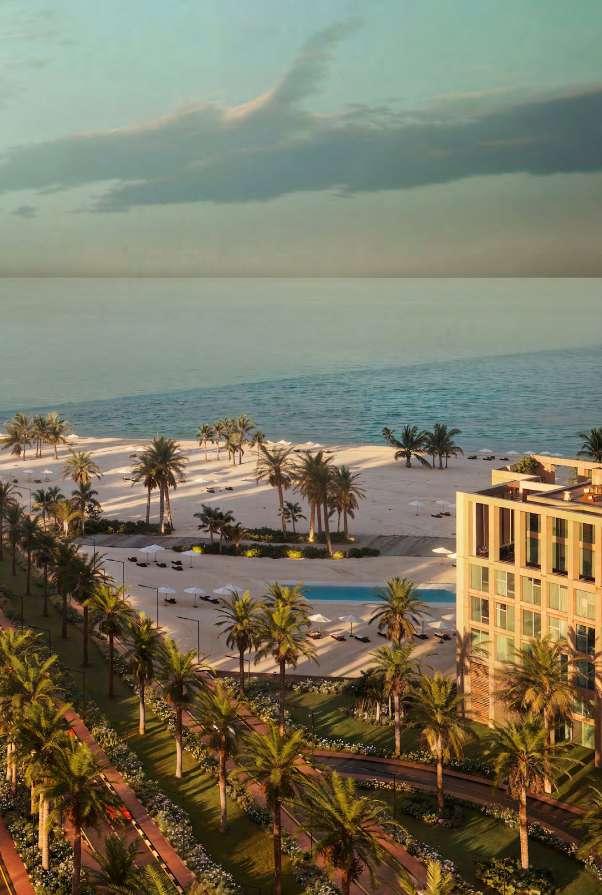
What started as the Chaudhary family’s humble roots has evolved into Nepal’s first multi-billion-dollar multinational conglomerate, with a presence spanning continents and four generations of leadership.
Founded in 1995, CG Developers Global has crafted over 2 million square feet of landmark real estate worth more than US$1 billion, blending precision with prestige. Its latest luxury development, nestled in the heart of Dubai Islands, is a testament to the brand’s
design philosophy — where architectural mastery meets timeless elegance, and every structure tells a story of heritage meeting modernity. Here, Rahul Chaudhary shares insights into the company’s vision and its strategic drive to expand and accelerate its global portfolio…
How do you balance CG Corp Global’s legacy with innovation?
Our legacy is the compass, and innovation is the engine. Over four generations, CG has been built on values of resilience, ambition, and responsibility. I see my role as carrying that ethos forward while reimagining how it fits in today’s world. That’s why our CG Hospitality strategy is now focused on eco-friendly and green hotels, which we are pursuing through our brand Fern in India and across our branded residences — with the first JW Marriott Residence, which we launched in Dubai just this month. Equally, wellness is a strong pillar for us through our brand, The Farm. For me, balancing legacy with innovation means respecting the foundation we were given, but never being afraid to reinvent the way we serve the next generation of travellers.
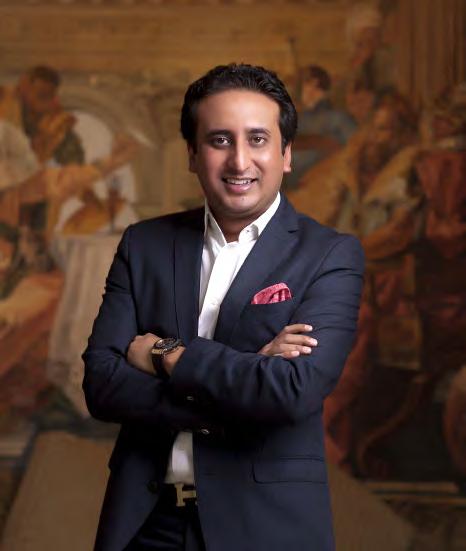
Rahul Chaudhary, Managing Director of CG Corp Global and CG Developers Global
What drives your global expansion strategy across 32 countries?
What drives us is a simple philosophy — go where the opportunities are, but do so responsibly. We operate today across 32 countries with nearly 200 hotels, and our target is to grow to 600 by 2028. Our strategy is now focused on growing our Fern brand to 500 hotels by 2030, taking The Farm brand global with a target of 25 hotels by 2030, and expanding branded residences across the 12 markets where we are currently active. This covers our strategy for ecofriendly hotels, wellness, and branded residences.
At the core, we are driven to be in emerging and frontier markets. These markets could also be mature, but our focus remains on frontier locations within them. In addition, our focus is also toward experiential travel, which we are expanding by creating circuits in Sri Lanka, China, and beyond.
Why was Dubai chosen for the JW Marriott Residences launch?
Dubai is now the centre of the world, a true culmination of nationalities and diversities. We’ve witnessed the residential market there bloom, with branded residences only growing stronger over time as discerning travellers seek second homes — and some primary residences as well.
The Dubai Islands are the third major island development, following the success of the Palm Jumeirah, and we see no reason why they shouldn’t thrive equally. With the launch of the first JW Marriott Residences — a brand with immense global recall — we are confident Dubai is the right market to begin this journey.
How do you see the future of branded residences globally?
Branded residences are no longer a niche — they are becoming the future
of urban luxury living. Globally, people are seeking homes that offer not just comfort, but also the trust, service, and lifestyle associated with renowned hospitality brands. For us, branded residences are an extension of our philosophy — combining real estate with hospitality to create experiences that go beyond walls. I see this segment growing rapidly, especially in markets such as the Middle East and Asia, where aspirational living is on the rise.
What factors guide your hospitality partnerships with brands like Marriott and Taj?
Our partnerships are built on shared ethos. With Taj, there’s a natural alignment in our shared belief in heritage, authenticity, and timeless luxury — our journey with IHCL began in 1997 through its brand, Taj, in Sri Lanka, followed by two hotels in the Maldives. Since then, we’ve grown to
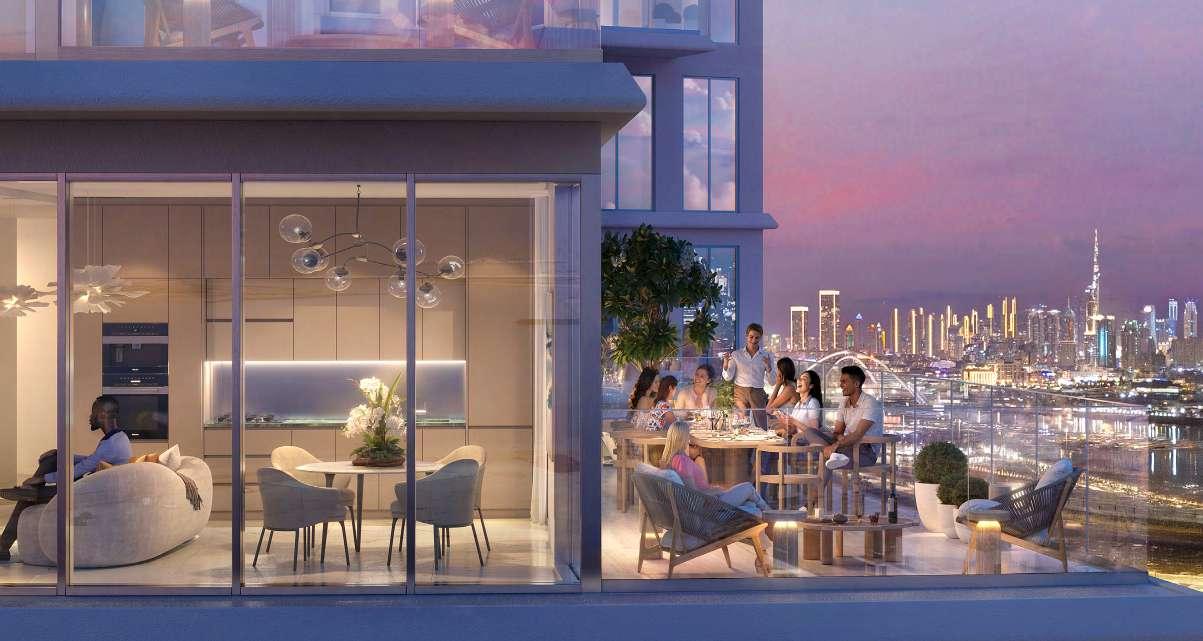
Set within the emerging Dubai Islands, the JW Marriott Residences at Central will offer a refined coastal lifestyle with seamless connectivity to the city’s main routes. The project is slated for completion by early 2028
approximately 15 hotels, including two that were recently opened in Bhutan. With Marriott, the alignment is in scale and forward-looking innovation. Together, we’ve taken The Farm into the Autograph Collection and brought The Fern into Series by Marriott™.
For us, it’s never just about signing a deal. It’s about partnering with brands whose philosophy complements ours: Taj brings depth of tradition, Marriott brings global systems and reach, and we bring entrepreneurial agility and local insight.
What challenges do you foresee in reaching 600 hotels by 2028?
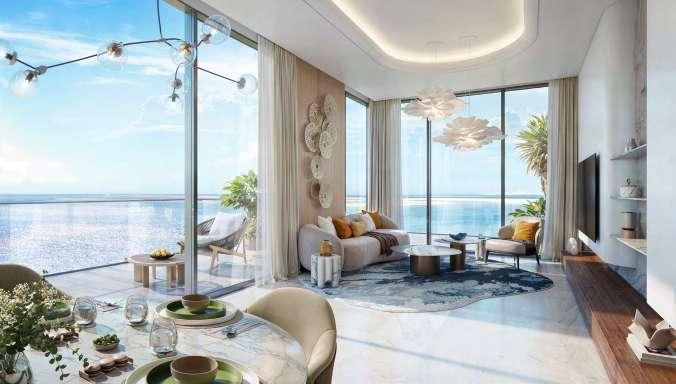
Reaching 600 hotels in just a few years is ambitious, and the road won’t be without hurdles. The biggest challenges are maintaining consistency across markets, managing costs in a highinflation environment, and ensuring every property lives up to our promise of authenticity and quality.
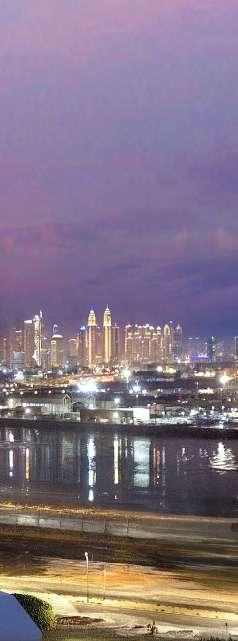
India itself is a growth story. We are already opening almost 30 hotels a year, but we need to double that pace to achieve our goal of 500 hotels in India by 2030. The potential is immense — with 750+ districts in India, we’ve only tapped around 75. Every tier-two city is expanding so quickly that I see no reason why Fern cannot be on every street corner.
How do you manage leadership across multiple business verticals?
We have competent teams worldwide leading our operations. Our approach is to work with them through strong partnerships — from identifying opportunities to execution — while I set the vision, provide direction, and ensure our values remain intact.
The vision for CG Developers Global in the Middle East is to create branded residential products that redefine the living experience. The next step will be to expand across the GCC and beyond. Each residence will ideally include a hotel component, complementing and strengthening the overall model. We strongly
believe that this strategy will be effective and create unique synergies between the hospitality and real estate sectors.
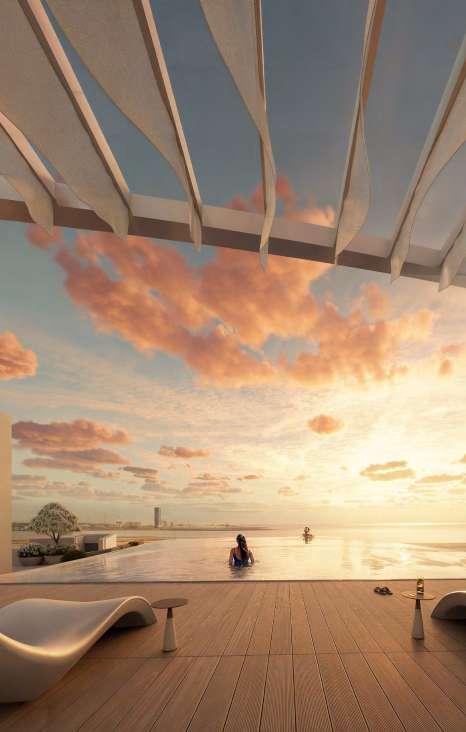
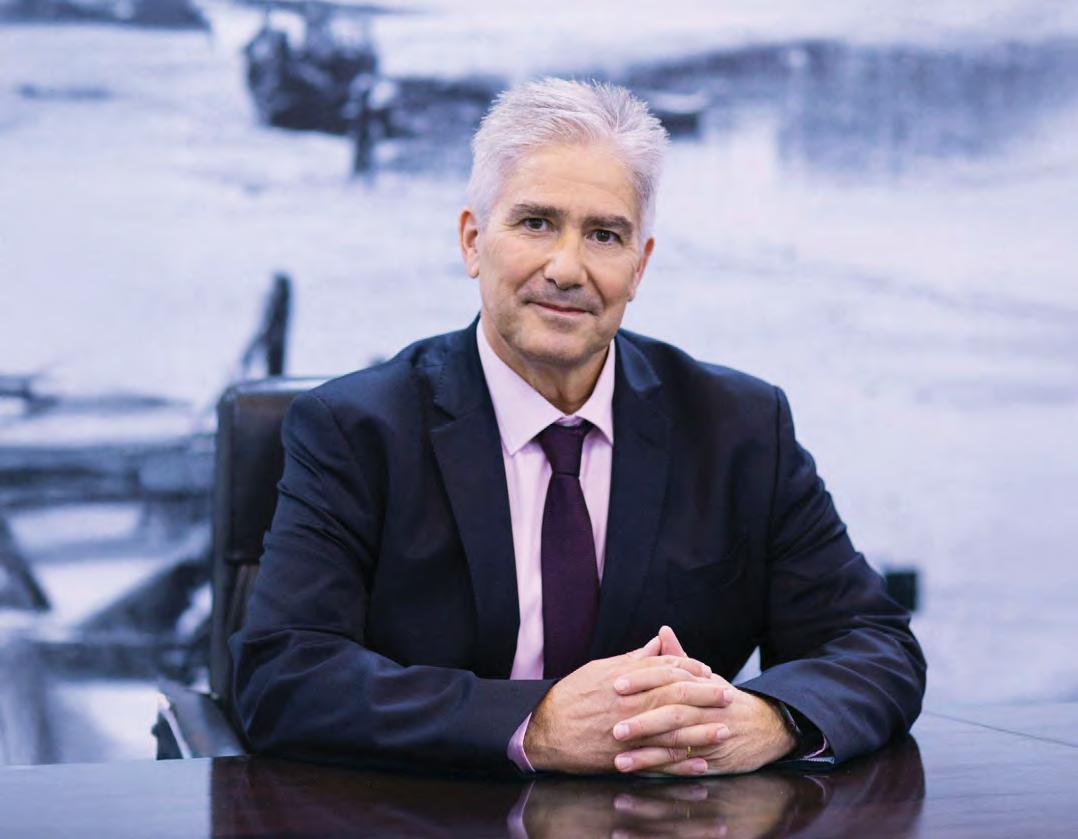
People First, Progress Always
Anthony Marke, CEO, Dulsco People, discusses how the company is scaling its impact through AI, strategic partnerships, and a deep commitment to workplace well-being and national development goals
A Legacy That Began in 1935
Since its humble beginnings in 1935, Dulsco People has been intricately woven into the fabric of the UAE’s nation-building journey. What started as a modest team supporting maritime activities has, over the decades, transformed into a workforce of over 23,000 employees, serving more than 3,700 clients both locally and internationally.
This growth is not coincidental. It is the result of organic evolution, strategic foresight, and a deep understanding of the region’s everchanging workforce needs. From offering basic
foundational support in its early days, Dulsco People has grown into a key enabler of sectoral excellence, a transformation driven by continuous investment in training, innovation, and industry-specific expertise.
Adapting to a Changing Economy
As the UAE’s economy has diversified and expectations around efficiency, compliance, and sustainability have intensified, Dulsco People has consistently evolved to keep pace. The company has entered new sectors, embraced global best practices, and aligned itself with modern workforce trends, all while maintaining a core commitment to service excellence.
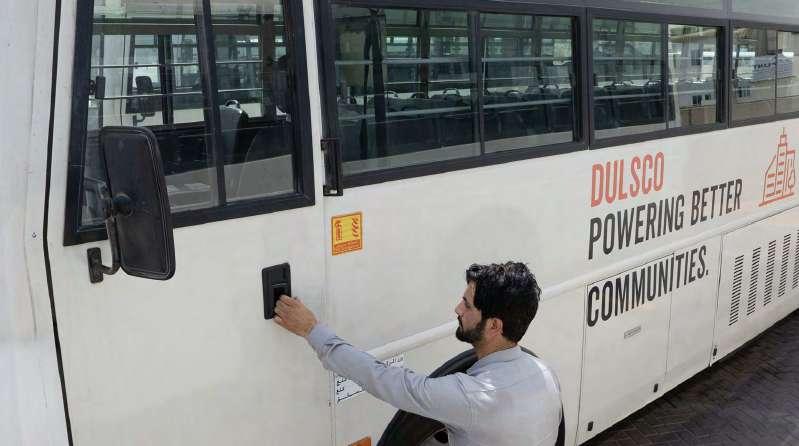
By responding to the demands of a dynamic economy, Dulsco People has positioned itself as a trusted partner to clients across a wide array of industries, from logistics to aviation, maritime to municipal services.
Tailoring Solutions Across Land, Sea, and AirRejecting the One-Size-Fits-All Model
With such a broad operational scope, how does Dulsco People meet the unique demands of vastly different industries? The answer lies in its refusal to apply a one-size-fits-all approach. Instead, the company cocreates bespoke workforce solutions tailored to each client, utilising a comprehensive 360° workforce model. Rather than merely matching CVs to job descriptions, Dulsco People takes a more holistic approach.
It identifies individuals with the right technical capabilities, attitude, adaptability, and cultural alignment to thrive in each unique environment, whether at a port, logistics hub, or aviation terminal.
Deep Sectoral Expertise and Commitment to Safety
What sets Dulsco People apart is its sector-specific insight and an unwavering focus on compliance and safety. Every recruit undergoes rigorous health and safety inductions, technical training, and ongoing upskilling, aligned with international standards, ensuring they are equipped to perform safely and effectively from the outset.
Health and Safety: More Than Just ComplianceAligning with International Standards
At Dulsco People, health and safety aren’t just obligations; they are fundamental to how the organisation operates. The company adheres to internationally recognised standards, including ISO certifications and global HSE frameworks, applying them across every project and sector.
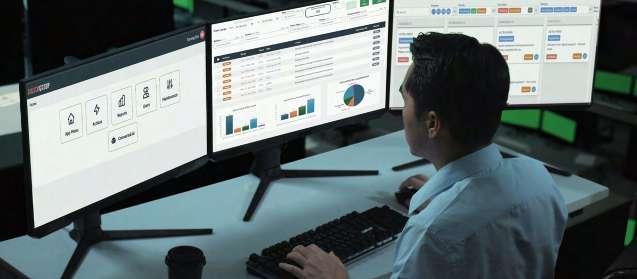
But for Dulsco, this is just the baseline. The company’s approach to safety is proactive and deeply embedded in its culture. Continuous training is provided through a mix of in-house learning modules, digital platforms, and expert third-party collaborations, ensuring employees stay sharp, compliant, and confident.
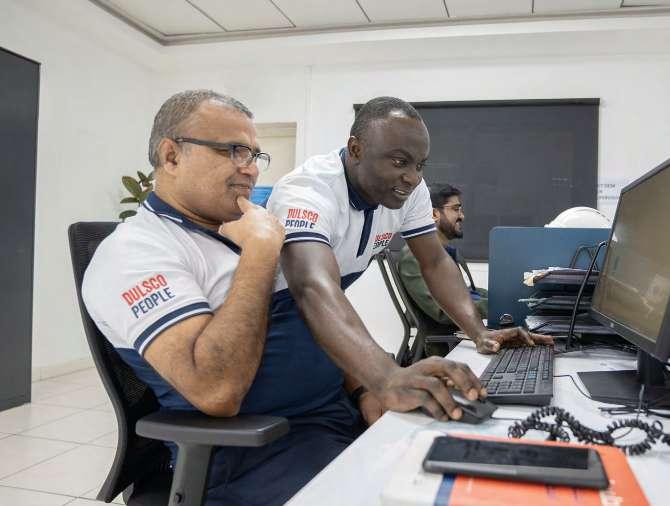
Integrated Systems and Dedicated Support
The business has also established centralised systems and robust client relationship management practices, supported by a pool of ready-todeploy professionals. Dulsco People remains fully compliant with the UAE’s Wage Protection System (WPS) and MOHRE regulations, with dedicated in-house teams for recruitment, QHSE, and training.
The Dulsco Training Academy: A Benchmark for Excellence
A standout asset is the Dulsco Training Academy (DTA) - a 7,600 sqm, purpose-built facility that delivers industry-specific, worldclass training. This includes driver competency programmes, technical skill development, and safety workshops tailored to specific sectors. The aim: to reduce incidents, boost confidence, and elevate overall standards across the workforce.
From Traditional Training to Immersive Safety Innovation- Closing the Gap with AI and the Metaverse While traditional training methods have long played a role in workforce preparation, Dulsco People identified
a gap. Classroom and on-road training, though valuable, often fall short in replicating the high-pressure, realworld scenarios drivers face on the job.
To close this gap, the company invested in a revolutionary AI- and metaverseenabled training platform. This immersive experience enables drivers to navigate real-world challenges in a safe and controlled environment, drastically improving learning retention and enhancing workplace safety.
Safety as a Pillar of Wellbeing and Social Impact - Workplace Safety is the Foundation
For Dulsco People, safety goes hand in hand with workplace wellbeing. When employees feel secure, they are more engaged, more productive, and more likely to grow within their roles. This, in turn, creates stronger communities and more resilient industries.
Dulsco’s health and safety initiatives are part of a broader approach that addresses physical safety, mental wellbeing, and professional development. It’s not just about meeting regulations, it’s about building a workforce capable of supporting the
UAE’s ambitious, long-term vision.
Using Technology to Predict and Prevent Risks
• From Monitoring to Prevention Technology at Dulsco People isn’t used reactively; it’s used predictively. In its advanced driver safety training programmes, the company combines AI, psychometrics, and metaversebased simulations to redefine defensive driving instruction.
Individual risk assessments are created using psychometric profiling, while AI-powered behavioural monitoring tracks key driving metrics, such as acceleration, braking, and lane handling. This enables the system to identify potential hazards in real-time and recommend targeted interventions.
• The QR-Enabled Driver Passport
Another innovation is the QR-enabled Driver Passport, a digital record updated weekly with training history, compliance status, and performance metrics. This tool ensures complete transparency and accountability, enabling timely interventions and reinforcing a culture of continuous improvement.
Shaping the UAE’s Future Workforce
Looking ahead, Dulsco People sees its role as integral to the UAE’s longterm workforce strategy. As the nation transitions to a knowledge-based, innovation-driven economy, the need for a flexible, skilled, and future-ready workforce has never been greater.
Dulsco People is committed to bridging the gap between current industry demands and future opportunities. This includes a strong focus on reskilling and upskilling, embedding sustainability into workforce planning, and nurturing lifelong learning as a core value.
The company’s ambition goes far beyond meeting today’s needs. It aims to shape a resilient, competitive workforce capable of supporting the UAE’s diverse economic vision. Through its ongoing investments in training, safety, technology, and wellbeing, Dulsco People is not just enabling businesses, it is empowering individuals and driving social progress.
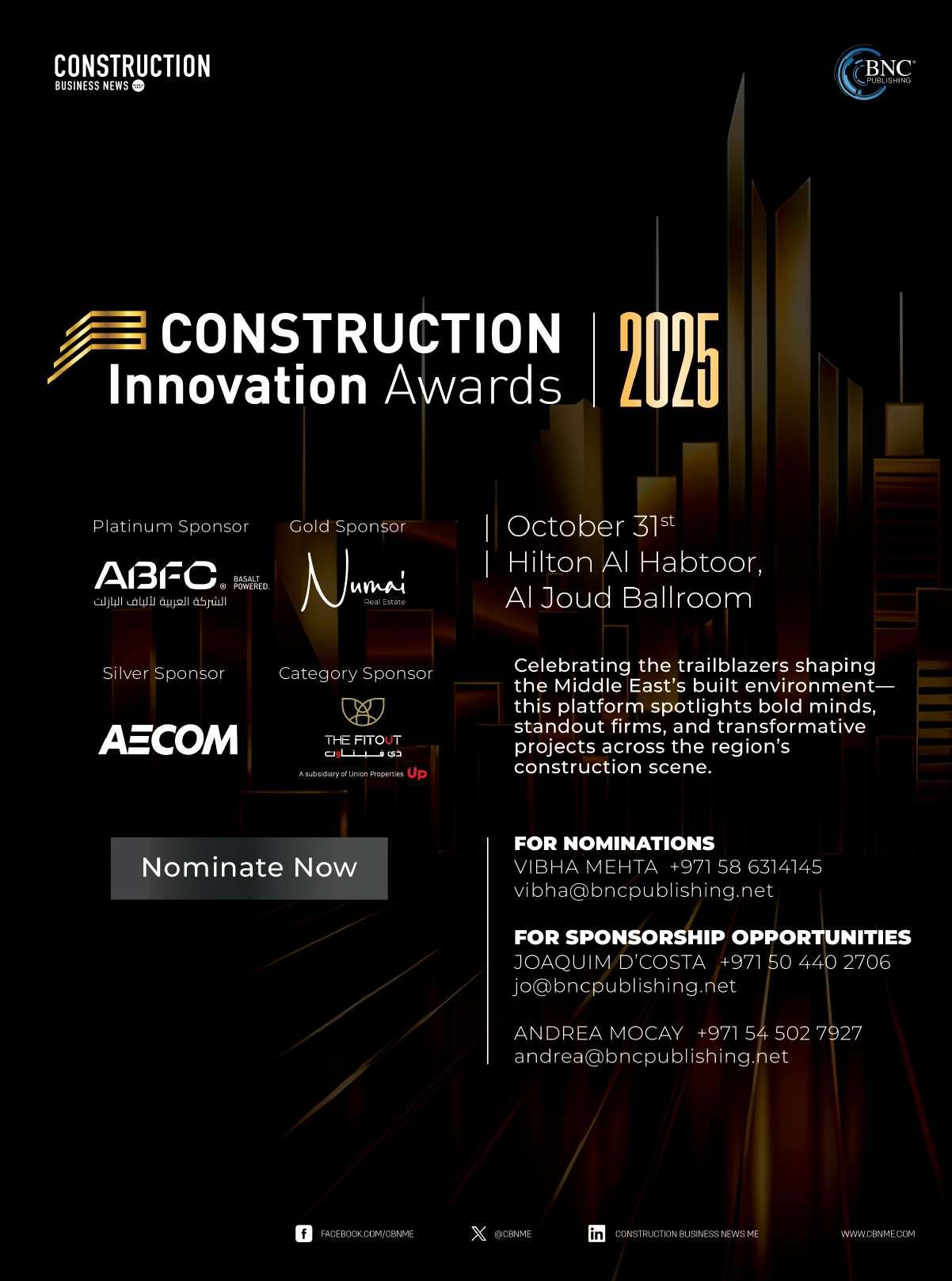
Creating Sustainable, Human-Centred Spaces in the Desert
Facilities Management teams are stepping up to ensure that biophilic design moves beyond architectural intent to everyday reality, overseeing everything from indoor gardens to smart lighting, to foster well-being in the heart of urban life


In a region known for gleaming skyscrapers and desert heat, the idea of reconnecting with nature might once have seemed a luxury. Today, it has become a necessity. Across the GCC, Facilities Management (FM) teams are no longer simply keeping buildings operational; they are actively shaping the well-being of occupants. And one of the most powerful tools at their disposal? Biophilic design.
The integration of nature into the built environment to promote health, comfort, and cognitive function. Once considered an aesthetic luxury, biophilic principles are now backed by science, embedded in sustainability frameworks, and increasingly demanded by building users. FM teams are
at the forefront, translating these ambitions into everyday practice.
Why Biophilic Design Matters, and What the Science Says
Biophilic design improves human wellbeing, productivity, and even clinical recovery outcomes. A Review Frontiers In Built Environment 2024 found that biophilic features, including natural light, vegetation, water elements, and organic materials, reduced stress and enhanced cognitive performance in healthcare and workplace settings.
In Saudi Arabia and the UAE, where rapid urbanisation often results in harsh, high-density environments, the need for human-centred buildings is particularly urgent. A sustainability journal study in 2024 analysed biophilic interior elements in traditional Saudi homes, including courtyards, passive cooling, and material choices, finding that even pre-modern architecture embedded wellness into its spatial DNA.
Modern FM strategies are now rediscovering this heritage, adapting it for today’s high-performance buildings and aligning it with ambitious sustainability goals such as Saudi Arabia’s Vision 2030. Landmark developments such as Riyadh’s King Abdullah Financial District (KAFD) and Dubai’s Sustainable City embody these principles through extensive green spaces, renewable energy systems, and smart infrastructure, all of which rely on FM teams to ensure ongoing occupant comfort and environmental performance. Similarly, Masdar City in Abu Dhabi sets the benchmark for zero-carbon living with biophilic courtyards and shaded streets that FM teams maintain to optimise microclimates and sustainability metrics.
From System Checks to Holistic Wellness
Biophilic design can only fulfil its potential when actively supported by ongoing operational care, and this is precisely where Facilities Management plays a crucial role. A 2022 post-occupancy evaluation of an office building in Al Ain revealed that, despite thoughtful architectural intent, over half of the surveyed occupants reported issues with thermal comfort and indoor air quality. These concerns were not rooted in poor design, but rather in operational misalignment —a challenge that FM teams are uniquely positioned to address.
By overseeing and optimising building systems, FM professionals ensure that wellness features are not only present but also perform as intended on a day-to-day basis. This includes monitoring and adjusting HVAC systems to maintain consistent air quality and temperature, managing live greenery such as indoor plants and rooftop gardens, implementing smart lighting that aligns with natural circadian rhythms, and addressing acoustics to reduce unwanted noise. Additionally, FM teams maintain water features and energy-efficient irrigation systems while integrating real-time occupant feedback through sensors and digital platforms.
In essence, FM bridges the gap between design and experience, transforming biophilic principles from static concepts into dynamic, lived realities that actively support health and wellbeing.
Making Biophilic Work in Arid Climates
Introducing nature into buildings in Riyadh or Dubai presents unique challenges. High temperatures, dust, and limited water resources require context-specific strategies, demanding innovation from FM teams.
For example, a 2024 study highlighted how the Jebel Hafeet Wellness
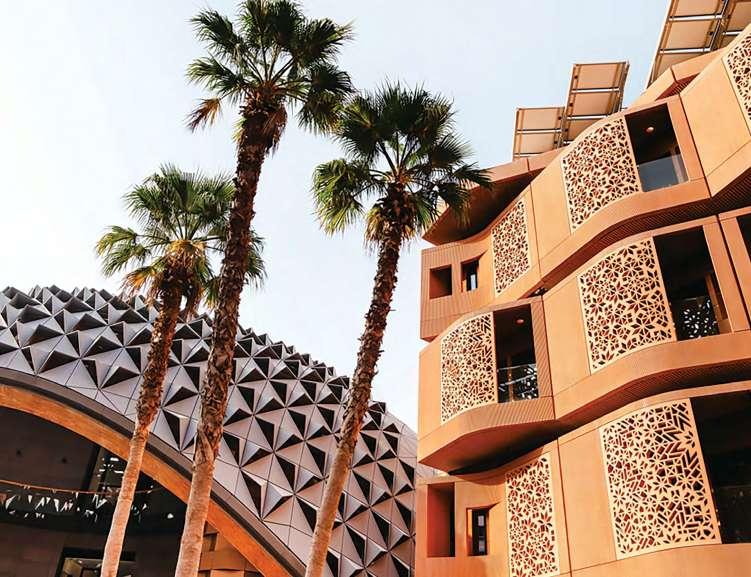
Centre in Al Ain leveraged a climateresponsive, parametric roof to reduce energy use by 34% and solar gain by 25%. Yet those savings and indoor comfort levels depend entirely on sustained operational management. Similarly, the Diplomatic Quarter in Riyadh employs native landscaping, shaded walkways, and cooling corridors to mitigate heat and support pedestrian comfort. FM teams here manage irrigation, soil quality, and plant health, all underpinned by performance contracts and sustainability KPIs.
Operationalising Wellness: Data, Compliance and Performance
An increasing number of buildings in the GCC are pursuing wellness certifications, such as WELL, Mostadam, and Estidama, which emphasise health and sustainability. FM plays a core role in achieving and maintaining these standards.
Moreover, Saudi Arabia’s National Energy Efficiency Programme mandates performance tracking across HVAC, water heating, and lighting systems, encouraging FM teams to adopt digital twins, IoT devices, and building management system (BMS) dashboards.
At university campuses and corporate offices, FM teams are beginning to digitally monitor occupant comfort and compare it with benchmarks. A 2023 study from a Riyadh campus showed that factors like light levels,
humidity, and noise significantly impacted student satisfaction, even when energy efficiency was high, highlighting the importance of wellness-focused FM workflows.
FM as Wellness Custodian
As GCC cities transition towards knowledge-based, human-centred development, FM must evolve from reactive maintenance to proactive wellbeing stewardship. This involves training FM teams in biophilic design and occupant psychology, embedding green maintenance into service level agreements (SLAs) and key performance indicators (KPIs), and aligning FM strategies with Vision 2030’s ambitious sustainability goals.
FM’s role also extends beyond individual buildings to support community wellness, enhancing parks, promoting walkability, and improving microclimates across urban districts. Projects such as Qiddiya in Riyadh and Al Raha Beach in Abu Dhabi exemplify this shift, with large-scale green spaces and water-sensitive urban design that require dedicated FM input to thrive.
Ultimately, the spaces FM manages are not merely assets but living environments. By embracing biophilic integration and leveraging insights from these regional examples, FM professionals are helping to rehumanise buildings across the GCC, creating healthier, more sustainable futures from the inside out.
InfrastructureMotion in
Al Nasr Contracting Company LLC has been entrusted with an AED 169 million contract to craft the internal road networks and vital infrastructure for Bay Villas at Dubai Islands — a project that blends engineering precision with the island’s luxurious coastal charm
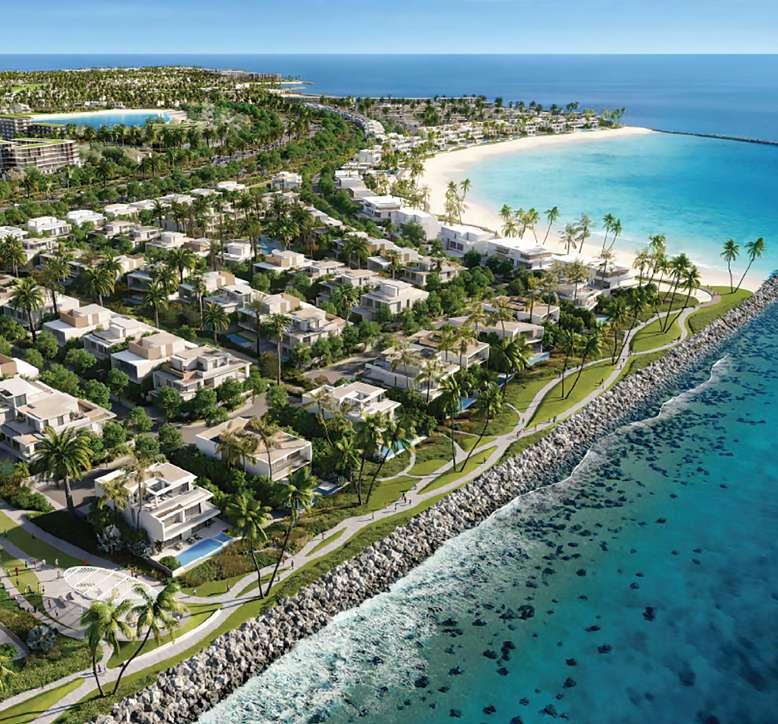
Nakheel, a member of Dubai Holding Real Estate, has awarded an AED 169 million contract to Al Nasr Contracting Company LLC for the delivery of internal roadworks and key utility infrastructure at Bay Villas, part of the landmark Dubai Islands development.
The scope of work includes developing access roads throughout the 636-unit waterfront community and installing essential utility networks to seamlessly connect homes, public spaces, and the wider island systems. This milestone reflects Nakheel’s commitment to integrating
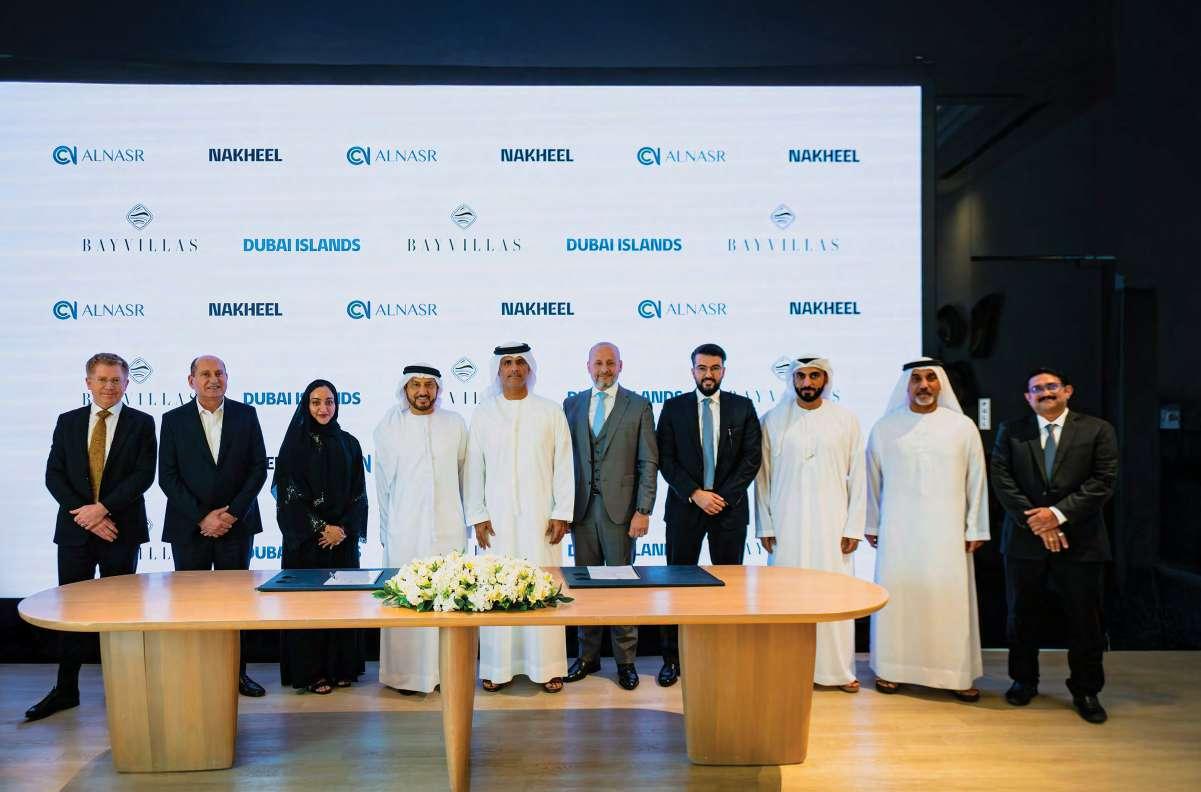
infrastructure delivery with construction sequencing, ensuring a smooth community build-out and enhanced living experiences for residents.
Commenting on the announcement, Khalid Al Malik, CEO of Dubai Holding Real Estate, said: “Awarding this contract to Al Nasr marks a crucial phase in the creation of Bay Villas, establishing a solid infrastructure foundation for the community from day one. Al Nasr’s proven civil engineering expertise and strong safety record align perfectly with our mission to create
sustainable, high-quality living environments. This investment not only supports Dubai Islands’ emergence as a premier waterfront destination but also enhances the connectivity and long-term value for residents.”
Jean Nicolas El Helou, CEO of Al Nasr Contracting Company LLC, added: “We are proud to collaborate with Nakheel, a pioneering force in Dubai’s real estate landscape, to deliver the critical infrastructure for Bay Villas. Our focus is to ensure every element meets Nakheel’s exacting standards, contributing to a
vibrant, well-connected community that exemplifies modern waterfront living.”
Earlier this year, Nakheel awarded a AED 2.6 billion construction contract to Fibrex Contracting LLC for the main development of Bay Villas. Set within a resort-inspired setting, Bay Villas will feature townhouses, semidetached homes, garden villas, and premium waterfront residences — a key part of the Dubai Islands vision that supports the Dubai 2040 Urban Master Plan through sustainable design, thoughtful urban planning, and enriched community living.

Capital Meets Construction
Maha Al Shamsi, Emirati entrepreneur and Co-Founder of MSKD Global, is reshaping the art of commercial brokerage in the UAE — seamlessly bridging global capital with local opportunities across construction, real estate, and trade
Let’s start with the big picture. How do you see the future of commercial brokerage evolving in the UAE, particularly in supporting large-scale construction and infrastructure developments?
The future of commercial brokerage in the UAE is moving firmly into a strategic role. It’s no longer just about connecting two parties for a deal; it’s about shaping outcomes for mega projects that define the nation’s growth and development. As the UAE continues to invest in large-scale construction, logistics hubs, renewable energy, and transport infrastructure, brokerage firms like MSKD Global are becoming partners in building these visions.
Recently, we brokered a landmark deal with a leading American real estate firm, globally recognised through its Netflix presence, to establish its footprint in the UAE. That deal reflected not just transactional success, but also the power of brokerage to bridge international capital and local opportunities. In the future, brokerage firms will play a crucial role in accelerating projects, ensuring compliance, and structuring investments in a manner that is both commercially viable and aligned with national diversification objectives.
MSKD Global is known for connecting global capital with local opportunity. What are investors most excited about in the UAE right now, and what do they often misunderstand?
Investors are highly excited about the UAE’s growth in three areas: logistics and supply chain infrastructure, renewable energy, and smart, sustainable communities. The country’s geographic positioning makes it a natural hub connecting Asia, Africa, and Europe, which is why ports, airports, and free zones are attracting significant capital investment. We are also seeing enthusiasm for renewable energy projects, ranging from solar to hydrogen, as the UAE positions itself as a leader in the energy transition.
The misunderstanding often lies in assuming the UAE is purely a real estate play or only a luxury market. While real estate remains strong, the economy today is far more diversified. Technology, healthcare, advanced manufacturing, and food security are all investment frontiers. Another misconception is around regulation. Global investors sometimes believe the market lacks transparency, when
in fact the UAE has among the most robust regulatory and compliance frameworks in the region. Those who recognise this breadth are the ones who see the true opportunities.
In what ways is commercial brokerage becoming more strategic, not just transactional, in shaping the UAE’s economic diversification goals?
Commercial brokerage today is deeply embedded in the UAE’s long-term vision. Under initiatives such as Vision 2030 and Vision 2050, the UAE is promoting diversification away from oil, which requires sustained inflows of foreign direct investment into non-oil sectors. Brokerage firms play a pivotal role in making that possible.
At MSKD Global, we are not just deal makers; we are ecosystem builders. Our work involves structuring investments to meet international standards, navigating local regulations, and building trust between global capital and UAE entities. For instance, when brokering crosssector projects, we don’t simply close a deal; we ensure that capital is aligned with diversification priorities, such as sustainability, advanced technology, or industrial growth.
This makes brokerage strategic because it supports national economic objectives. By going beyond transactional work, we create pathways for knowledge transfer, job creation, and longterm partnerships that strengthen the UAE’s role as a global investment hub.
You work across high-stakes industries such as construction, trade, and real estate. What does it take to deliver cross-sector projects at the pace the UAE demands?
Delivering projects at the UAE’s pace, where timelines are compressed and expectations are high, requires three key elements: agility, alignment, and trust. Cross-sector deals often involve multiple stakeholders, from regulators to sovereign funds to international players, and the ability to align them quickly is essential.
At MSKD Global, one of our proudest examples was brokering a deal with a U.S. real estate firm featured on Netflix, helping them enter the UAE market. Coordinating between their global standards and local regulatory requirements demanded cultural fluency and speed. We had to structure the deal in a way that balanced international compliance with UAE
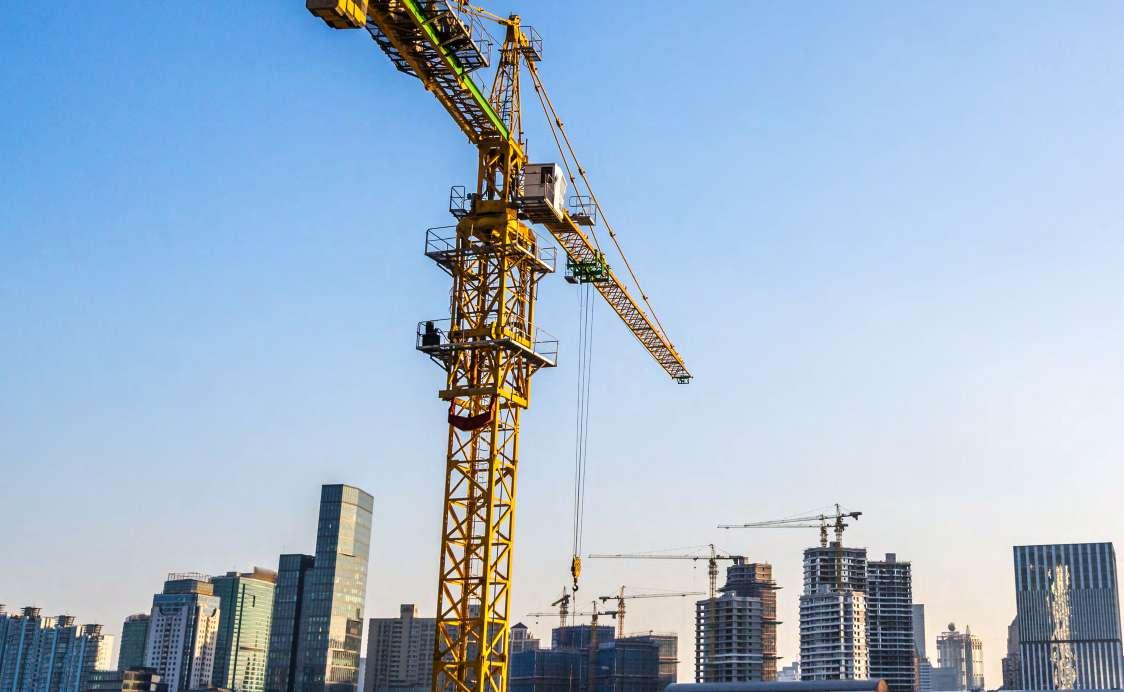
opportunities, and we did so without sacrificing momentum.
The UAE’s pace demands that brokers are not just intermediaries but problem solvers. It takes foresight, networks, and the ability to pivot quickly. When all three are present, cross-sector projects not only meet deadlines but also surpass expectations.
You’re part of a growing wave of Emirati women leading from the front. How do you see the role of women evolving in shaping the UAE’s private sector and strategic industries?
The UAE is setting a global example by empowering women to lead at the highest levels, and I’m proud to be part of this wave. Emirati women are now visible across industries that were
once male-dominated, including law, finance, real estate, and construction. Our contribution is not symbolic; it is strategic.
Women bring resilience, adaptability, and an ability to build trust in diverse environments. In brokerage, these traits are invaluable because success often depends on building relationships and understanding cross-cultural perspectives. Personally, I see my role not only in driving growth at MSKD Global but also in paving the way for the next generation of Emirati women to see leadership as their natural space.
The UAE’s diversification goals require diverse perspectives, and women play a key role in achieving them. Our presence in the private sector is no longer a question of inclusion; it’s a
question of impact, and that impact is growing every day.
In a fast-moving region like the GCC, resilience is often just as important as vision. Can you share a moment where you had to pivot, push through, or reimagine a project under pressure?
Resilience is something every leader in the UAE must embody, because the pace here leaves no room for hesitation. One instance that stands out was when a significant investment project we were brokering faced sudden regulatory changes. For many, that could have stalled the entire transaction. Instead, we pivoted, restructuring the financial model, introducing a trusted local partner, and renegotiating terms that aligned with updated compliance frameworks.
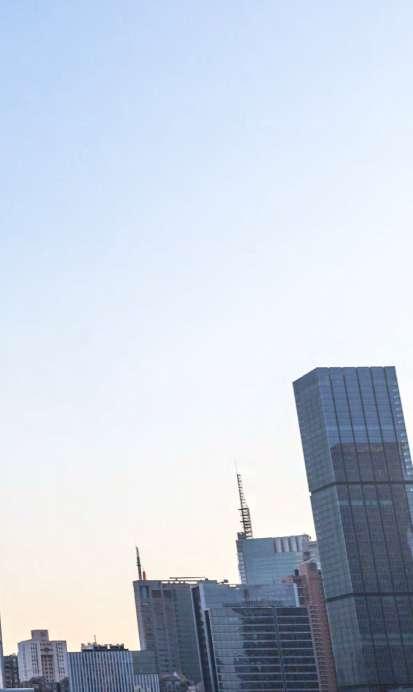
It was an intense period, but it taught me that resilience is about clarity under pressure. Rather than letting challenges derail momentum, you use them to build stronger, more future-proof solutions. The deal not only closed successfully but became a template for how we approach complex transactions at MSKD Global.
Resilience, in my experience, is not about avoiding obstacles; it’s about embracing them as part of the journey and emerging stronger.
From family offices to sovereign funds, you deal with a spectrum of stakeholders. What are the key drivers behind cross-border investment decisions today, and how are they shifting?
Factors beyond returns increasingly drive cross-border investment
decisions. Political stability, regulatory transparency, ESG alignment, and long-term partnerships have become decisive. The UAE excels in offering these, which is why it continues to attract a growing share of global capital.
What has shifted is the focus of these flows. Traditionally, a significant portion of capital is allocated to energy or real estate. Today, we are seeing strong interest in renewable energy, healthcare, technology, and logistics. Investors want to be part of the UAE’s diversification journey, not just extract returns. ESG considerations, particularly sustainability and social impact, have also become central to decisionmaking.
Family offices and sovereign funds alike are increasingly pursuing collaborative models that deliver innovation and knowledge transfer. At MSKD Global, our role is to anticipate these priorities, build trust, and structure deals that create value for all parties while aligning with the UAE’s long-term goals.
Looking ahead, what opportunities excite you most in the UAE’s next wave of growth? And where do you
think the smart money should be paying closer attention?
The UAE’s next wave of growth will be defined by industries that merge innovation with sustainability. Personally, I am most excited about renewable energy, logistics, and digital finance. Each represents a critical pillar of the UAE’s global competitiveness.
Renewable energy from solar to green hydrogen positions the UAE as a key global supplier in the energy transition. Logistics, strengthened by new free zones, airports, and ports, reinforces its role as a trade super hub. And digital finance, from fintech platforms to blockchain-based ecosystems, will underpin the next generation of commerce.
Smart money should focus on opportunities that cut across these sectors. For example, infrastructure that supports both energy transition and logistics, or fintech that facilitates global trade. The fact that international players, such as the U.S. real estate firm we introduced to the UAE, are already choosing this market indicates that the momentum is genuine. The UAE is building not just for today, but for the next fifty years. Investors who align with that vision will reap the benefits.
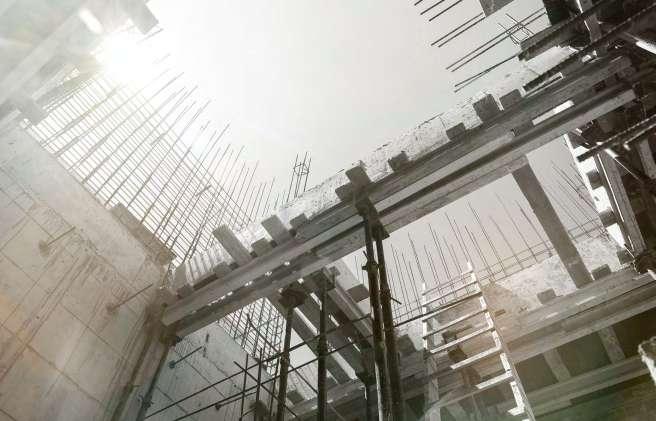
Every aspect of Breez has been carefully curated to embody the essence of resort-style living
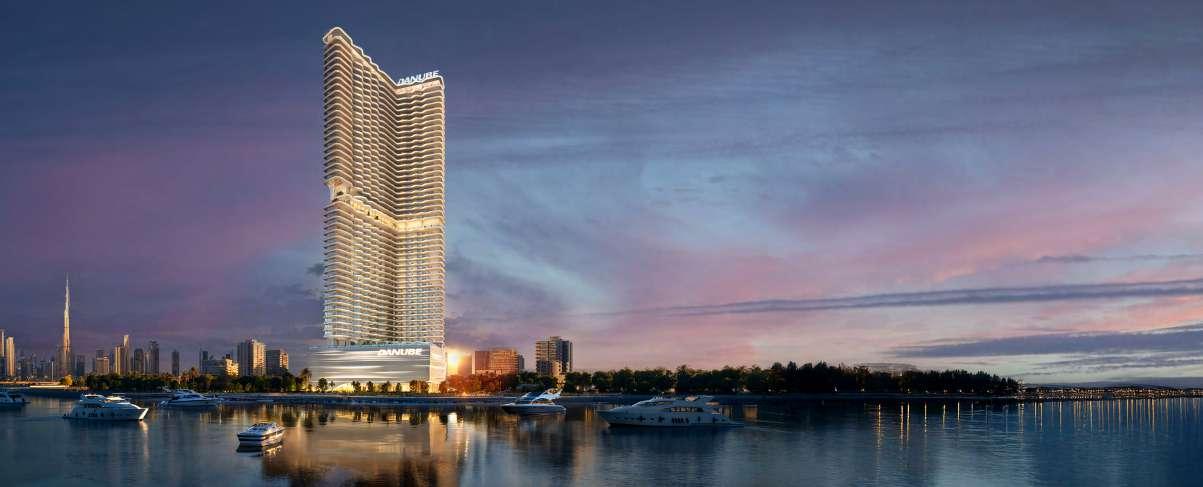
Breez by DAnube
Redefines Luxury LivingAt Dubai Maritime City
Breez by Danube delivers high-end living with a smart 1% payment plan that puts homeownership within reach
• Infinite Sea View apartments – Experience exclusive seafront living with sweeping panoramic views and exquisitely furnished residences.
• Prime and Strategic Location –Inspired by the success of Oceanz by Danube, the brand unveils Breez, the tallest residential tower in Dubai Maritime City. Located close to major hubs such as Jumeirah Beach Road, Dubai Frame, and the Museum of the Future, DMC offers unmatched convenience for residents and strong appeal for investors.
• 40+ Premium Resort-Style
Amenities - An infinity pool with ocean views, extensive indoor and outdoor sports and family facilities, wellness centers, jogging tracks, indoor cinemas, gardens, BBQ decks, and play zones all come together to offer a true resort-style lifestyle with entertainment for everyone.
Danube Properties, one of the UAE’s most trusted and dynamic real estate developers, continues to set new benchmarks in luxury and value-driven living with the launch of its latest
project – Breez by Danube. Rising majestically in Dubai Maritime City as its tallest residential tower, Breez represents a new era of premium waterfront living where panoramic sea views meet world-class design. The project is offered under Danube’s signature 1% monthly payment plan, making the dream of owning a luxury home on the water more accessible than ever.
This launch also marks Danube’s second iconic development and fourth tower in Dubai Maritime City, following the resounding success of
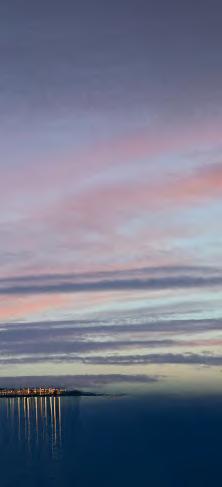
Oceanz by Danube, which set a new benchmark for waterfront residences in Dubai. Building on that momentum, Breez reflects the developer’s vision of shaping Dubai’s maritime district into one of the most sought-after lifestyle destinations. Breez provides an opportunity for both homeowners and investors to secure a rare asset that combines lifestyle, prestige, and financial growth. As waterfront plots become increasingly limited, investing in Breez offers strong ROI and longterm wealth creation.
Standing tall as a 60-storey tower with a built-up area of around 1.5 million sq. ft., Breez by Danube is designed to be a landmark address that embodies luxury from every angle. The development features more than 1,000 units, thoughtfully designed to maximize space, functionality, and views. Breez offers a wide range of residences tailored to diverse lifestyles—ranging from modern studios and spacious 1–4 bedroom apartments to ultra-exclusive Breez Duplex villas, all oriented to capture breathtaking, unobstructed views of the Arabian Gulf. Complementing its residences, Breez will also host a curated selection of retail outlets and restaurants, bringing shopping and dining experiences right to residents’ doorstep.
Every aspect of Breez has been carefully curated to embody the essence of resort-style living. The tower offers over 40 resort style amenities, blending leisure, wellness, and community experiences. Highlights include rooftop infinity pools that open onto sweeping ocean horizons, state-of-the-art wellness and fitness centers, landscaped jogging tracks, outdoor cinemas under the stars, BBQ decks for gatherings, lush gardens, and children’s play zones. Each residence comes fully furnished with elegant interiors, ensuring a seamless, move-in ready experience for owners.
Rizwan Sajan, Founder and Chairman of Danube Group, said:“At Danube, our mission has always been to seamlessly blend luxury with affordability. With Breez by Danube, we’re not just offering homes — we’re delivering a premium waterfront lifestyle with panoramic sea views in one of Dubai’s most prestigious destinations. Dubai has consistently witnessed some of the highest ROI and value appreciation in waterfront properties, and Breez takes this legacy further.
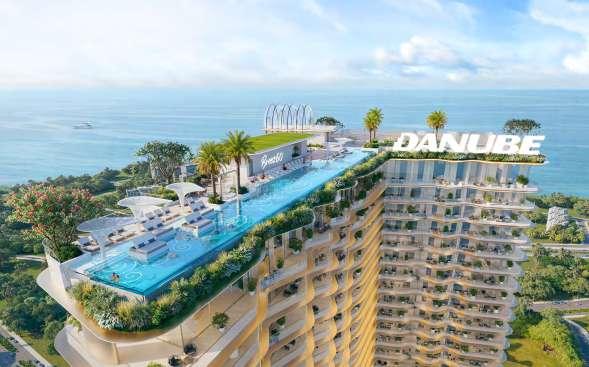
Breez represents a new era of premium waterfront living where panoramic sea views meet world-class design
Building on the success of Oceanz, Breez elevates our vision by combining an iconic location, an exceptional lifestyle, and unmatched investment potential. Supported by our signature 1% monthly payment plan, Breez empowers both homeowners and investors to achieve their dreams without compromise.”
With an anticipated completion date in July 2029, Breez underscores Danube’s hallmark reputation for innovation, affordability, and ahead-of-schedule delivery.
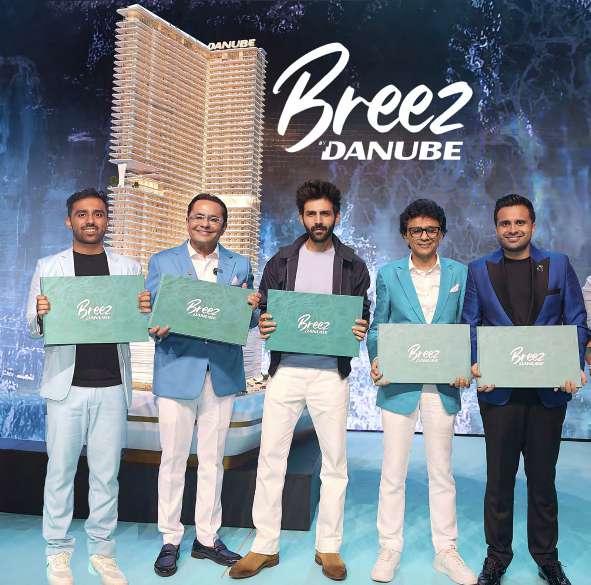
Breez reflects the developer’s vision of shaping Dubai’s maritime district into one of the most sought-after lifestyle destination
Ali Mowahed, CEO of WW+P
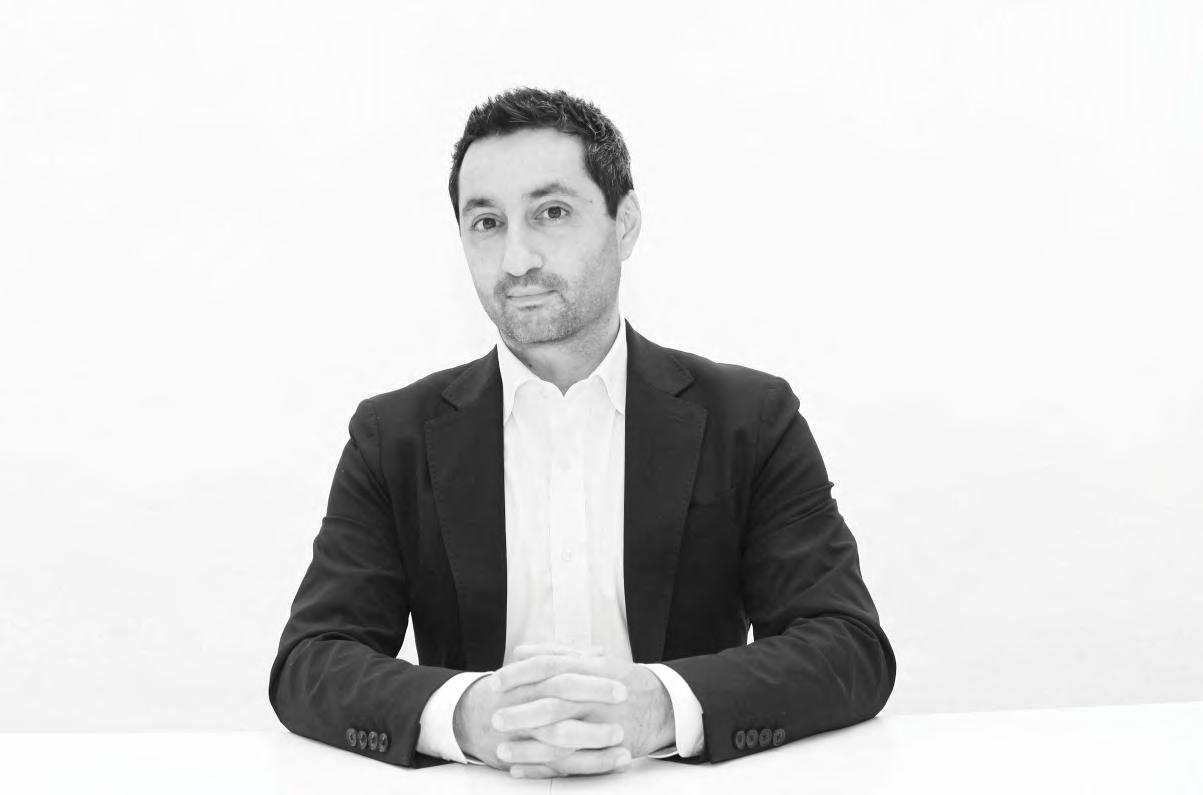
Tracks of Tomorrow
How interconnected public transportation systems are redefining urban mobility and championing sustainability?
Around the globe, we are witnessing a rapid shift in where people live, driven by complex factors such as increasing demand for better economic prospects and access to quality education. A major trend shaping this ongoing shift is large-scale urban migration, with estimates
suggesting that two-thirds of the world’s population will reside in cities by 2050.
Amid these changes, the global sustainability movement further underscores the need for sustainable, resilient, and people-centric transportation systems, which can address several key challenges. For instance, poorly planned transportation infrastructure often locks cities

into unsustainable patterns of congestion, pollution, and social disconnection. In addition, heavy reliance on private cars can exacerbate air, noise, and heat pollution, discourage outdoor activity, and negatively impact public health.
These issues can be addressed by creating well-designed urban public space networks that are linked to key transportation hubs, encouraging residents to adopt a healthy lifestyle through regular physical activity and social interaction. This will also help prevent the ‘community severance’ phenomenon, wherein disjointed and linear infrastructure creates isolated neighbourhoods, with reduced access to active mobility networks.
Furthermore, best-in-class transport infrastructure equipped with attractive and accessible public spaces will help enhance public safety, thereby fostering inclusive and vibrant environments for all. To design such cohesive spaces, it is essential to position human behaviour as the cornerstone of transport design. Leveraging such a holistic approach, designers can create shared spaces, home zones, and walkable urban plans, ensuring that mobility systems cater to the broader community’s needs.
One of the most critical considerations is that transportation systems, once built, are complex and costly to modify, often resulting in decades of inefficiency and environmental strain. Conversely, forward-looking infrastructure can provide lasting benefits—improving air quality, reducing noise, and enabling more liveable neighbourhoods. This is why the planning stage is vital: cities must treat infrastructure not only as physical assets but as cultural and social connectors that define how people move, live, and interact.
Moreover, framing transport infrastructure as an interconnected complex system enhances its adaptability and resilience while ensuring seamless alignment with social, environmental, and cultural contexts. When urban planners adopt this mindset, they design not just for the present but also for future shifts in technology, demography, and climate. Resilient
systems can integrate emerging mobility innovations such as autonomous transit, smart ticketing, and green energy-powered fleets, all while maintaining harmony with the social and cultural fabric of the community.
Upholding this vision, WW+P leverages its global expertise in complex transport architecture to design stations, bridges, and multimodal hubs tailored to meet the smart mobility needs of Gulf cities. Notably, the company’s involvement in landmark projects, such as the Riyadh Metro, GCC Rail Network, and Doha mobility upgrades, demonstrates its ability to integrate global best practices with regional agendas, including ‘Vision 2030’.
The Gulf region, in particular, is at the forefront of embracing transit-oriented architecture. National strategies across Saudi Arabia, Qatar, and the wider GCC are prioritising integrated mobility as a cornerstone of economic diversification, sustainability, and improved quality of life. Mega-projects, such as the Riyadh Metro, are more than just transportation systems; they serve as catalysts for urban transformation, creating new commercial zones, facilitating social inclusion, and setting benchmarks for green infrastructure. In this landscape, WW+P plays a central role in ensuring that these projects strike a balance between efficiency and human-centred design.
Notably, transit-oriented development is not limited to trains, buses, or stations. It extends to the entire ecosystem of public space: pedestrian walkways, cycling networks, bridges, and intermodal hubs that stitch communities together. By designing inclusive, walkable, and safe environments, WW+P ensures that mobility contributes directly to healthier lifestyles and stronger communities. Research has consistently shown that integrated urban mobility reduces car dependency, promotes physical activity, and enhances social connectedness, all of which are critical to the long-term sustainability of Gulf cities.
Transit-oriented architecture does not focus solely on efficient transportation; instead, it helps build cohesive urban spaces that connect communities, lessen environmental impact, and promote sustainable growth. By understanding this, developers can design advanced public systems that meet current needs while preparing for future challenges.
Ultimately, the challenge for urban leaders is not only to build infrastructure but to create enduring legacies. Transit architecture that prioritises people, culture, and sustainability will determine how Gulf cities evolve in the decades ahead. At WW+P, our mission is to partner with governments and stakeholders to shape this future—delivering projects that are not only technically advanced but also socially enriching and environmentally responsible.
Clarke Morton-Shepherd, Head of Markets – Project & Development Services KSA & Bahrain
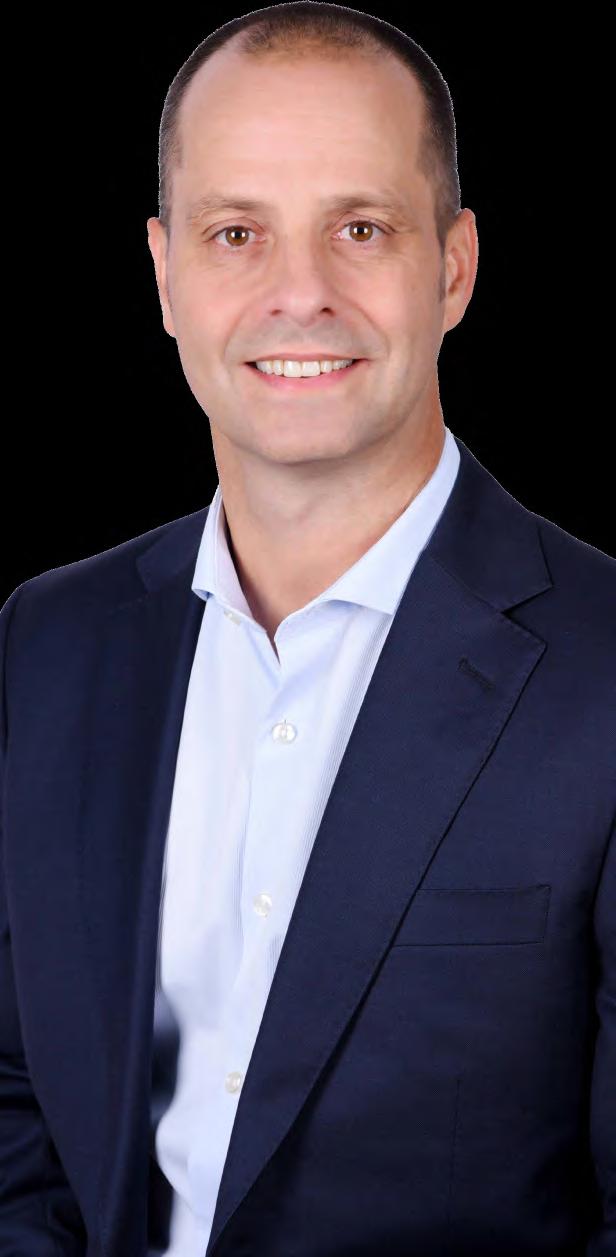
The Living grid
Densification to Foster Sustainable Cities in Saudi Arabia
Saudi Arabia’s urban areas are undergoing a significant transformation, highlighting the Kingdom’s commitment to progress, innovation, and enhancing the quality of life for its citizens. This transformation is particularly evident in Riyadh, the capital and largest city of Saudi Arabia, where three complementary trends are reshaping the urban landscape and contributing to a more sustainable future.
Vertical Development
Riyadh has adopted an approach to advance urban growth through vertical development rather than horizontal expansion, applying compact and efficient urban design principles to create a vibrant, livable, and globally competitive city.
The King Abdullah Financial District (KAFD) is a prime example of this vertical development approach, serving as a benchmark for urban densification in the Kingdom. KAFD embodies the
“10-minute city” concept through its seamless integration of mixed-use assets, including offices, residences, retail, hospitality, and entertainment facilities, within a compact, pedestrianfriendly environment featuring over 60 towers on a land area of approximately 1.6 million square meters. It will also be connected by a monorail system that connects to the wider Riyadh Metro network.
As Saudi Arabia’s first significant vertical city development, KAFD demonstrates how high-density, sustainable living can reduce ecological impact, strengthen community connections, and accommodate population growth while moving away from traditional urban sprawl patterns.
Brownfield Development
Another strategy to enhance urban density is the development of brownfield sites. This involves redeveloping previously built-on sites rather than expanding into undeveloped areas. This stands in direct contrast to greenfield development, which consumes untouched land, often on the urban fringe, and demands the costly construction of entirely new infrastructure. By focusing on brownfield sites, cities can leverage existing investments in road networks, utilities, and social amenities such as schools and hospitals, promoting more efficient resource utilisation. This approach also enhances connectivity, as these projects build upon established community and transport links.
The environmental benefits of this development approach align with Saudi Arabia’s sustainability goals, as brownfield projects typically demonstrate better energy efficiency and a reduced carbon footprint compared to greenfield alternatives.
A notable example of this brownfield
approach at scale is King Salman Park, which is transforming the former King Salman Air Base into a 13.4-squarekilometre mixed-use development that will combine extensive parkland with residential, retail, and cultural components. By building upon existing foundations and infrastructure, the project will optimise resource efficiency while reducing the need for new infrastructure development in undeveloped areas.
The project’s connectivity will be enhanced by the Riyadh Metro, which has exceeded initial ridership expectations and validated the city’s investment in public transportation. King Salman Park will benefit from five Green Line metro stations, providing residents and visitors with direct access to the broader city network. This will create valuable Transit-Oriented Development opportunities, enabling higher-density living while reducing reliance on private vehicles.
True to its “Beyond a Park” vision, King Salman Park will demonstrate how underutilised land can be transformed into vibrant community assets that serve multiple urban functions, creating a harmonious blend of natural space and urban amenities that will showcase excellence in sustainable brownfield redevelopment.
Heritage-Led Urban Regeneration
Beyond brownfield redevelopment, Riyadh’s urban evolution demonstrates a thoughtful balance between preserving cultural heritage and embracing modern development through adaptive reuse of historically significant structures. Rather than demolishing older buildings, heritage preservation is increasingly incorporated into urban planning strategies, creating developments that celebrate historical identity while meeting contemporary needs. This approach ensures that rapid modernisation maintains cultural
continuity, allowing communities to connect with the past while benefiting from modern amenities.
Projects such as Diriyah embrace adaptive reuse to transform historical structures into vibrant, functional spaces that serve today’s residents while preserving architectural heritage for future generations. This largescale, heritage-led urban regeneration project transforms the historic site, including the UNESCO World Heritage site of At-Turaif, into a global cultural and tourism destination by blending traditional Najdi architecture with modern amenities and sustainable infrastructure. The development revitalises the birthplace of the Saudi state as a vibrant heritage destination, offering cultural experiences, educational facilities, luxury hospitality, retail options, and residences. This demonstrates how authentic preservation can be fused with modern urban development practices.
Looking Ahead
While Riyadh’s densification is prominently showcased by large state-funded projects such as KAFD, King Salman Park, and Diriyah Gate, numerous smaller, privately funded developments are also creating denser projects through the redevelopment of brownfield sites. These projects respond to evolving resident lifestyles and aspirations, including the greater adoption of vertical living and public transportation—social trends driving the movement toward more sustainable buildings and livable cities.
As the leading example of urban transformation in Saudi Arabia, the changes observed in Riyadh are likely to spread to other cities across the Kingdom in the years to come. As 2030 approaches, the densification and transformation of Riyadh’s urban fabric, currently underway, must continue at an accelerated pace to achieve Vision 2030’s aspirations.
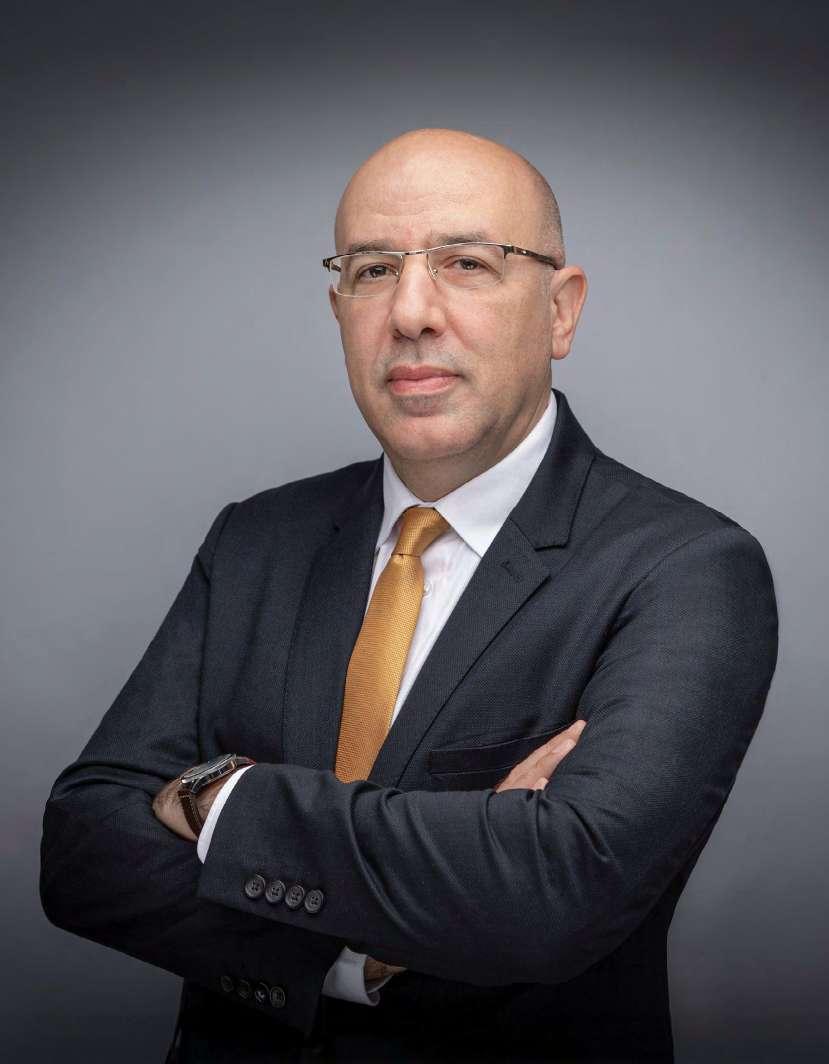
Rewired FoundAtions
With construction responsible for over a third of global carbon emissions, the urgency to rethink materials and methods has never been clearer
The construction industry makes a significant contribution to the Gross Domestic Product (GDP), accounting for approximately 5% globally, although this percentage varies between countries. For instance, it represents approximately 4% in the USA, amounting to USD 790 billion. In the UAE, it constitutes about 12% of the non-oil GDP (USD 370 billion). However, according to estimates by the United Nations (UN), the global proportion of CO₂ emissions from buildings and construction activities stands at 37%, comprising both embodied and operational emissions. While the carbon footprint resulting from building operation currently accounts for 75% of total building-related carbon emissions, embodied emissions from building materials and construction processes are expected to increase to 50% by 2050. Therefore, the UN and the international community are raising their voices for the use of alternative sustainable materials and techniques in construction.
In terms of construction techniques, numerous alternatives have been proposed to support sustainability goals, including the reduction of material waste, minimisation of on-site pollution, and decreased energy consumption through faster construction processes. A study conducted at Heriot-Watt University compared traditional construction methods with innovative approaches. For instance, the research demonstrated that 3D Concrete Printing (3DCP) significantly reduces construction time by an average of 95% compared to insitu reinforced concrete and steel methods. Furthermore, it was found to lower construction costs by 10% and CO₂ emissions by 25% when compared with in-situ concrete techniques. The same study also examined Prefabricated Modular Construction (PMC) as an alternative construction approach. The benefits of PMC lie in its ability to significantly reduce material waste, shorten construction time, and minimise site occupation. For instance, the study found that PMC is the fastest construction technique, over seven times quicker than in-situ concrete construction and three times faster than 3DCP—although it is slightly more expensive. Nonetheless, PMC is widely recognised for its high standards of quality control and improved on-site safety. It is also important to note that the use of Artificial Intelligence (AI) technologies, such as Building Information Modelling (BIM) and digital twins, plays a crucial role in the construction industry. These tools enhance quality control and support sustainability by reducing waste generation, minimising project delays, and improving health and safety on site. For example, studies have shown that incorporating BIM into project planning can lead to cost savings of up to 20%.
Concerning construction materials, the United Nations Environment Programme (UNEP) 2023 report proposed several key actions, including avoiding waste, building with fewer materials, enhancing circularity, shifting to bio-
based building materials (e.g., bamboo), and improving both non-renewable materials and their production processes. However, the choice of which approach to adopt remains dependent on a range of factors, such as local availability, cost, regulatory approval, environmental suitability, cultural acceptance, and the availability of skilled labour.
Compared to other construction materials, cement production is the largest contributor to CO₂ emissions, followed by ceramics and steel. This is mainly due to the extensive use of concrete, which is the second most utilised material on the planet after water. A report from Heriot-Watt University identified nine approaches to decarbonising the cement industry, each with its own associated challenges. While Carbon Capture and Reuse is regarded as the most promising method, the primary challenge lies in reducing the high electricity consumption and associated costs required for its implementation by 2050. In the short term, however, alternative strategies are already being applied, such as replacing cement with industrial by-products like Ground Granulated Blast Furnace Slag (GGBS), fly ash, red mud, ceramic waste powder, and other fine waste materials. It is good to know that concrete can help clean our planet of waste. For example, numerous studies at Heriot-Watt University have explored the use of ceramic, glass, and plastic waste in concrete, alongside efforts to replace cement with more sustainable alternatives. In certain trials, research at Heriot-Watt University has successfully produced high-quality, durable concrete with approximately 40% lower embodied carbon and 22% lower cost compared to conventional concrete. More recently, studies at HeriotWatt have focused on incorporating plastic bottles as fibres in concrete, addressing the growing issue of plastic waste. The results have been promising, demonstrating improvements in both the mechanical properties and durability of the concrete. Notably, each cubic metre of concrete can incorporate the equivalent of 500 water bottles (1.5 litres each).
Another alternative construction material is Cold-Formed Steel (CFS), which is manufactured from recycled scrap vehicles in coil form. A study conducted at HeriotWatt University found that CFS results in 25% lower embodied carbon compared to in-situ reinforced concrete construction, along with a 15% reduction in construction duration.
To advance the transition of the construction sector towards sustainability, it is vital to align with the United Nations’ call to action through three urgent pathways (ASI): Avoiding waste, Shifting to bio-based building materials, and Improving the performance and production of nonrenewable materials. At Heriot-Watt University, we are committed to supporting these strategies through our ongoing research efforts.
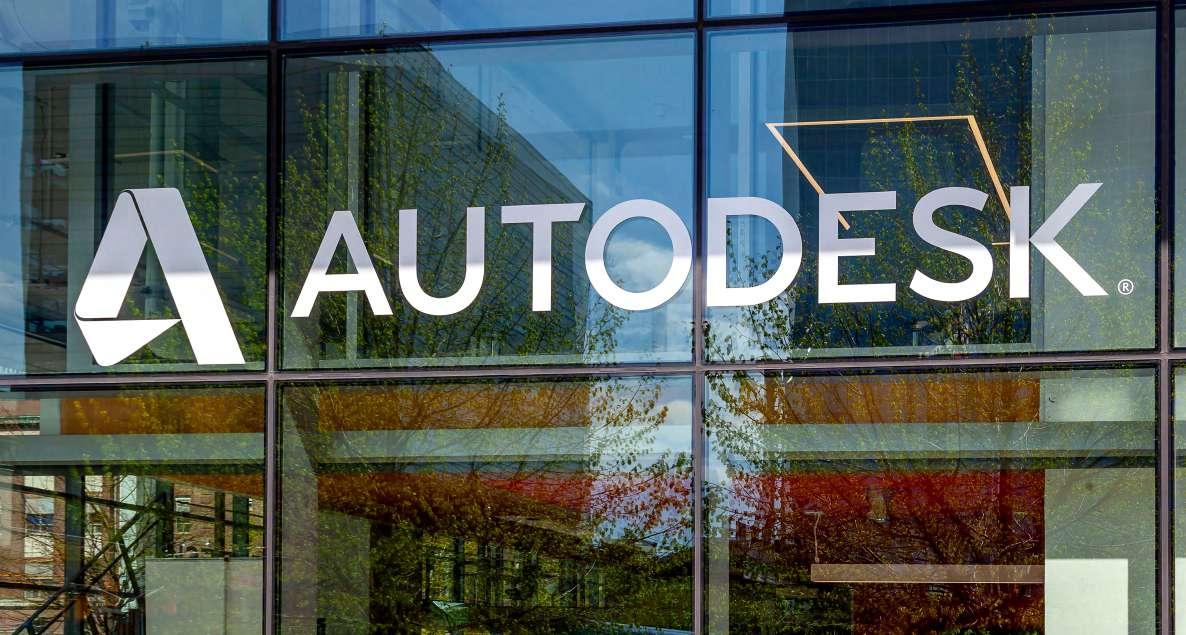
Autodesk Unveils Bold AI-Powered Industry Cloud Innovations at AU 2025
At Autodesk University 2025, Autodesk is announcing major product innovations across its industry clouds, Architecture, Engineering, Construction & Operations (AECO), Design & Manufacturing (D&M), and Media & Entertainment (M&E), demonstrating how AI and cloud technologies are transforming the way the world is designed and made.
Key Announcements:
AECO: Launch of Autodesk Forma Industry Cloud
• First end-to-end, AI-native industry cloud for AECO.
• Autodesk Construction Cloud (ACC) is now integrated into Forma, creating a unified environment that connects design, construction, and operations.
• Autodesk Docs rebranded as Forma Data Management, the central hub for project collaboration, moving from siloes to hypercollaboration.
• Introduction of Forma Building Design (beta) and Forma Connected Clients (starting with Revit), bridging cloud and desktop workflows.
Design & Manufacturing: AI-Powered Fusion Advances
• New generative AI-powered editable geometry in Fusion delivers editable CAD from a single prompt.
• Autodesk Assistant is embedded in Fusion and Vault to automate sketch constraints, toolpaths, searches, and BOM updates.
• Collaboration with Microsoft enables photorealistic context images of Fusion designs via Azure AI, along with seamless export to Microsoft 365.
Media & Entertainment: Unlocking Human Creativity with AI
• Autodesk Flow Studio speeds up animation, lighting, and compositing.
• MotionMaker and Face Animator in Maya dramatically reduce character animation time.
• Autodesk Assistant enables intuitive scene manipulation.
• Studios like ILM and Rising Sun Pictures are already leveraging these tools to meet deadlines faster without compromising artistry.
Scaling AI Across Industries
• Proprietary foundation models for Forma and Fusion are now powering automation and insight across the product suite.
• Autodesk Assistant is scaling as an agentic AI partner across AECO, D&M, and M&E.
Why It Matters:
Industries worldwide are under pressure from labour shortages, supply chain strain, and rising demand. Autodesk’s AI-native industry clouds help customers unlock capacity, reduce waste, and innovate faster, reshaping how housing, infrastructure, products, and entertainment are designed and delivered.
